

Road tripping through Europe with a campervan in 2024 (Itinerary)
With another eventful year behind us, where our trips were less wild and our adventures less spontaneous than they used to be. A year where we were constantly inspired by the beautiful pictures and crazy videos that our social media algorithms presented us.
Since we knew the roads would be calmer in November so we decided to follow our ‘Saved Instagram pictures’ and enjoy a wonderful autumn trip through Europe.
Our bucket list took us from the outskirts of Brussels to gorgeous medieval German castles, from the astonishing Dolomites to the picturesque Venice, and finally from fashionable Milan to the peaceful Strasbourg – How is that for an adventure?
In this itinerary, we’ve listed all the info you’ll need for a road trip through Europe with a campervan; what items to pack, how to rent a campervan, itinerary ideas, and finally: some tips for a fantastic adventure on the road.
Page Contents
Our road trip summarized in numbers.
- 1x stuck in the Italian snow
- Crossed 7 country borders
- 0 Speeding tickets
- … a thousand new adventures and stories to tell about
The roadtrip
After an earlier adventure in which we discovered the Dolomites with a campervan , we immediately knew that we wanted to travel the same way; through Europe with a campervan!
As we see it, this is the easiest solution to travel through various countries while still complying with all the COVID measurements and having a minimal risk for infection; we’d stay in our own bubble while still having all the comfort we needed: large beds, a small kitchen, and even a shower!
Our goal would be to drive from Brussels to Venice and back while discovering the most fabulous places we could find; after all, we had an immense amount of inspiration and a huge bucket list of places to visit.
Essentials for a road trip in a campervan
Are you planning to go on a campervan road trip, but want to make sure you have the essentials with you? We briefly listed the essentials that made sure our trip was a success.
Ecoflow River Pro Powerstation
As content creators, we’re always haunted by our fear of not having enough power, from the fear of being stranded in the middle of nowhere without a GPS to the fear of having a dying camera battery just when you’re about to shoot your favorite location.
Either way: We’ve all been there, so we all know these are valid worries! No wonder why one of Google’s top road trip-related searches is about finding or generating power. While there are various solutions, we found one that put our minds at ease before starting our road trip; The Ecoflow River Pro Powerstation !
In essence, the Ecoflow River Pro is a massive power bank with 2 AC power outlets and a few USB connections, generating enough power to charge our Macbook M1 Pro laptop 13 times, our smartphone 58 times, and our Sony A7III camera over 30 times. Due to its dimensions, the River Pro can usually last 8 hours, being a massive help for every road trip.
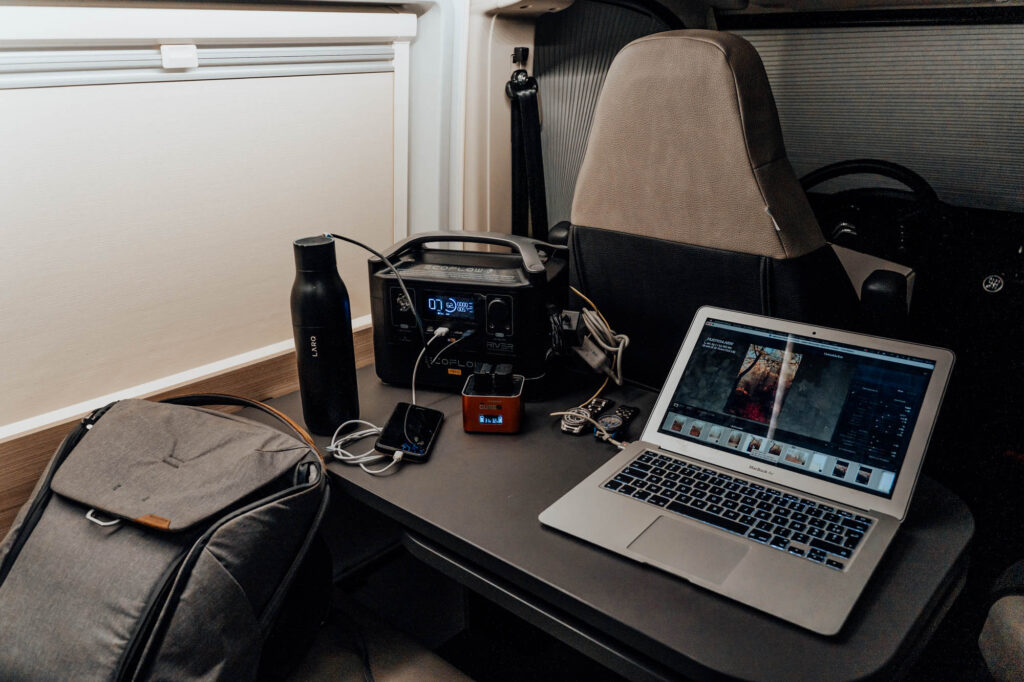
When you’re planning to cross various borders or wander around mountain passes, you’ll have to switch radio stations regularly, or you’ll end up with noise. Our trick? Make sure everyone has made their own Spotify playlist in advance! That way, you won’t be bothered by the noise and leave room for spontaneous singalong moments to occur.
Data Roaming
If you are located in Europe and are traveling through various countries, you’ll need to ensure that your data roaming is enabled on your phone to keep having an internet connection.
You shouldn’t worry about the amount of roaming you use, thanks to the European Union’s roaming regulations which say data providers can’t charge for roaming in the European Union. However, keep in mind: Switzerland is not included in this regulation! So don’t forget to turn off your Data Roaming when entering Switzerland.
What have we learned about road tripping through Europe with a campervan?
Our campervan trip through Europe confirmed something we already knew: that it’s very easy to travel between European countries. A 100 kilometers drive can bring you to a different cultural and diverse community.
Next to this, we had a few other learnings as well.
The ease of a camping site with decent facilities
While traveling in a sustainable campervan, you’ve got different options in terms of camping:
- You could visit an official campsite which has loads of facilities.
- You could park overnight at Highway stops.
- You could wild camp and stay at a new place every night.
Most European countries have different rules and regulations about camping, but generally, they (Switzerland, Italy,…) aren’t allowing wild camping … which makes it technically illegal. However, in most cases, overnight parking where you don’t set up camp or leave in less than 24 hours is allowed.
Our tip? Make sure you can drive off at any moment so that nobody can complain about it.
The thing is: If you’re on the road for over a week, you’ll need to clean your campervan and want a more luxury shower. Don’t hesitate to stop wild camping and pause at a camping site with decent facilities.
The ease of planning
Being prepared for your campervan trip ensures that you can switch gears faster and need to spend less time worrying. The things that helped us a lot were:
- Backup locations. Since we used our itinerary as a guideline, we had the flexibility to skip specific locations because of bad weather. Having backup locations made it less of a hassle to find hidden gems.
- Ecoflow River Pro . We knew we would probably wild-camp a lot, which meant not having the power to charge our electronic devices (laptop, camera,…). Luckily our friends at Dutchtravelshop.nl hooked us up with this mobile power station, which we didn’t have to recharge one single time during our 8-day trip.
The costs Tolls and Vignettes
Something we have underestimated is the fact that most European countries have toll roads, which can make your trip very expensive very fast. Luckily, there are exceptions, such as Germany, Netherlands, and Belgium.
Some countries such as Austria and Switzerland are working with a vignette, which is a prepaid motorway toll in the form of a sticker you typically purchase from petrol stations before you cross the border and which you stick on your windscreen.
Alternatively, you can always avoid tolls by picking alternative routes on Google Maps or Waze, but these will guide you through the smaller roads, resulting in a slower and longer route.
Our tip? If you have the time, save your money and go for the slower, more scenic route. If you’re in a hurry or have a tight schedule: go via the tollways.
Our road trip Itinerary
Since the lockdown started, we’ve been saving Instagram pictures of destinations that inspired us and deserved a place on our bucket list. We’ve added them all to a Google Maps collection and started planning the regions we wanted to visit.
From there on, we casually decided that we wanted to visit the Dolomites, Venice, and Milan. Because the beauty of a road trip in a campervan is that you can make up your itinerary along the way: when you’re experiencing bad weather, you can just start a few 100 km’s and adjust your itinerary as you go.
Additionally, once your start to post Instagram stories or timeline pictures of your trip, people will automatically start to recommend locations that weren’t on your bucket list to start with!
Remember that our style is to have a flexible road trip itinerary and adjust our planning accordingly. As a result, we’ll need an internet connection during our trip, which can’t always be found when traveling to rural destinations like the dolomites.
DAY 1 – Getting started
Our first day was mainly focused on picking up our campervan, unpacking the bags, and learning how to drive the campervan properly. Ultimately we already wanted to drive to our first location so that we could start our hike early!
Pickup Campervan in Brussels
We started our trip by picking up the campervan in Brussels in the afternoon, where we finally met the owners of the campervan face-to-face, received an extensive explanation of how the campervan functions, and finally managed the paperwork (for example; noting down the milage of the car, check for damages, etc).
After unpacking our bags and filling the drawers, we started driving towards our adventure! We left Brussels around 3 pm and drove straight to our first stop in Rheinland-Pfalz. Just when we crossed the steep hills of Malmedy, darkness fell over the highway, and fog started to appear.
Since the darkness prevented us from sightseeing opportunities, we quickly arrived at our first stopover and sleeping place – the “Wanderparkplatz” in Nothweiler on the German-French border . This parking is located in the middle of the woods, which explains why we came across some wild boars on our way to the parking spot.
Wegelnburg – Wanderparkplatz Nothweiler
After (wild) parking at Wanderparkplatz Nothweiler, we looked up at the sky and noticed how beautiful the stars were in the sky. We decided to unpack our Nanlite Pavotube II’s light tubes and used them to illuminate the (unlit) hiking trail, looking for the perfect spot to stargaze.
We decided to follow the winding hiking trail that crosses the German-French border until we found an open spot, which we used to capture the stars.
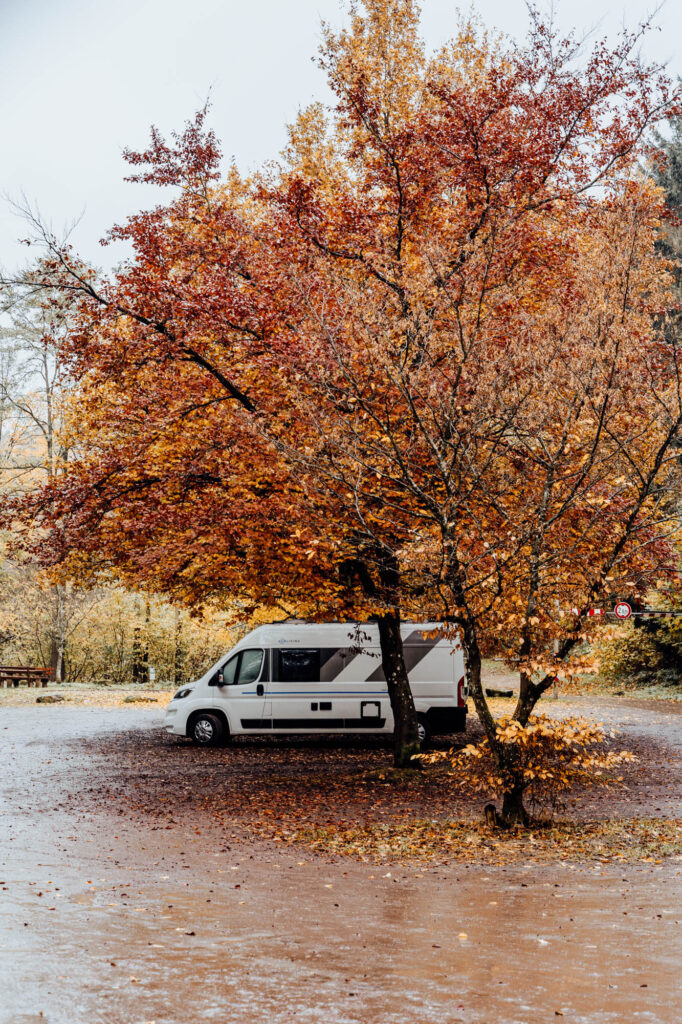
Day 2 – Chasing castles
We knew in advance that during our road trip to Venice, we had to pass through the German provinces of Rhineland-Palatinate and Baden-Württemberg. Both regions are known for their medieval castles, of which most have a panoramic view.
Our goal was to visit the most impressive castles on our route to Venice.
Wegelnburg, Germany
Wegelnburg , a ruined castle located in a forest on the French-German border, is best known for its panoramic view and incredible sunrise.
We wanted to witness that specific 7 am sunrise, so to observe this, we had to start our hike at 6 am, where we followed the zigzagging hiking trail to the Wegelnburg. This took us 5 kilometers, regularly crosses the German-France border, and passes by several other ruins on its way. The hike was covered in darkness since the sun was still about to set, making it an authentic experience. However: seeing the sunbeams roll over the mountains with such a fantastic panoramic view was just … unreal.
Be aware tho: the entrance of Wegelnburg is surrounded by fencing, so at first, we thought it was closed to visitors, but nothing could be further from the truth!
We found a shorter hiking trail on our way back, which brought us directly to the village, only 200 meters walk to the Wanderparkplatz Nothweiler.
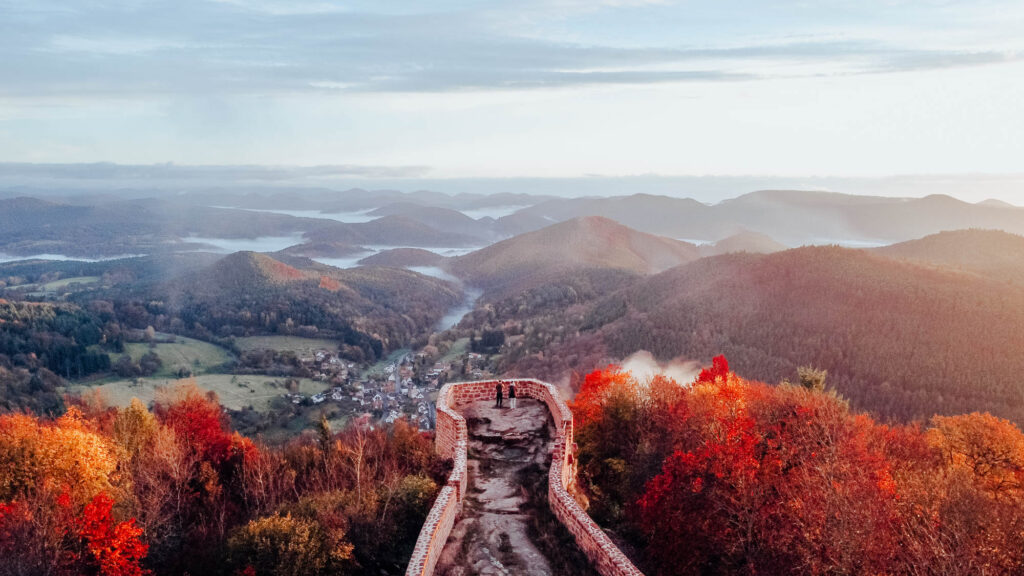
Schloss Lichtenstein, Germany
To make our route to Venice even more interesting, we aimed to visit interesting stopovers every 2 to 3 hours (+- 200 to 300 km). In this instance, we drove towards Schloss Lichtenstein : a 12th-century fortress built on top of an 800-meter high cliff.
We noticed that the castle was managed from a commercial point of view, where everything involved a cost: parking, entering the courtyard, etc.
Nevertheless, the panoramic view over the valley and the fantastic color palette of the surrounding trees, hills, and valley made it worthwhile. It also struck us how beautifully everything had been restored and how detailed they had for their sculptures.
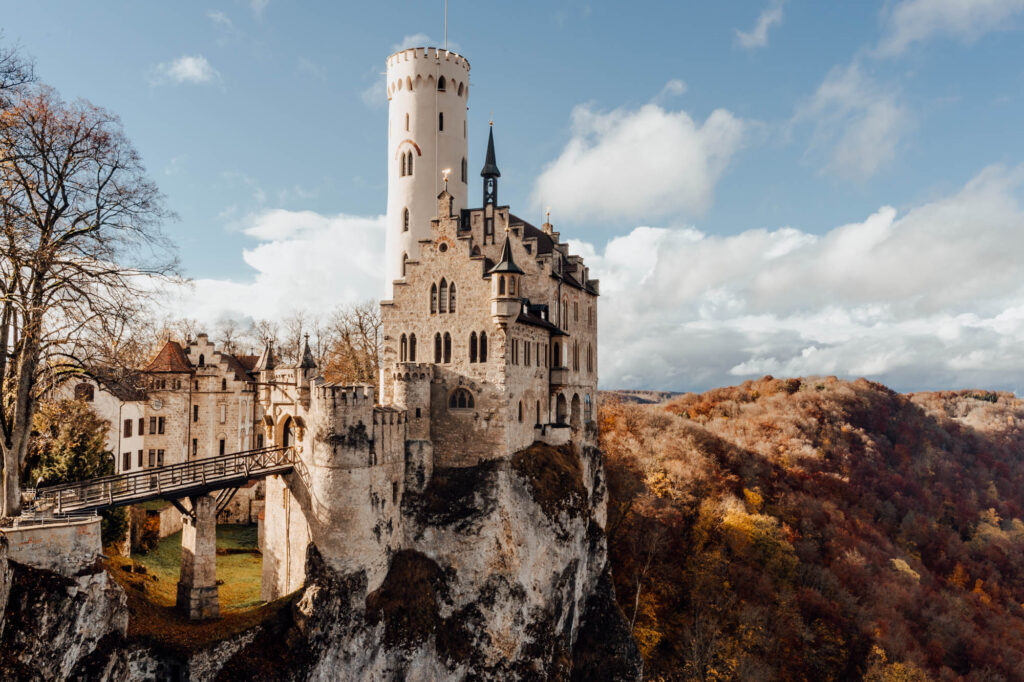
Hohenzollern Castle, Germany
Located less than 40 kilometers from Schloss Lichtenstein, you can find Germany’s most visited castle: Hohenzollern Castle! The castle has been known as “The Crown of all Castles” ever since 1267. Reason enough for us to visit it and admire it with our own eyes!
Our tight itinerary wouldn’t allow us to stop by the Hohenzollern Castle for an extended visit, so we decided to admire the castle from Zeller Horn’s legendary viewpoint ; It’s the mountain range located about 1.5 kilometers away, at the same height as the fortress. As a result, you have the best view of the castle and the surrounding area.
We have to be honest tho: it took us a while to find the exact location of the Zeller Horn viewpoint, but once we found it … we loved it! You can judge for yourself …

Plansee, Austria
While we had already discovered some of the most amazing places, we decided to push our luck: our goal was to visit Plansee lake, located just beyond the Austrian border, and search for its very instagrammable viewpoint that looks down over the lake.
Unfortunately, a combination of traffic jams and mandatory stops (buying our Highway Vignette to enter Austria) caused us to arrive just after sunset. We learned during our road trip through the mountains that as soon as the sun has set, it’ll be pitch dark in a matter of minutes. The same goes for our visit to the Plansee lake: as soon as we crossed the bridge, we couldn’t move without using our Nanlite lights.
After our short stop at the lake, we decided to continue our journey to a place to sleep for the night: the legendary Innsbruck city.
Innsbruck city
We’ve visited Innsbruck city numerous times, and we may even say that it’s our favorite city in Austria. This is because of its beautiful mountain background, architectural gems, alternative culture, and Innsbruck’s importance on the winter sports community.
Once we arrived, we decided to head downtown to reminisce memories from the past and see how the historic buildings (such as the Liberation Monument on Landhausplatz and the building with the golden roof) are lit up at night.
We decided to end our evening at the Hard Rock cafe to explore the same downtown area the next day after dawn before the shops opened.
Day 3 – Arriving in the Dolomites
During our previous road trip, we visited the Dolomites and missed out on a few of our bucket-list locations. Since the Dolomites were only a slight detour from our route to Venice, we decided to give some of these places a second chance … but not before we wandered around Innsbruck first!
Innsbruck, Austria
Imagine the feeling of waking up, opening the doors of your campervan, and looking out across the streets of Innsbruck with their impressive mountains as a backdrop. Well, that’s precisely how we woke up!
After a quick shower in our campervan, we decided to wander around the city again and rediscover the same historic buildings, but this time using daylight.
Another reason why we stayed in Innsbruck is that we’ve been following Holzkern Watches on Instagram for ages and noticed we could visit their shop in Innsbruck. We made an appointment, and were welcomed by their store manager Stefan who explained to us more about Holzkern’s philosophy and lifestyle, showed us how an automatic watch works and how to replace the chains of a wristband.
During our visit to the store, we fell for the charms of the La Concorde watch and the Intergalactic watch , which we took home as a reminder of our road trip.

MMM Corones
Since we visited the Dolomites last year, the MMM Corones (being designed by Zaha Hadid) have been on the top of our bucket list. When we entered the region around the Dolomites, we noticed that the lakes weren’t frozen and the roads were not covered with snow … so our first reaction was to visit MMM Corones.
Unfortunately: the ski lifts were closed because the season hadn’t started yet, and the roads were now permanently closed and accompanied by prohibition signs. So one thing is sure: MMM Corones can only be visited in a dignified manner when the ski lifts are open.
With pain in our hearts, we had to make a cross over our visit from MMM Corones, but luckily there are plenty of other places to visit in the region … so we decided to drive to the legendary Lago di Braies .
Lago di Braies
Lago Di Braies – also known as Pragser Wildsee – is the biggest lake in the Dolomites and is known as the most beautiful lake of the Alps because it’s surrounded by beautiful pine forests, towering limestone peaks, and included a unique boathouse. As a result, most people know it as (“Lago di Instagram”).
The last time when we visited the lake, it was totally frozen and covered in snow. This setting certainly had its charm, but we also wanted to visit Lago di Braies before the snow fell. Unfortunately, there was so much fog that we still couldn’t admire the lake in its best condition. Next time!
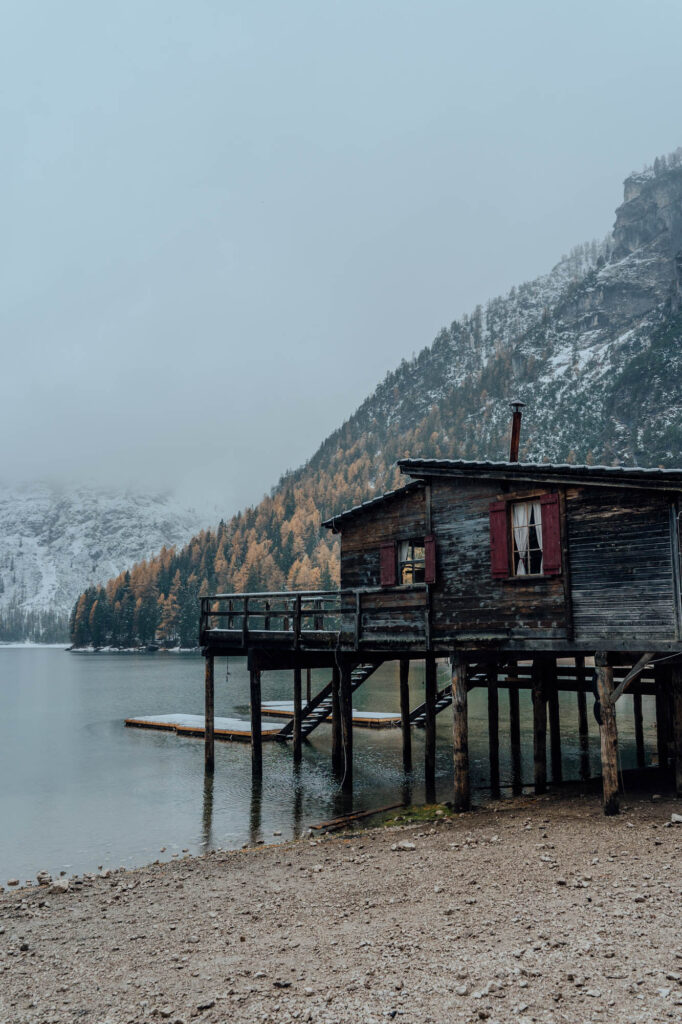
St. Johann church in Villnostal
Noticing that the sunset was approaching fast, we decided to revisit one of the most legendary sites in the Dolomites: St. Johann in Ranui Church in Val di Funes, Villnostal.
While driving over the winding roads, we noticed that the weather conditions would be utterly different from our previous visit: there wouldn’t be any snow, but the church and its surroundings were covered in fog.
Unfortunately, we didn’t notice too much of the sunset since the fog blocked all the sunbeams. By the time we left the church, it was already pitch dark.
Alpe di Siusi & Earth Pyramids Renon
We decided to drive up to Compatsch to experience the sunrise at Alpe di Siusi to save some time. Last time, we missed this view since it’s located in a nature resort and has a curfew for cars: no-one can drive by between 9 am and 5 pm.
This time, we could access the road to Compatsch, but while we were driving up the mountain, it started to snow, almost to the level of a snowstorm. When we arrived in Compatsch, our van got stuck, and a local farmer had to pull us out of the snow.
According to the local weather forecast, it would snow for the entire night, and we would miss the sunrise anyway since it would be covered in fog. In fear of getting stuck, we decided to go back down the mountain and skip our visits to both Alpe di Siusi and the Earth Pyramids of Renon.
We ended up spending the night at a truck stop next to the road.
Day 4 – The road to Venice
We knew it wouldn’t be the shortest route to Venice, but we decided to drive via Santuario Madonna Della Corona and Lake Garda since it captured our imagination.
Santuario Madonna Della Corona
What’s more astonishing than an ancient place of worship, located 800 meters into the side of a cliff? We wanted to experience it, so we drove towards Santuario Madonna Della Corona, only a 15 minutes drive from Lake Garda (the Italian part)!
We parked at Localita Santuario 1 in Spiazzi, on a parking lot that usually wouldn’t allow campervans and mobile homes, but we decided to risk it since it was empty. The reason for this might be the thick fog that stood over the mountain, on the fact that it’s not the most touristic period to visit Santuario Madonna Della Corona.
Although we could not fully admire the Santuario Madonna Della Corona due to the thick fog, the location continued to impress us. We also had the opportunity to check our fitness by climbing the steep stairs to access the sanctuary.
After arriving, we learned that this sanctuary is a place of pilgrimage that already existed before the year 1000! We’ve listed our findings in this specific destination article about Santuario Madonna Della Corona .
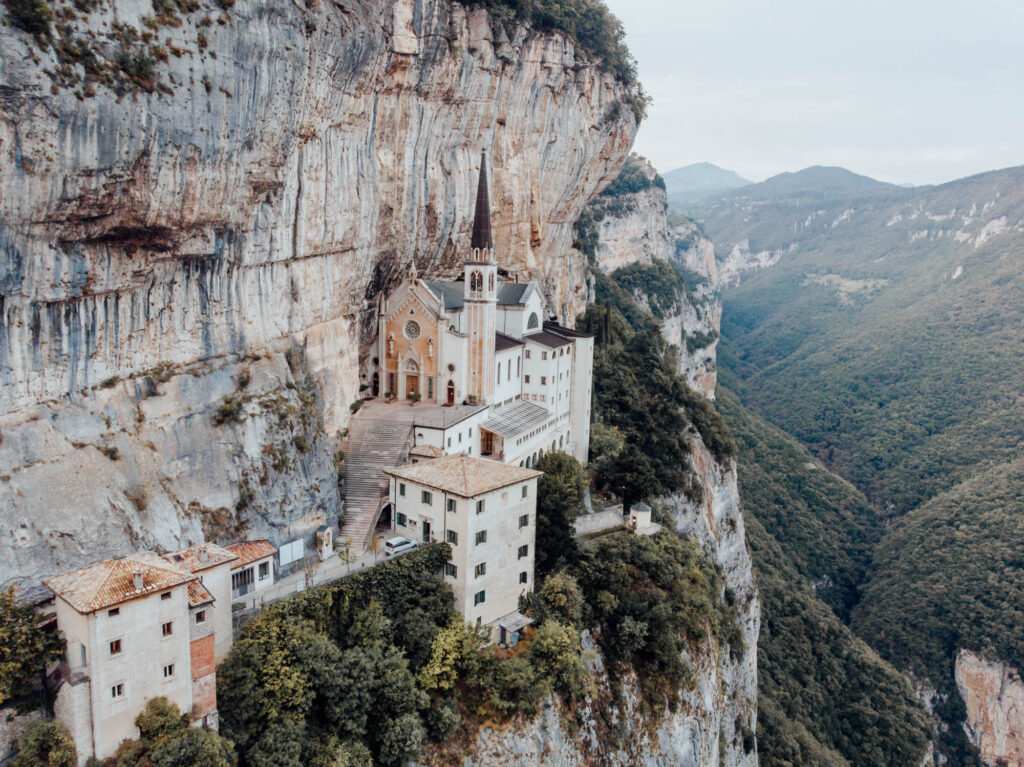
Lagi di Garda
In less than 24 hours, we went from a small snowstorm in the Dolomites to a 20-degree summer breeze at Lake Garda.
The small town was quite dead, considering the tourist season was already over here, so we just briefly wandered through the city. Our goal was to catch the sunset in Venice before 5 pm anyway, so we quickly left the lake.
Venice City
Where we spent the past few days in quiet or remote regions, with endless possibilities to park and wild camping … Venice would be a bit more crowded and strict. That’s why we decided to spend the night at the campsite of Venezia village, which had some fantastic facilities: decent showers, an elegant restaurant, and a clean swimming pool.
An additional advantage was that there is a bus stop in front of the campsite, with busses that go directly to Venice. The ride to the city takes no longer than fifteen minutes and drops you off at Piazzale Roma.
By 4 pm we arrived at the tourist center, where we were overwhelmed by history and architecture! Strolling with our camera in hand, we followed the small corridors of the city, arriving at a (relatively empty) San Marco square just after sunset.
Unfortunately, The darkness brought in some shady types, from aggressive salespeople who punched us on the shoulder to get our attention to pickpockets popping up from sketchy streets and following us until we noticed them. As a result, we decided to skip the rest of the city and return the following day.
Pro-tip; Gelateria il Doge’s ice creams are known as the best in the old town.
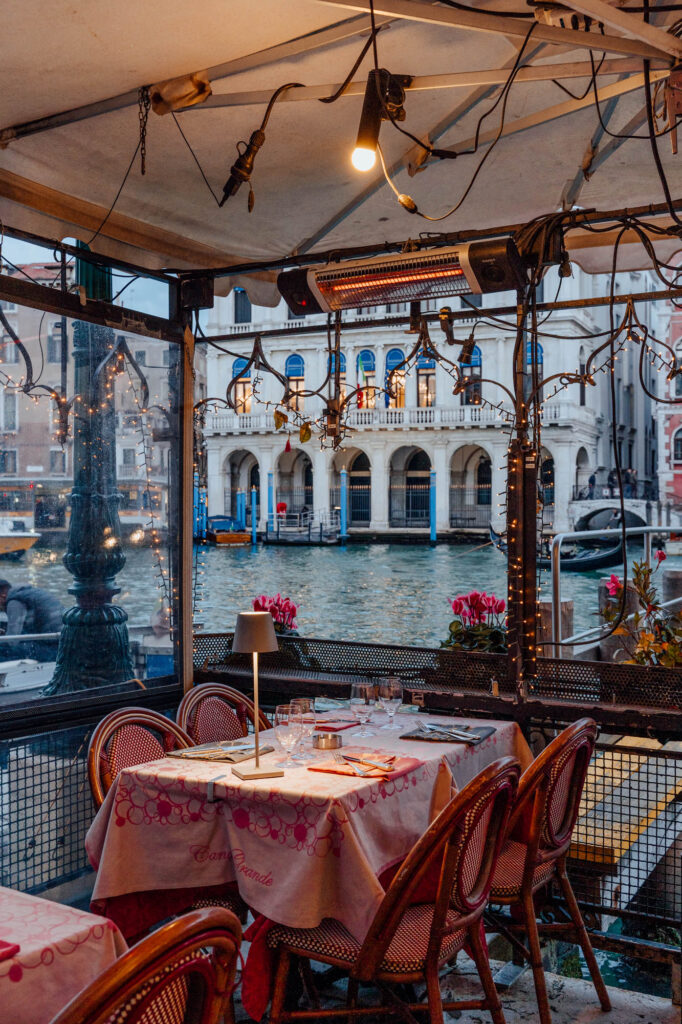
Day 5 – From Venice to Milan
By now, our road trip was already halfway through, so after enjoying Venice’s charms in the morning, we had to start on our way back. This time we chose to spend the night in the city of Milan since we wanted to discover some of their ancient buildings as well.
Be aware: Something we didn’t realize before going on this trip is how many toll stops you can find in Italy, especially between Venice and Milan.
Venice, the city of canals
Since we ended our wanderings around Venice early the night before, we decided to sleep in first… and then head back into the city!
This time we parked our campervan in Venezia Tronchetto Parking because we were only planning to stay in the city for a few hours. Ultimately, we stayed for 4 hours and realized that we had paid more for this parking spot (without any facilities except) than staying an extra night in the camping Venezia Village. Yikes!
Unlike the previous evening, where we walked to San Marco square via Basilica S.Maria Gloriosa dei Frari, we now had the time to take a different route: via Basilica di Santa Maria della Salute.
Milan and its impressive Duomo di Milano
Since we took our time to wander around Venice, we arrived in Milan during rush hour and had to endure several traffic jams before arriving in “Camping Village city of Milan.”
The campsite’s reception was already closed, but luckily google maps had a function that allowed us to know perfectly see what public transport connections would lead us to the Duomo di Milano. Our trip was a bit more delicate since we needed to transfer from the bus to the metro, in a place we had never visited before. Luckily we had google maps to fall back on.
Since this route to the center of Milan took almost an hour commute, we only found the time to discover the illuminated cathedral and the neighboring streets. To make it easy for us, we also made a quick McDonalds stop here.
Day 6 – From Milan to Strasbourg
We had less than two days to cover 1000 kilometers and go from Milan to Brussels. This gave us enough time to visit the center of Milan and then leave for Strasbourg in the afternoon.
Milan, Italy
Since Milan is such a beautiful city accompanied by ancient architecture, a sense of fashion, and art … we made a small “bucket list” of locations that we had to see during our visit to the city center.
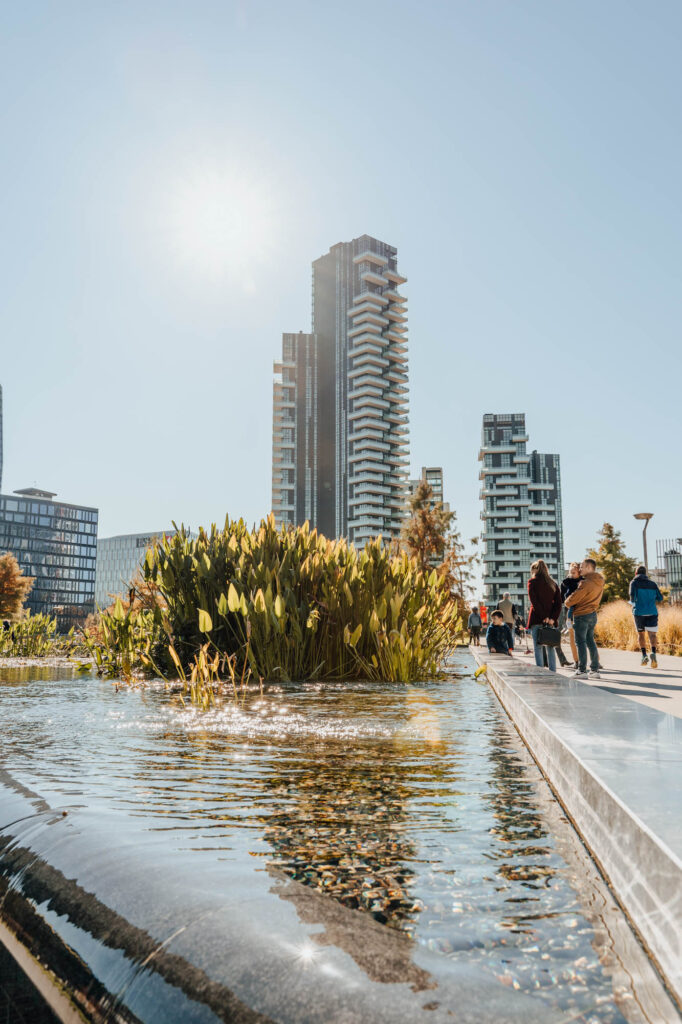
Castello Sforzesco
Castello Sforzesco – also known as Sforza Castle – is a fortress that was built during the 14th century.
Over the centuries, the fortification was destroyed in various wars, by the troops of Napoleon and during World War II. It was extensively rebuilt in 2005 and currently houses several of the city’s museums and art collections. That’s why it’s currently one of the most famous landmarks in Milan.
Arco della Pace
Arco della Pace is a huge triumphal arc located where the ancient Romans built their city gate. The gate is called “The Porta Sempione” and refers to the district it was located in.
While the origin of the arc can be found in 1807 when Napoleon was in command of the city, the construction of the “Arch of Peace” was paused when the city of Milan fell under the control of the Austrian Empire. The construction of the Arch was resumed in 1826 and was finally completed in 1838.
Bosco Verticale
The Bosco Verticale – or Vertical Forest – are two residential towers built in 2014 and are already known as the most iconic and most recognizable buildings of the last decade in Milan.
Pictures of the building often surface on Instagram and Pinterest, as it is iconic for its pioneering incorporation of a vertical forest.
Duomo di Milano
The Milan Cathedral, known as Duomo di Milano, is without any doubt the most known building in Milan.
It is logical too since they started the constructions in 1386 and only finished working on it more than six centuries later: in 1965! What’s even more impressive is the fact that the cathedral contains over 3400 different statues.
Strasbourg, France
As mentioned: Milan is still a 1000km drive from Brussels, so we had to keep going if we wanted to back on time! We decided to pass via Switzerland, which meant buying a new vignette when crossing the border and disabling our roaming data.
Once we arrived at Strasbourg, we parked at Parkplatz Friedhof since it was close to the city center, and parking on a Sunday would be free of any charge.
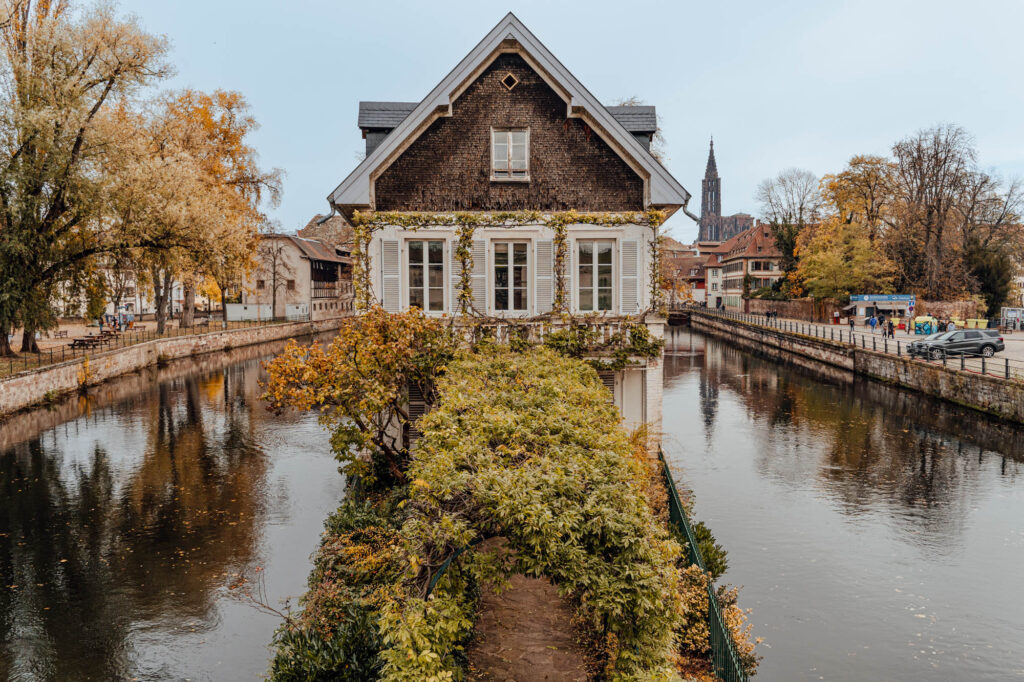
Day 7 – Back to Belgium
Every fairy tale comes to an end, and unfortunately, ours too. It was the last day where we were actually on the road; we wanted to enjoy it until the end. That is why we chose to discover Strasbourg in the morning and pass quickly via Veves Castle in the afternoon.
Being a university city on the border of France and Germany, Strassbourg is a very characteristic and cultural city, with enormous history. Proof of this is the street art that can be found all around the city or the ancient buildings scattered around the city (such as their cathedral).
We had some help from some locals; we were advised to discover the part of the city known as “Le Petit Paris.”
Vives Castle
What’s a better way to end our trip than to visit a 12th-century castle? We arrived rather last-minute: 10 minutes before the castle closed, so we didn’t have the chance get to explore it from the inside … but the sunset made up for it!
If you don’t know about Veves Castle yet, make sure to read the extensive guide we wrote, it contains the history of the castle, the legends around the castle and how to reach it.
A fascinating part about the castle is that the same family has owned it for the last 800 years, and that is classified as an exceptional heritage by the region of Wallonia. As a result, the castle is referred to as Sleeping Beauty’s castle.
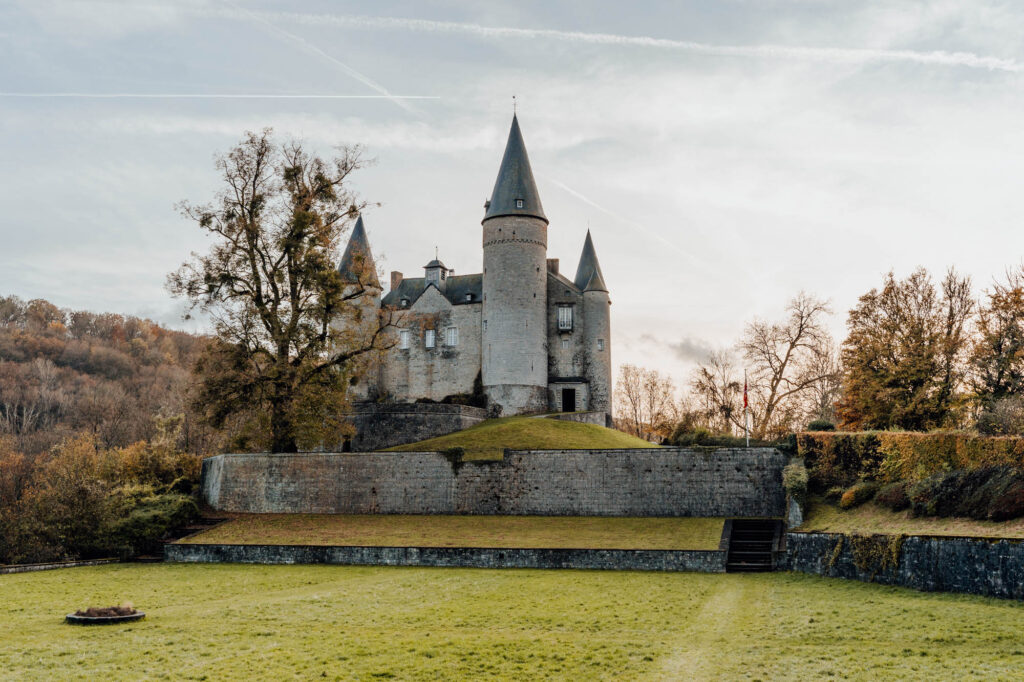
Day 8 – returning the campervan
Our last day was mainly focused on bringing back the campervan, where we had to pack our bags, clean the campervan in a self carwash, and ultimately fill in the paperwork again ( check for damages, note the number of kilometers we’ve driven,…).
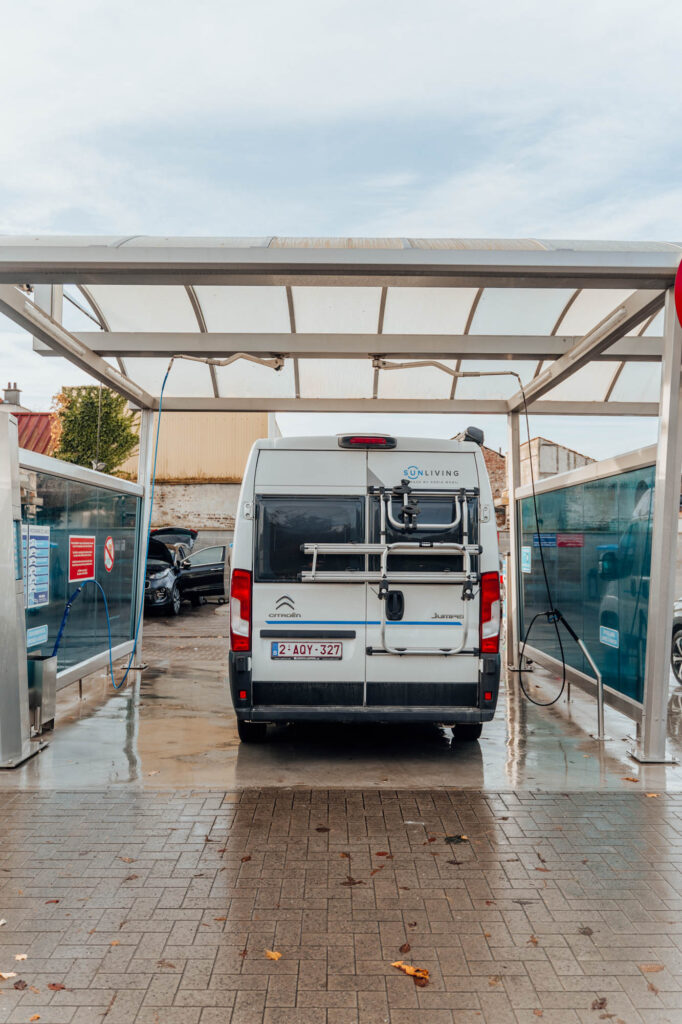
Save to Pinterest
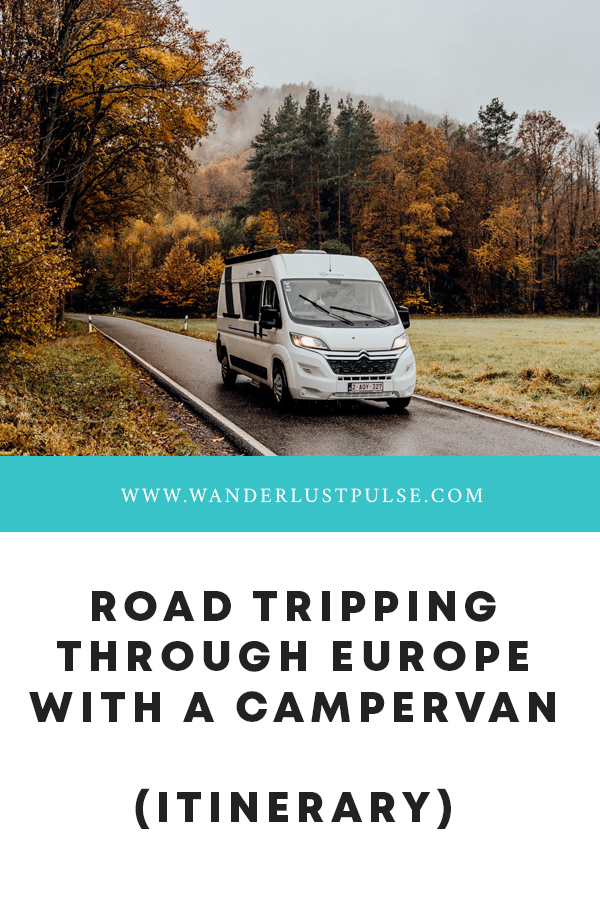
Share this:
Hey there! I'm Elliot Clennam, a passionate photographer based in Brussels, Belgium. My love for capturing the essence of my surroundings has led me on countless adventures, from exciting road trips to bustling city escapes.
Similar Posts
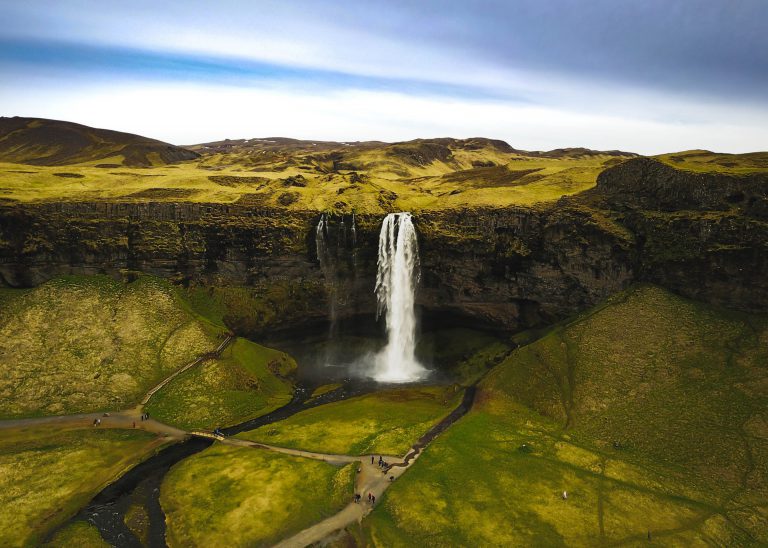
What you need to know about visiting Iceland
Iceland is known as being a beautiful country with striking landscapes, astonishing waterfalls and erupting volcanoes. However, to plan…
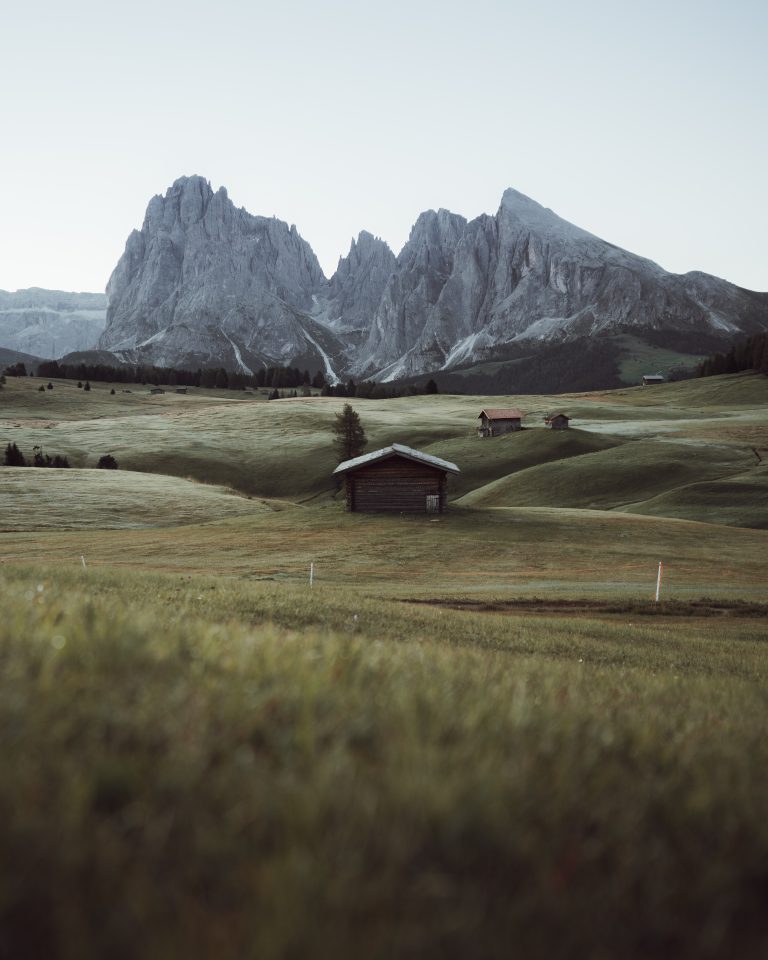
Alpe Di Siusi, housing the most known cabins in the Dolomites
The Alpe Di Siusi – also known as Seiser Alm – is one of the most known mountain plateaus…
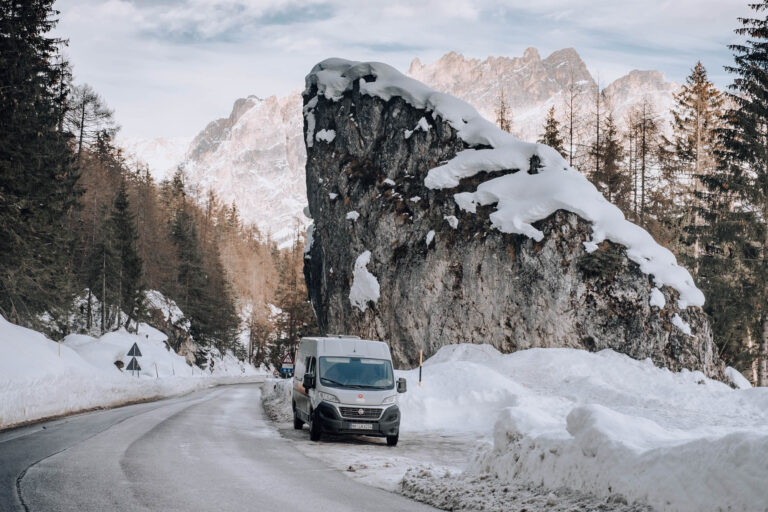
Visiting the Dolomites with a Campervan in 2024 (Itinerary)
The Italian Dolomites are known to every landscape photographer as one of the most spectacular places on earth, covered…

Discover the architectural side of Brussels
It’s always hard to begin exploring a big city as Brussels when you’re looking for the most beautiful buildings….
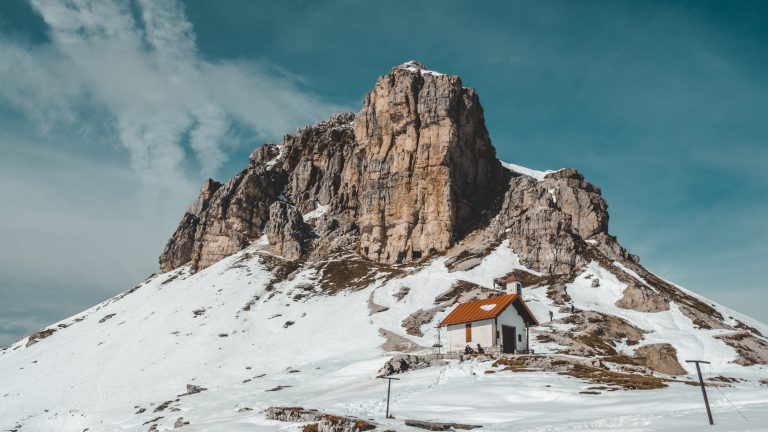
Top 5 best hikes in the Dolomites, Italy
Le Corbusier, a famous French architect, once said “The Dolomites are the most beautiful natural architecture of the world”…
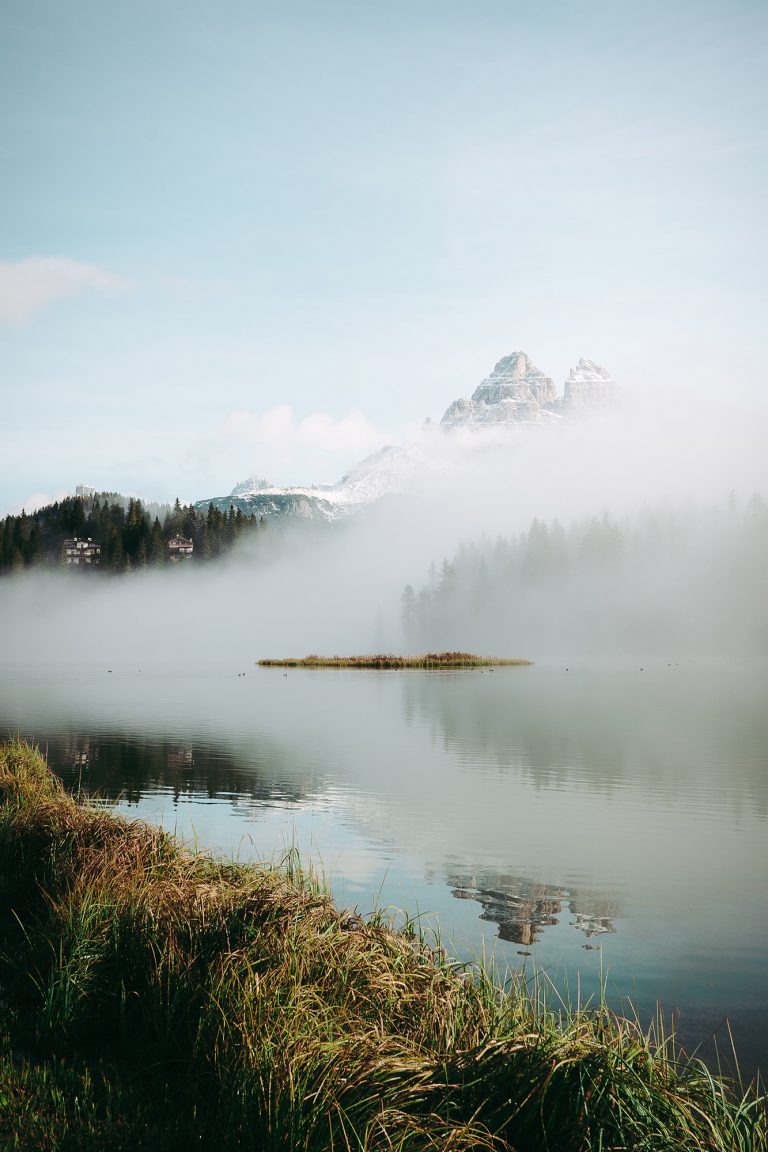
Lake Misurina, possessing the purest air in the world
Lake Misurina – known for its special microclimate – is an amazing place to hike around. Here is everything…

happy when abroad
your compass to happy adventures
10 European Campervan Routes – Inspiration for your next Road Trip
No doubt traveling around in a campervan emits a feeling of freedom and awakes everyone’s adventurous soul. And Europe has numerous options for campervan routes to take! It is the perfect continent to explore different countries, cultures, and sights within one single trip and have a once-in-a-lifetime road trip experience. As for me, living in Germany and therefore quite in the middle of Europe, I love to explore all the neighboring countries and cities. Therefore, I have compiled 10 different European campervan routes , from which you can pull inspiration for your next road trip adventure. All suggested routes are usually recommended for around 2-3 weeks , but of course, you can easily adapt them to your travel plans.
Have fun planning one of these European campervan routes and see you on the road!
Disclaimer: This article may contain affiliate links. Without costing you anything extra, the small commission will help me produce more free content for you. For more information, please refer to my privacy policy .
Table of Contents
1. Slovenia and Croatia
Route: Lake Bled – Ljubljana – Piran – Pula – Zadar – Split
Suggested duration : 2 weeks
Overall length: 826 km (9 hours of driving)
Going on a Balkan road trip through Slovenia and Croatia is the ideal way to see many amazing places in a short time without breaking the bank. The suggested route offers the perfect combination of adventurous nature activities, relaxing beach days, and city sightseeing. Starting at Lake Bled , a magical place in the middle of Slovenia, you will have the chance to experience the country’s beauty in many ways. For more inspiration regarding this place, make sure to check out my list of the best things to do at Lake Bled . After some fun activities at the lake, you will continue your route to Ljubljana , the charming capital of Slovenia.
The small and colorful town of Piran will be the next stop on your Slovenia road trip itinerary . This place will amaze you with its picturesque old town, narrow alleys, and sunset views from the town wall. Even though the town is very small, there are quite a few interesting things to do in Piran .
The campervan route leads you over the Croatian border and into the historic city of Pula . Must-see activities in Pula include visits to the Roman Amphitheater, the Augustus Temple as well as the vibrant markets. After doing some sightseeing, it is time to move on along the Croatian coast to Zadar . The city is well-known for its historic ruins, churches, and a photogenic old town. The last stop on this road trip is Split . You definitely cannot miss the Diocletian’s Palace as well as the Peristil Square in the middle of the city when spending one day in Split . I recommend spending some relaxing last days on Split’s beautiful beaches.
2. North Germany, Denmark & Norway
Route: Hamburg – Hirtshals – Kristiansand – Stavanger – Bergen – Oslo
Suggested duration: 3 weeks
Overall length: 1,500 km (23 hours of driving)
Budget : €€€€€
This is one of the European campervan routes that are perfectly suited for adventure-seeking couples or friends, who want to see and experience a lot and have a sufficient budget available for the trip. Starting in Hamburg , one of the most beautiful cities in Germany, you will head north to the very top of Denmark . Of course, if you have enough time, other stops in Denmark, like Copenhagen or Aarhus, are possible.
In Hirtshals , you will take the ferry to Kristiansand in south Norway . From here, you are open to experiencing the variety of fjords, mountains, national parks, and other beautiful places that southern Norway has to offer, at your own pace and within your itinerary. Make sure to visit the charming towns of Stavanger and Bergen during your trip. After many days of hiking and other nature-based activities, you will arrive in Oslo , the capital of Norway. Must-see activities in this city are visiting the Viking Ship Museum , strolling around Frogner Park, and taking a tour of the Akershus Fortress. For more inspiration, make sure to read my ultimate Southern Norway road trip itinerary .
3. Switzerland and North Italy
Route: Zürich – Lucerne – Bern – Turin – Milan – Bologna – Venice
Suggested duration: 2 weeks
Overall length: 1,000 km (12 hours of driving)
Budget: €€€€
From the mountains to the sea – this could be the motto of this beautiful European campervan route. Starting in Zürich , the biggest city in Switzerland, you will admire the old buildings in the city center, eat the most delicious cheese fondue, and stroll around the lake. Besides its picturesque mountains and lakes, Switzerland offers beautiful cities as well. On this road trip, you will also explore Lucerne and Bern , the country’s capital.
From Bern, you will head south and enjoy some Italian travel experiences . Turin , which lies in the region of Piemont, is well known for its outstanding architecture and cuisine. Besides many other things to do in Turin , the city is the ideal place to slow down in an Italian café and take photos of the aesthetic baroque buildings. Milan , the international center of fashion and design, as well as Bologna , the vivid and historic town, are other stops on your way through Italy. After spending several days strolling through pretty alleys and eating pizza, you will end your road trip to Venice , one of the most popular places to visit in Northern Italy . Even though the city is considered to be rather expensive, there are quite a few tips for visiting Venice on a budget and enjoying your trip to the fullest!
4. Austria and Budapest
Route: Innsbruck – Zell am See – Hallstatt – Graz – Vienna – Budapest
Suggested duration: 2-3 weeks
Overall length: 900 km (11 hours of driving)
Budget: €€€
This Europe campervan route takes you across Austria to the Hungarian capital Budapest. On your way through the mountains, you will experience a city break in Innsbruck , explore the ski region Zell am See, and visit the picturesque town of Hallstatt. On your way to Hallstatt, you can also make a stop in Salzburg, the city which is famous for the great musician Mozart. In both Graz and Vienna, you will find numerous beautiful Renaissance and Baroque-style buildings. Vienna, the vivid capital of Austria, will welcome you with many bars and restaurants as well as a beautiful castle (Schönbrunn Palace). From Vienna, it is only a 2.5-hour drive to the next capital – Budapest. Must-do experiences in Budapest include bathing in the famous thermal pools (Széchenyi Baths), going on a typical Danube river cruise, and walking across the Chain Bridge.
5. French Rivera and Catalonia
Route: Nice – Saint-Tropez – Marseille – Montpellier – Lloret de Mar – Barcelona – Tarragona
During this trip, you will travel alongside the sea the whole time and get plenty of vitamin D. Starting in Nice or Saint-Tropez at the Côte d’Azur, you will begin your Southern France road trip in one of the sunniest and wealthiest corners of France. I recommend you continue your trip alongside the French Rivera by exploring the cities of Marseille and Montpellier. Once arrive in Spain, you can enjoy the party life in Lloret de Mar before heading to Barcelona, where you have the chance to visit the world-famous Sagrada Familia, try all the Spanish food, relax at the beach, or go shopping in the city center. You will see, there are countless things to do in Barcelona! From here, a trip to Tarragona is worthwhile as well. The city in southern Catalonia offers the perfect combination of ancient culture, lovely beaches, and adventurous amusement parks.
6. Andalusia and Portugal
Route: Málaga – Marbella – Gibraltar – Seville – Faro – Lagos – Lisbon – Porto
Overall length: 1,200 km (13 hours of driving)
This campervan route is perfect for all sun-seeking travelers and city-hoppers out there. The more time you can allow for this itinerary, the better! There are numerous cute places along the route which are all worth a stop. Malaga , the starting point of this itinerary, is one of my favorite European cities and the perfect vacation spot in Andalusia. The next stops are the picturesque city of Marbella as well as the British overseas territory Gibraltar . Make sure to plan enough time to visit all the beautiful historic buildings in Seville.
From Seville in Spain , you will drive across the Portuguese border and straight to the beautiful Algarve , the most southern region of Portugal. Both Faro and Lagos are THE destinations for having an incredible time at the Algarve and there are numerous beautiful beaches in Lagos and Faros. If you are eager to see more of the country, you should continue your trip to Lisbon , the charming capital of Portugal. For good reasons, the city on the Atlantic coast is regularly rated as one of the most beautiful cities worldwide. The last stop of this beautiful route is Porto .
7. Switzerland and France
Route: Bern – Lausanne – Geneva – Lyon – Clemon-Ferrand – Bordeaux – La Rochelle – Nantes – Paris
Overall length: 1,500 km (17 hours of driving)
This route is perfect for travelers who want to explore the different regions of France and seek a good mixture of cities and nature. Starting in Bern , the capital of Switzerland, you will explore the Western region of the country with its glittering lakes, mountain peaks, and picturesque cities of Lausanne and Geneva. From Lyon, you will drive through France’s breathtaking landscape to the Atlantic coast. In Bordeaux, the center of the famous wine-growing region, you will be immersed in French cuisine and culture. Heading further north, the beautiful cities of La Rochelle and Nantes are already waiting for you. Paris , the city of love, marks the end of this stunning route. The metropolis is one of the most visited cities around the world for good reason. As for me, I simply cannot get enough of all the Paris bucket list activities .
8. Germany and The Netherlands
Route: Munich – Nuremberg – Rothenburg ob der Tauber – Frankfurt – Mainz – Cologne – Rotterdam – The Hague – Amsterdam
Overall length: 1000 km (12 hours of driving)
Located in the middle of Europe, Germany , and the Netherlands are perfect starting points for European campervan routes in any direction. However, they also offer great routes themselves. Especially southern Germany with its beautiful cities Munich, Nuremberg, and Rothenburg ob der Tauber is very attractive to international travelers. The vibrant cities of Frankfurt and Mainz should also be on your Germany Bucket List .
Continuing your trip along the Rhine River, you will not only drive through the country’s main wine regions but also discover historic castles. After you have discovered all the things to do in Cologne, the city with the iconic cathedral, you will cross the border to the harbor city Rotterdam in the Netherlands. In The Hague, you will finally reach the sea. Ending your trip to Amsterdam , the country’s lively capital, you will be amazed by the variety of colorful markets, lovely canals, narrow houses, and art museums.
9. Paris and South England
Route: Paris – Rouen – Brussels – Antwerp – London – Brighton – Bournemouth – Stonehenge – Bristol
Overall length: 1300 km (17 hours of driving, including ferry)
The last one of all European campervan routes promises lively metropolises, sightseeing tours, and the spectacular coast of southern England. Not only will you cover three amazing capitals (Paris, Brussels , and London) and three countries (France, Belgium , and England) during one single vacation, but also have a ferry trip included. If you are willing to explore lively cities such as London on a budget , discover beautiful coastal towns, eat the best English food, and visit a world heritage site ( Stonehenge ) all at once, this campervan route in Europe is perfect for you!
10. Italy Roundtrip
Route: Milan – Genoa – Cinque Terre – Pisa – Florence – Siena – Rome – Naples – Amalfi
Overall length: 1000 km (14 hours of driving)
Italy is one of the best destinations to enjoy the European summer and one of my favorite European campervan routes. During this marvelous Italy road trip , you will get to know the different regions of Italy, explore the picturesque place Cinque Terre , and enjoy all the things to do in Naples . You will learn about history in Rome , go shopping in Milan , drink wine in the Toscana , and take photos at the Leaning Tower of Pisa . On top, you will swim in the sea in Amalfi , marvel at ancient art masterpieces in Florence , and stroll around the harbor front in Genoa . I promise, this road trip, no matter if it’s with your friends or a solo trip to Italy , will not only be a lot of fun but also recharge your batteries completely!
You have finally decided on a route but you don’t know what to pack for the trip? Maybe my ultimate campervan packing list can help you out! Need more road trip inspiration? What about an epic Eastern Canada road trip ?
Which of the European campervan routes do you like most? What are your suggestions for the best campervan routes around Europe? Let me know in the comments down below!
Useful Travel Resources
- 🏨 Find and book accommodation on Booking.com
- 🎡 Fill your journey with unforgettable experiences with tours on GetYourGuide
- 🚘 Need a car for your trip? Hire it with Rentalcars
- ✈️ Buy cheap flight tickets with WayAway
- 🔰 Insure your trip with Insubuy
Don’t forget to save these European campervan routes for your next trip!
Sharing is caring:.
- Click to share on Pinterest (Opens in new window)
- Click to share on Twitter (Opens in new window)
- Click to share on Facebook (Opens in new window)
- Click to share on WhatsApp (Opens in new window)
- Click to share on LinkedIn (Opens in new window)
- Click to share on Telegram (Opens in new window)
We have often thought that a camper van trip around Europe would be a lot of fun. So great to see such a great variety of routes to choose from. We have travelled a few of these routes by car and train. But was really interested in the routes that included Germany or Croatia. Saved this post for when we start real planning!
You’ve done a lot of driving through Europe; I’m so impressed! This is super legit. I’ve heard that road trips through Europe were the way to go but I have been skeptical. This post makes me reconsider driving through Europe. These guides are really helpful; otherwise, I wouldn’t even think about it… but since you’ve done the work for me, maybe we can give it a go after all! 🙂
Slovenia looks like such a wonderful place to visit! You’ve captured the vibe of the place very well – and the maps are perfect!!
Thank you Amy! You should definitely add Slovenia to your Bucket List! 🙂
I really loved this post. I’ve been thinking about doing a campervan trip somewhere, so this came in at the perfect time. I liked that you noted how pricey the trip could be it always helps to plan your budget accordingly.
Thanks a lot. I feel like right now is the best time for a campervan trip! 🙂
Leave A Comment Cancel reply
Your email address will not be published. Required fields are marked *
Notify me of new posts by email.
This site uses Akismet to reduce spam. Learn how your comment data is processed .
2 Days in Washington DC – Your ultimate Itinerary
How to spend two days in copenhagen – 15 things to do & see, the ultimate one day in bruges itinerary for a perfect city trip, the perfect travel itinerary for 2 days in dubrovnik, discover more from happy when abroad.
Subscribe now to keep reading and get access to the full archive.
Type your email…
Continue reading
- About Emily
- About This Blog
- Personal Posts
- My Travel Stories
- Central America
- North America
- South America
- Tours and Activities
- Transport and Travel
- Packing Tips
- Travel Gear
- Travel Fashion and Beauty
- Work with me
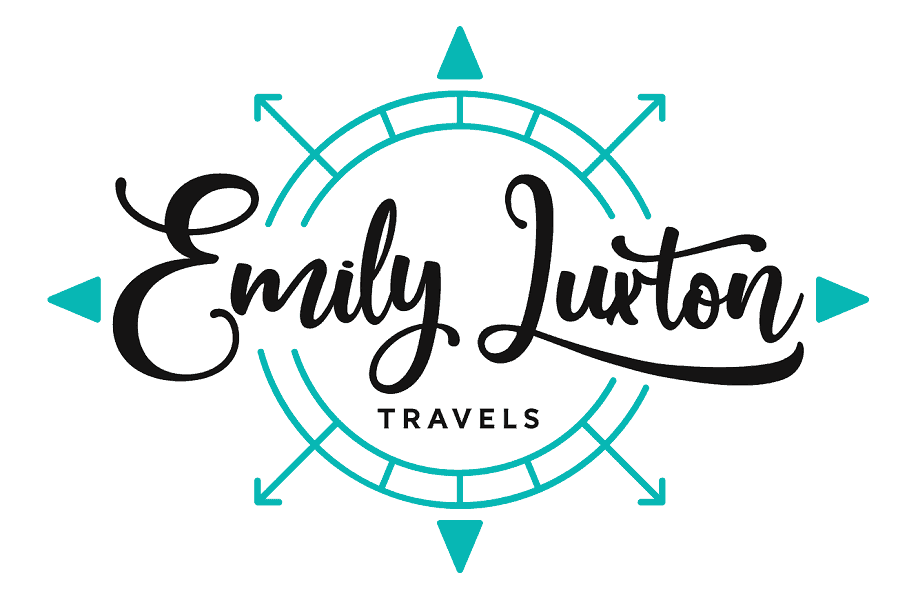
5 of the Best Places to Visit in Europe for a Caravan Tour
- Europe , Travel
- Last Updated 29 February 2024
Some posts on this site contain affiliate links. If you book or buy something through these links, I earn a small commission (at no extra cost to you). Take a look at my privacy policy for more information.
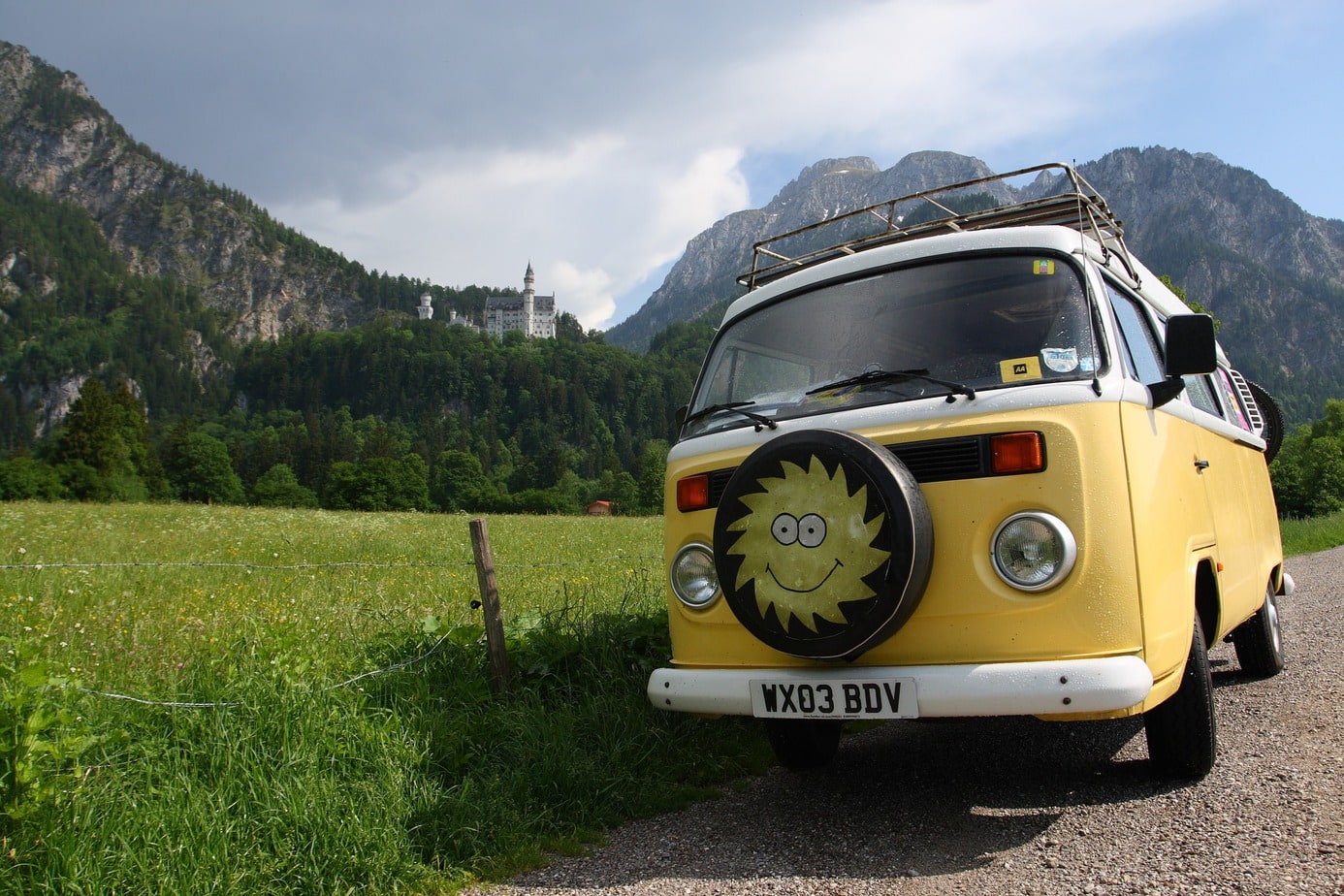
With some of the most scenic drives in the world, the majority of roads in excellent condition, and plenty of wonderful (and relatively cheap) campsites, Europe is a fantastic place for a caravan holiday.
When you have your accommodation with you, it can give your whole holiday a real sense of freedom and adventure. You can make the journey part of the trip; enjoying spectacular views as you drive across the continent.
If you’re coming from outside of Europe , you can rent a caravan or campervan when you arrive. Plan a road trip to see some of the best sites in a country – or a couple of different countries.
This list showcases some of the best destinations in Europe for a caravan trip. Most of them are in Schengen Visa countries , which means tourists from outside of Europe can visit them with just one visa – perfect for a multi-destination road trip!
If you’re travelling from the UK, you could hire your campervan here (or bring your own if you have one) and drive to Europe via the Eurotunnel to Calais.
Best Places in Europe for a Caravan Tour
Catalunya and the costa brava, spain.
With varied landscapes – from beaches to snow-topped mountains – Spain is a great place to visit in your campervan. You can have the choice of a “lazing on the beach” type holiday, or a more active adventure – or both!
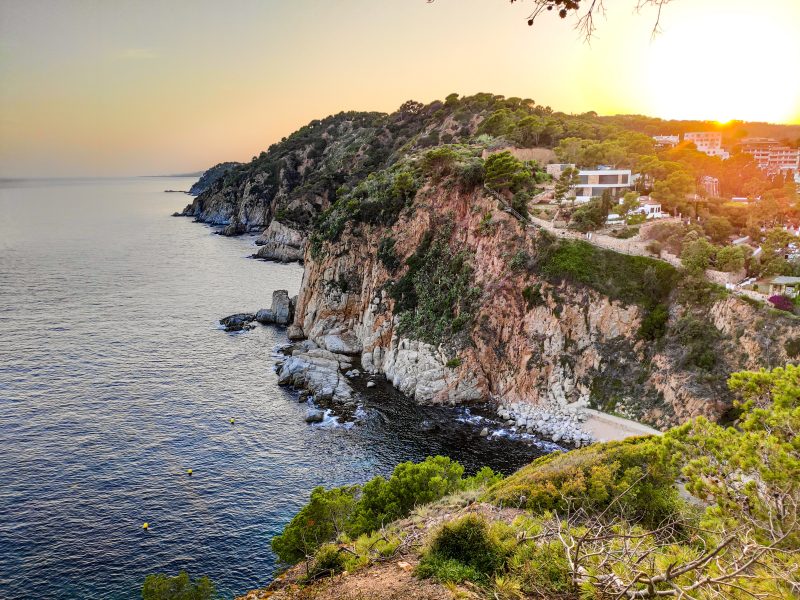
The North-Eastern corner of Spain, Catalunya and the Costa Brava, is a perfect region for a caravan tour or road trip. A sea-lover’s heaven, Costa Brava offers miles of dramatic coastline, lined with winding coastal pathways, rocky coves, and serene beaches.
Inland, the region of Catalunya boasts beautiful historic towns like Begur and Girona. There are also acres of national parks and perfect hiking in the Pyrenees, and plenty of serene vineyards and olive oil farms . Bliss!
READ MORE: Best Places to Visit in Costa Brava
Lake Garda, Italy
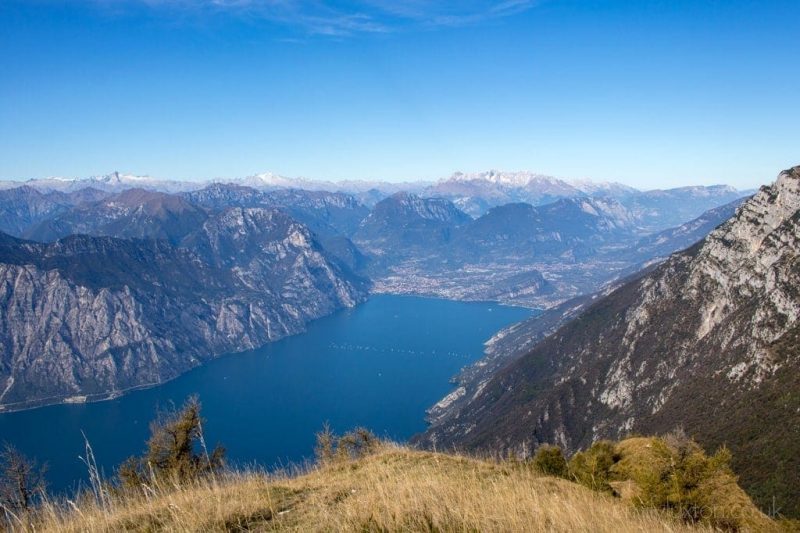
From pine woodlands and olive groves around Lake Garda in the North, to history, religion and ruins in Rome towards the South… Italy has something for everyone and makes a fabulous place for a caravan tour.
With endless supplies of stunning coastline, plenty of huge national parks, and one of the best-loved cuisines in the world, you’re spoilt for choice in Italy. But for a caravan tour, a trip to Lake Garda and the surrounding region is perfect.
Explore the historic northern cities of Verona, Milan, and Venice. Go adventure-seeking in the mountainous Trentino region . Or laze at one of the many stunning beaches around Lake Garda.
Plus, at just over 700 miles from Calais to Lake Garda – through the spectacular mountains of Switzerland – a trip here is within relatively easy reach of the UK.
Normandy, France
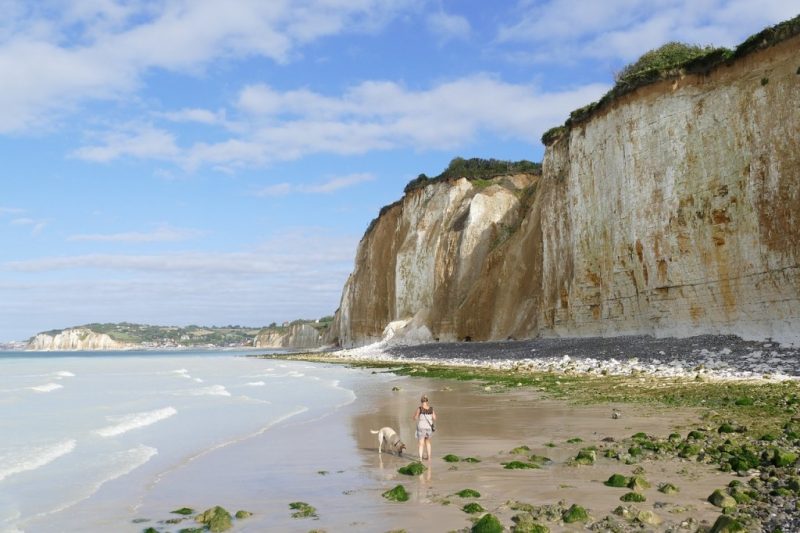
Normandy is a beautiful old French region, boasting 350 miles of coastline and picturesque views. With the historic D–Day beaches and iconic white cliffs, Normandy’s coastline is both beautiful and educational.
Normandy is also a fantastic campervanning destination, with several excellent caravan sites to park at. Better still, easy access via the Eurotunnel and numerous ferry crossings puts the north of the country within easy driving distance of the UK, making it easy to combine England and France on one caravan tour!
History enthusiasts will want to visit the five D-Day Landing Beaches , still known by their WWII code names: Utah, Omaha, Gold, Juno, and Sword. Also nearby, you can visit the American WWII cemetery in Colleville-Sur-Mer. There are several German bunkers and gun batteries still standing around Normandy.
For a break from WWII, there’s the 15th-century Courboyer Manor. This is a stunning house set on a large estate. It’s surrounded by cycle paths and walking trails and makes for a fabulous day trip.
The Scenic Drives of Germany
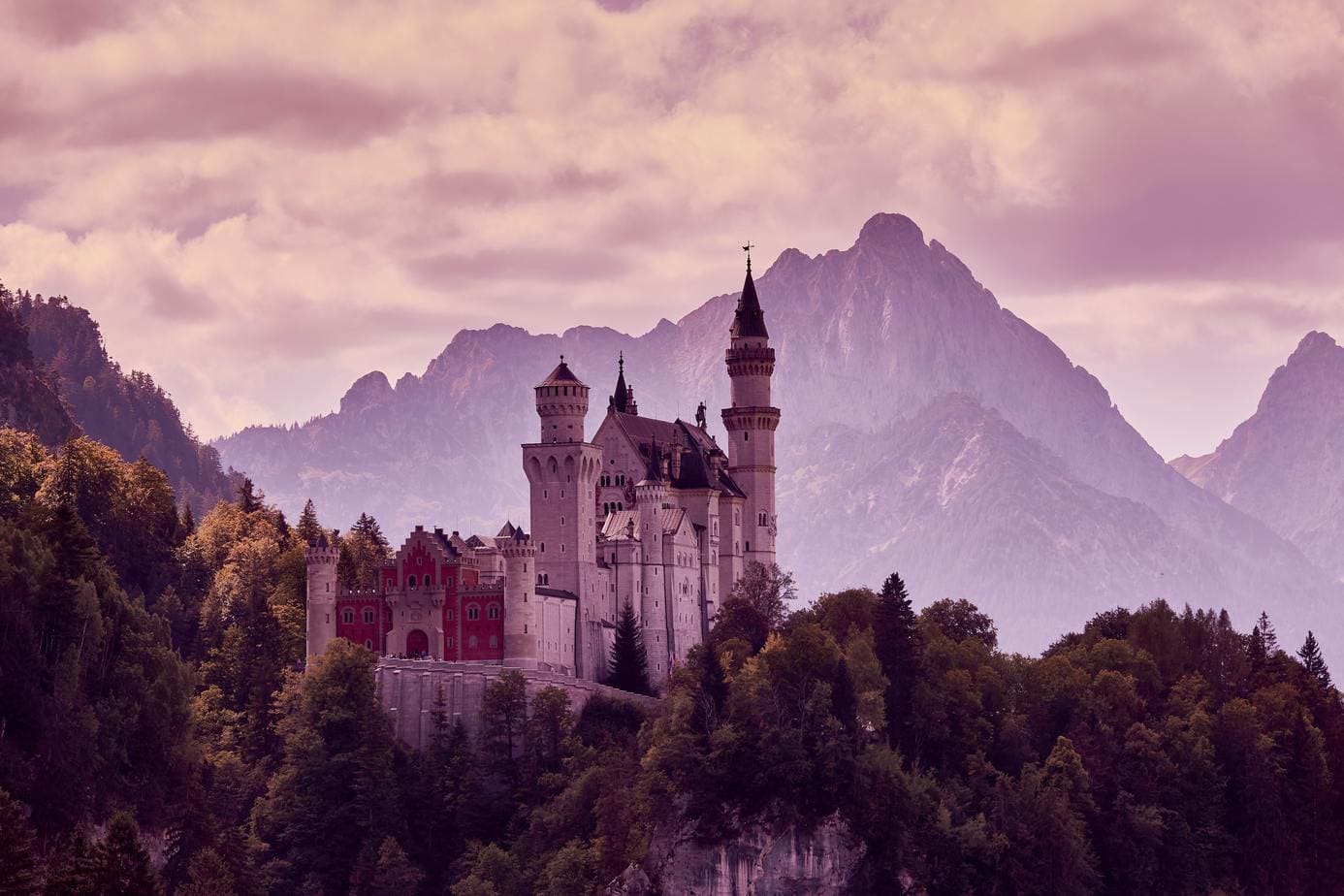
Germany is home to some of the most scenic roads in Europe. It’s a dream destination for road trips packed with stunning vistas, historic castles, and quaint towns.
There’s the famous Romantic Road – a 261-mile long drive through the Bavarian countryside. Among many other incredible sights, this drive takes in the famous fairytale castle Neuschwanstein, in the foothills of the German Alps.
Speaking of castles, there’s also the Castle Road , stretching some 600 miles from Manheim to Prague. The route is packed with iconic castles: Mannheim Palace, Heidelberg Castle, Nuremberg Castle, Hornberg Castle, Guttenberg Castle, Waldenburg Castle, Colmberg Castle, Ehrenburg Castle, Bayreuth Castle, and Prague Castle.
Then there’s the Schwarzwaldhochstraße , or Black Forest Road, which is the oldest themed drive in the country and one of the most famous.
Finally, there’s the Fairy Tale Road from Hanau, near Frankfurt to Bremen, near Hamburg. This one connects some of the real-life towns and landscapes that inspired locations in the stories of the Brothers Grimm. Including Sleeping Beauty’s castle and Little Red Riding Hood’s forest!
Istria, Croatia
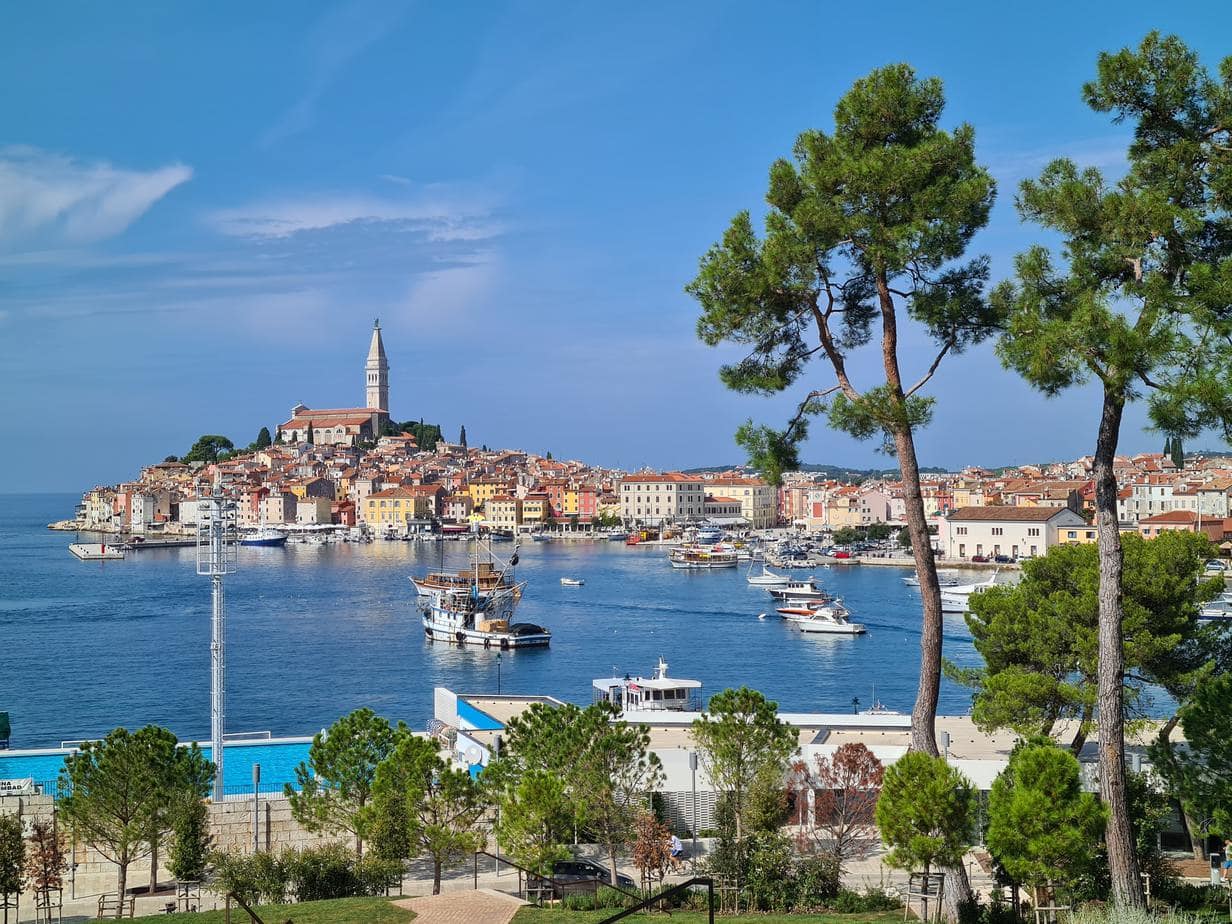
With almost 1,000 miles between Calais and Pula i n the north of Croatia, driving your caravan to this tourism gem is a long journey. But it’s well worth the trouble.
A beautifully unspoilt country set on the coastline of the Adriatic Sea, Croatia has a lot to offer. And while the south is teeming with tourists, the northern region of Istria is still a bit more undiscovered. There are loads of great things to do in Istria – and all without having to share with too many other tourists!
Quaint fishing villages, vineyards, tranquil pine forests, and a heavily Italian-influenced cuisine make this relatively untouched region a joy to explore by caravan. Pula is the largest city, packed with Ancient Roman ruins, while the pretty coastal town of Rovinj is a must-see.
Croatia is not a Schengen country, so you’ll need a separate visa to visit if you’re travelling from outside of Europe. Double-check with the tourist board to make sure you know what you need.
Are there any other places you’d love to visit in Europe for a caravan tour? Share in the comments!
Related Posts
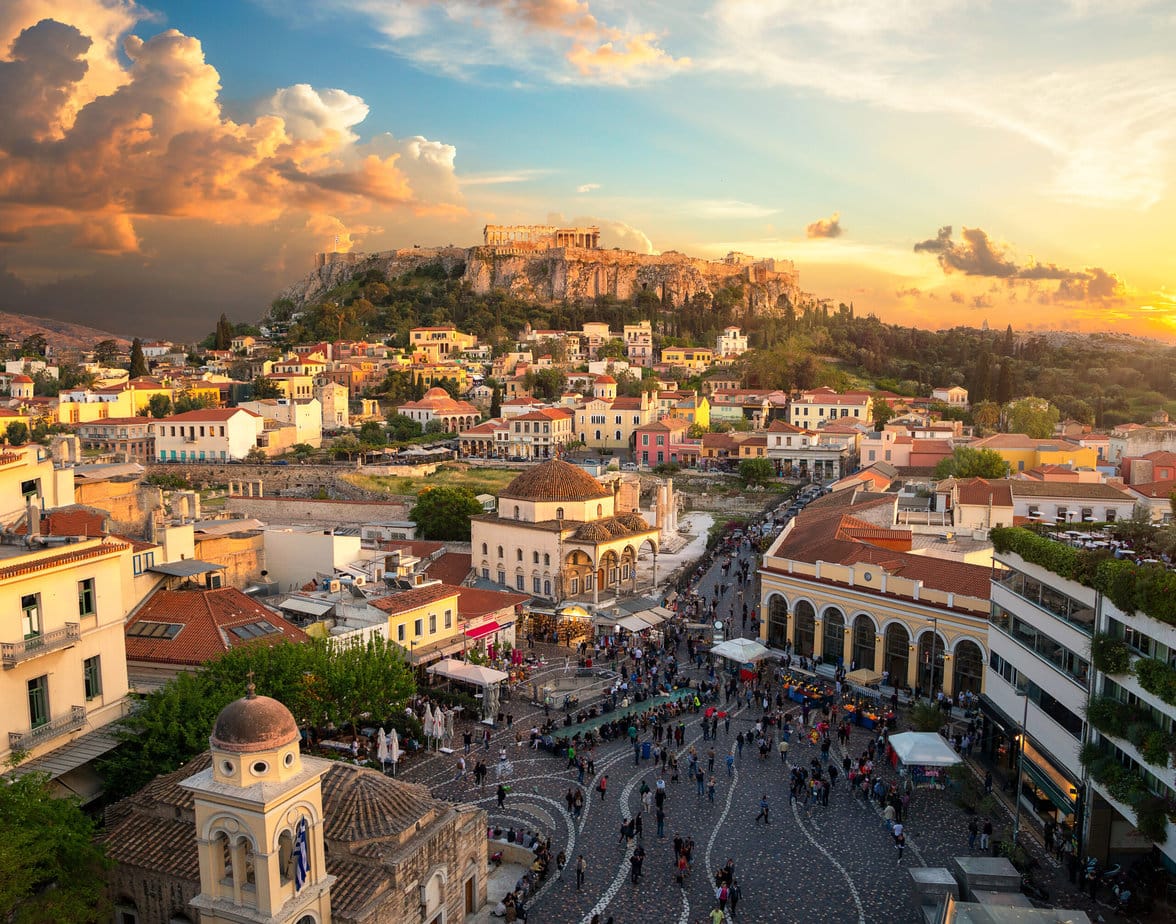
21 Cool & Unusual Things to do in Athens
- Last Updated 29 March 2024
Discover a whole different side to Athens with these fun, unusual things to do in the Greek capital – from unique tours to hidden ruins!
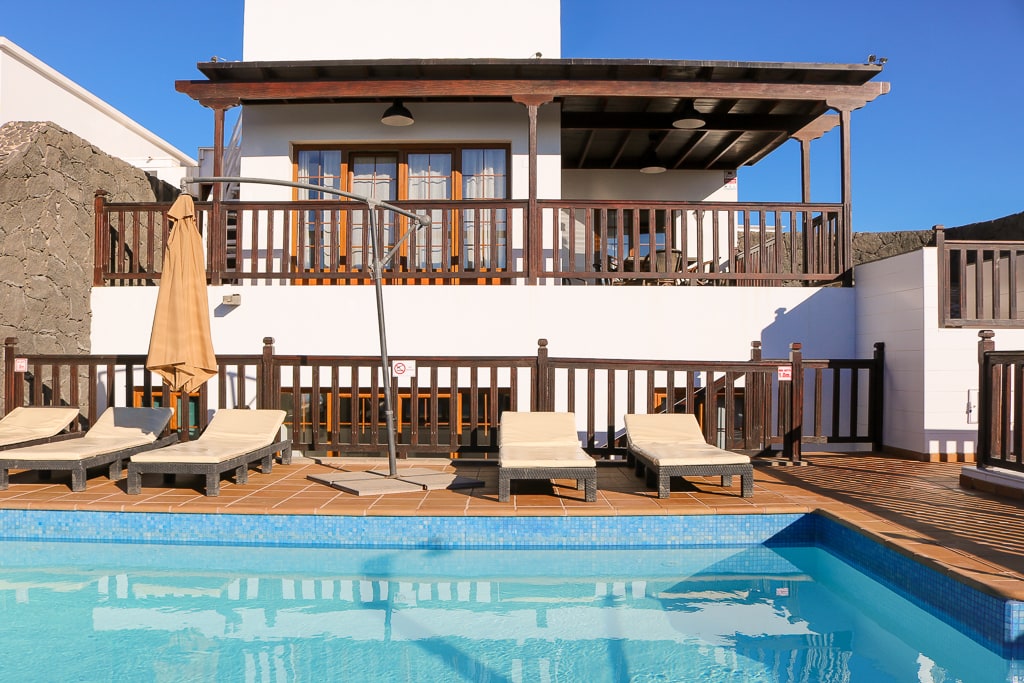
Playa Blanca Holiday Villas: The Ultimate Lanzarote Escape!
- Reviews , Spain
A review of the stunning Playa Blanca Holiday Villas – the perfect place for families and big groups to stay in Lanzarote…
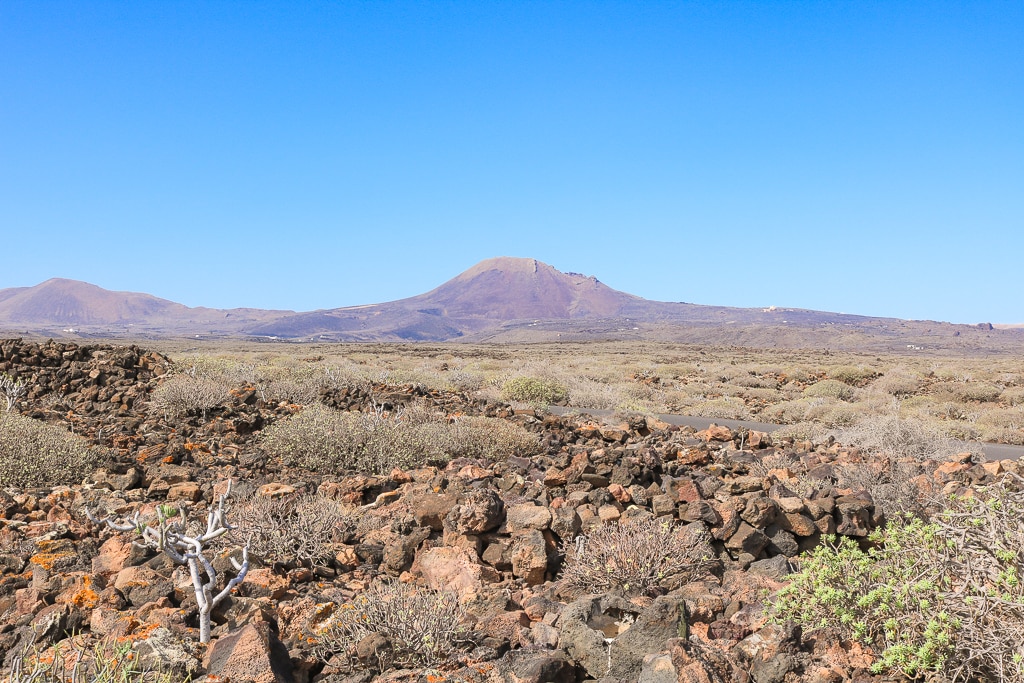
Lanzarote In Winter: Everything you Need to Know
- Last Updated 13 May 2024
Wondering what it’s like to visit Lanzarote in winter? Here’s what to expect from the weather & why winter might be the best time to visit.
3 thoughts on “5 of the Best Places to Visit in Europe for a Caravan Tour”
The Adriatic Coastline looks like a great caravan tour with the sea, fishing villages, vineyards and great mediterranean food, and weather.
Enjoyed this as we have been caravan n touring for 20 years and it almost exactly mirrors a list I would have made myself. We particularly enjoy Istria and have badly missed our annual month long visit since Covid. If I was to make your list 6 places I would add Portugal especially the area from Lagos west lovely people and in some ways more relaxed than Spanish coastal places. D
Oh wow that sounds gorgeous! I’m dying to visit Portugal, hopefully next spring :) Thank you for commenting!
Leave a Reply Cancel reply
Your email address will not be published. Required fields are marked *
This site uses Akismet to reduce spam. Learn how your comment data is processed .
Your browser is out-of-date!
Update your browser to view this website correctly. Update my browser now
Home › Advice
The Pain-Free Touring Guide to Europe
Things have changed in 2021 for those who love to caravan abroad. Here's our guide to minimising any disruption to your plans for European tours
By Practical Caravan Published: July 8, 2021
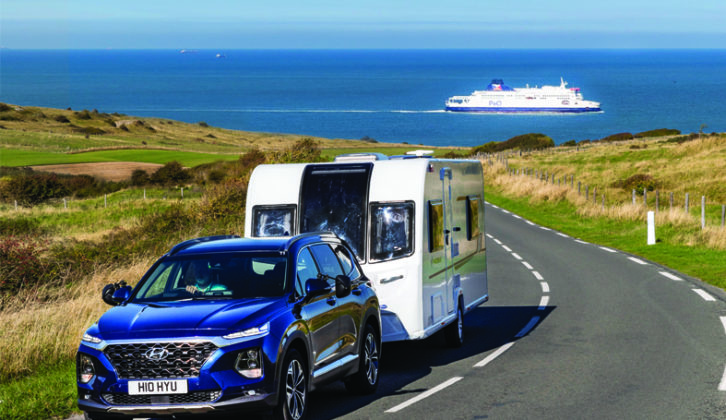
Touring in Europe is sensational, but in these early months of the UK’s full Brexit withdrawal, travel abroad seems to have become more troublesome and (literally) more taxing. Much of this is down to Covid-19 but for those wishing to tour in Europe during the summer and beyond, some of the rules and regulations have changed, particularly for passports, health cover and travel insurance, driving abroad and pet travel. Use our Pain-Free Touring Guide to Europe that outlines the changes and how you can minimise their effect, to guarantee continued harmonious holidays in the sun.
British passports no longer offer the same unfettered access to the 27 EU countries that they provided before Brexit.
This means that you should check the validity of your passport on the Government website – it might need to be renewed six months earlier than you planned.
You should also bring yourself up to speed with the latest passport regulations.
You must have at least six months left on your passport to travel to EU countries, plus Switzerland, Norway, Iceland and Liechtenstein. This rule does not apply for travelling to Ireland, where you may continue to use any passport that is valid for the length of your stay.
These changes will affect many people, and there could be a rush to renew when Covid-19 restrictions are lifted, so check your passport in good time, and allow yourself two months to get it renewed.
It costs £75.50 to renew or replace your passport if you apply online (the speediest option), or £85 if you fill in and post a paper form. Children’s passports cost £49, but only last for five years. A (more expensive) express service is available in emergencies.
If you require more information, call the passport helpline on 0300 222 0000 (8am to 8pm Monday to Friday, 9am to 5.30pm Saturday-Sunday and UK bank holidays).
Long-term touring
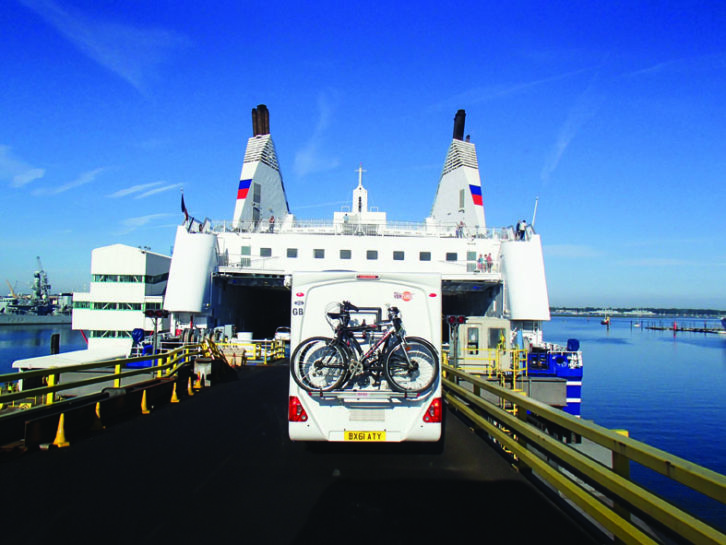
For those caravanners used to decamping to southern Europe for the entire spring and summer, the new regulations are going to limit that freedom.
UK visitors to the EU can now remain there for a maximum of 90 days in any 180-day period. Overstaying could result in fines, deportation, future entry bans and a stamp in your passport. For longer stays, you might need to obtain a visa.
Healthcare cover
If you’re caravanning anywhere in the EU, there is a reciprocal arrangement in place for travellers to receive free emergency health treatment.
The free European Health Insurance Card (EHIC) that provided this service is being phased out for UK citizens, post-Brexit, but will be replaced by the free Global Health Insurance Card (GHIC).
Your current EHIC will remain valid for as long as it is in date, and will continue to give you the right to access emergency state-provided healthcare while you are holidaying (or working temporarily) in EU countries. When your EHIC expires, simply apply for the new GHIC.
If you are travelling abroad and require treatment, but do not have a valid EHIC or GHIC you can obtain a provisional replacement certificate (PRC), which offers cover on a temporary basis.
You, or someone you know who is acting for you, can apply for a PRC by telephoning Overseas Healthcare Services (part of the NHS) on +44 191 218 1999 (8am to 6pm, Monday to Friday).
The new GHIC is available online and should be delivered within 10 days of your application. Be aware that there are numerous online businessss now offering to complete the very simple GHIC application form on your behalf – for a fee.
For example, a quick search on the internet for ‘GHIC’ delivered up one company that charges an administration fee of £29.98 to apply for your card for you (a two-minute job!). Put simply, you do not need to pay a fee.
In EU countries, having a valid EHIC or GHIC means that you will be covered for emergency treatment and A&E visits; treatment for longstanding/pre-existing medical conditions; routine medical care and monitoring, routine maternity care (as long as you are not going abroad to give birth) and dialysis.
However, neither the EHIC nor the GHIC should be considered as an alternative to buying travel insurance, which should still be purchased for every trip that you take.
Travel insurance
Check your caravan insurance, to see what European cover is included and whether you need to let your insurer know you are taking the van abroad.This also enables them to send you a multilingual document explaining that you have insurance.
You might find that your travel insurance costs have risen substantially in the wake of Brexit, so make sure you ring around for the best price, or use on of the online comparison sites, bearing in mind that the cheapest cover is rarely the best option.
Pet passports
British pet passports are no longer valid for travel in the EU, although those issued in the EU and Northern Ireland are valid. Pet travel requirements have changed, too, so contact your vet at least a month before your planned trip, to make arrangements.
To take your cat, dog (or ferret) to EU countries, your pet will need:
- A microchip
- A valid rabies vaccination
- An animal health certificate (or EU/Northern Ireland pet passport)
- Tapeworm treatment – if you’re travelling directly to Ireland and Northern Ireland (or (less likely) Norway, Finland or Malta.
These rules also apply to assistance dogs, and you will need to show proof of the above on entry to the country. You have to enter each EU country through a recognised Travellers’ Point of Entry, which include all of the main ports and the Channel Tunnel.
Mobile phone roaming
Roaming rules have changed since Brexit. Most providers say they won’t apply them, but check with yours before you travel.
Milk and meat
Be mindful that you can no longer stock your caravan fridge as you might have done before Brexit. Meat and milk, or products containing either, cannot be taken into the EU by British travellers, and must be purchased after arrival. Note that certain baby foods are exempt from this ruling.
Driving and towing in Europe
Gb stickers.
UK caravanners must clearly display GB stickers on the rear of their tow car and caravan. EU numberplates (with the circle of stars) do not need to be changed, but if your numberplates have GB on them (with or without a Union Flag), you don’t need a GB sticker in the EU.
The exceptions to this rule include the Republic of Ireland, where no GB sticker is needed when driving a UK-registered tow car, regardless of the type of numberplate it has. In Cyprus, Malta and Spain, you do need to have a GB sticker, regardless of the type of numberplate fitted.
However, from 28th September, you will require a new UK sticker to be displayed, and upgrade to a new numberplate displaying a distinguishing UK sign in place of GB. You can read more about this here .
Green Cards
When towing to Europe, UK drivers must obtain a motor insurance Green Card. This regulation includes the Republic of Ireland, Andorra, Iceland, Liechtenstein, Norway, Serbia and Switzerland. Green Cards are usually free, and provided by your insurer. Contact them to request one, listing all of the countries you’ll be visiting. Note that when entering an EU country, you must have 15 days remaining on your Green Card.
Your UK car insurance policy gives you a minimum of third-party protection in EU countries. Check with your provider that your UK comprehensive/fire and theft cover extends to the EU.
If you drive abroad regularly, these details should be factored into your initial insurance-buying decision, because cheaper policies may not offer the best EU cover.
Company car users should request a free VE103 vehicle-on-hire certificate from the leasing firm, and make sure to keep it in the tow car at all times while you are abroad.
International Driving Permits
British drivers with a UK card licence do not need an International Driving Permit (IDP) to drive in the EU, Switzerland, Norway, Iceland or Liechtenstein.
Those with a paper licence – or a licence from Gibraltar, Guernsey, Jersey or the Isle of Man – should carry an IDP when driving in the EU and Norway.
There are three different types of IDP, so it’s advisable to visit gov.uk.driving-abroad/international-driving-permit to check which one you will require.
Accidents in the EU
If you are a frequent visitor to EU countries with your caravan, when buying your annual car insurance, find out whether a proposed insurer will deal with the claim/paperwork if you are involved in an accident abroad.
Previously, your insurer provider or the Motor Insurers’ Bureau (MIB) would deal with any claim on your behalf, but after Brexit, you might find yourself having to deal with foreign insurers.
The MIB has also negotiated a reciprocal deal with 29 of the 30 European Economic Area countries (a deal with Romania has been delayed). This means that if you are hit by an uninsured driver while driving abroad, you will be able to access a fund to cover your financial losses.
Speeding fines
British citizens can no longer be pursued across borders for speeding infringements caught on camera. However, EU police can issue on-the-spot fines, and the French government is seeking to establish a new cross-border-fining deal with the UK.
Documentation
You should continue to carry your full driving licence (and photo ID if you have a paper licence) with you at all times.
In addition, take a V5 vehicle registration document. It’s advisable to keep photos of all documents on your phone, and to consider storing copies on an online hub.
If you are stopped and can’t pay any fine on the spot, the police might confiscate your V5 until you return to pay it.
Top tips for trouble-free EU touring
Be sure to take enough gas for the duration of your holiday. Continental gas bottles are not compatible with UK ones. For longer breaks, consider taking a Continental pigtail adapter, because you can then pick up a Euro-fit cylinder at a service station or DIY store.
Be sensible about distances that you can tow each day, especially after an early start. For example, when we are crossing to Caen and towing south, we aim for Le Mans or Tours. We like Compiègne if crossing to Calais or heading to Paris. All three are great places to explore and have dinner!
Choose your Channel crossing carefully, and bear in mind price, distance and practicality. For example, fans of Spanish touring should think about how valuable it might be to gain an extra day or two at your destination by travelling with Brittany Ferries to Bilbao or Santander. Of course, some may prefer a leisurely road trip through France. The longer crossing isn’t cheap, but you’ll save on fuel, tolls, towing, time and campsites en route.
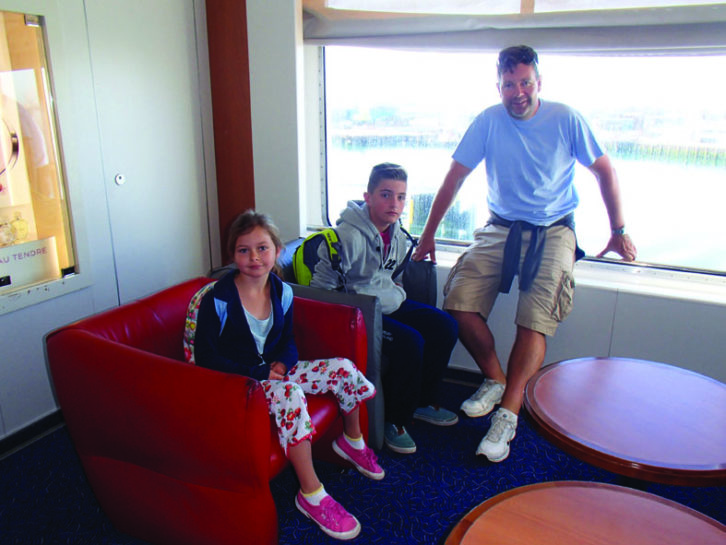
For a long tow to your holiday destination, plan to leave a day or two ‘spare’ at the end of the trip, and keep an eye on the weather forecast for a few days before the return journey.
When driving or towing in Europe during the summer, try to stay off the roads around the major holidays. In France, for example, Bastille Day (14 July) and Assumption Day (15 August) are best avoided. The roads can become extremely congested on and around these days, just like bank holidays in the UK.
If you want to reach your French destination quickly, the fastest routes are the Péage toll motorways . These are generally quite quiet, allowing you to make good progress. However, they are expensive. Expect to pay around £100 in tolls to cross France from north to south.
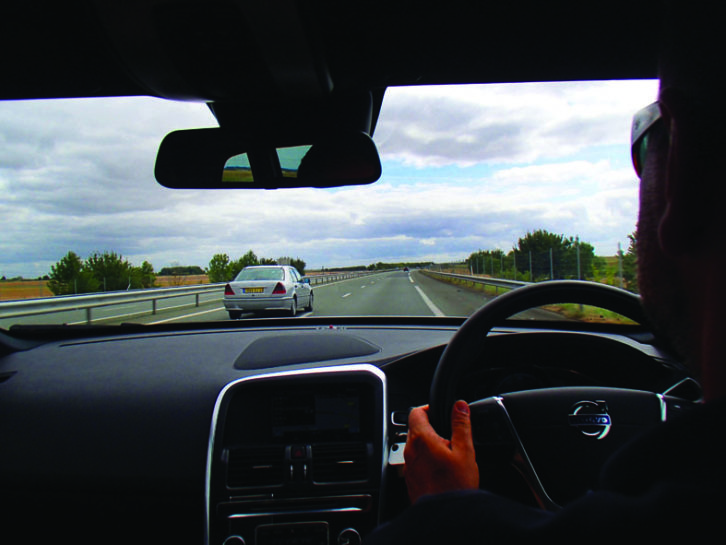
Buy good-quality breakdown cover that includes all of the countries you might visit on your tour. The Caravan and Motorhome Club and The Camping and Caravanning Club both offer excellent breakdown and repatriation cover.
If you’re taking an extended holiday, be aware that many home insurance policies don’t protect properties that are left uninhabited for more than 30 days. It’s advisable to check your cover before you go.
Find out about the ‘towing’ speed limits of any country you plan to visit – there are significant differences.
If you’re heading south, or expecting hot weather on tour, pack a fan or air-con unit to help you get a good night’s sleep. Portable fans are cheap, while air-conditioners are more expensive (and heavier).
When abroad, always carry a copy of any NHS prescriptions members of the party may have.
Use Google Earth and Street View to plan your journey, with approaches to sites and so on.
If you prefer to avoid towing down narrow medieval streets, it’s well worth considering a caravan-specific sat nav.
Bear in mind that devices warning drivers of speed camera locations are illegal in France.
For a more leisurely and picturesque touring experience, try taking the Routes Nationales , which are more like British A roads, and have the added bonus of frequent boulangeries and patisseries ! You can stop to enjoy lunch, in a pretty town, with the money that you save on road tolls.

Some fixed-distance Péages require payment when you join them, but most have tickets at the start and pay-barriers at the end. Often these are automated, so if you get stuck at the barrier, it can be very stressful, and may require a long reverse between concrete walls. Certain credit/debit cards are not accepted at the barriers, so it’s advisable to keep some cash in the car fo such emergencies.
If you can, avoid towing into the tollbooth bottleneck, between the concrete walls, until the vehicle ahead has left. Just in case they get stuck!
Keep the key dimensions of your outfit on a sticky note on the vanity mirror. Especially the van height.
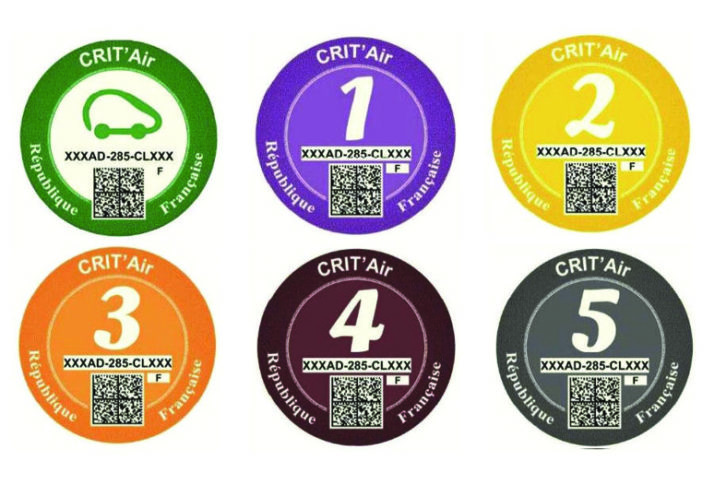
An increasing number of European countries now have low-emission zones (LEZ) to improve air quality in major cities. These restricted zones apply to visitors, too, and you must not be caught driving through an LEZ without the correct documentation sticker, because you’ll risk a fine.
In Italy and Spain, if the total length of your outfit (tow car plus caravan) is over 12m, you’ll need to fit ‘long vehicle’ marker boards on the rear of your van. These red-and-white reflective panels measure 50cm by 50cm. Only the biggest van and car combos should exceed 12m, for example, a Range Rover and the largest six-berth caravan.
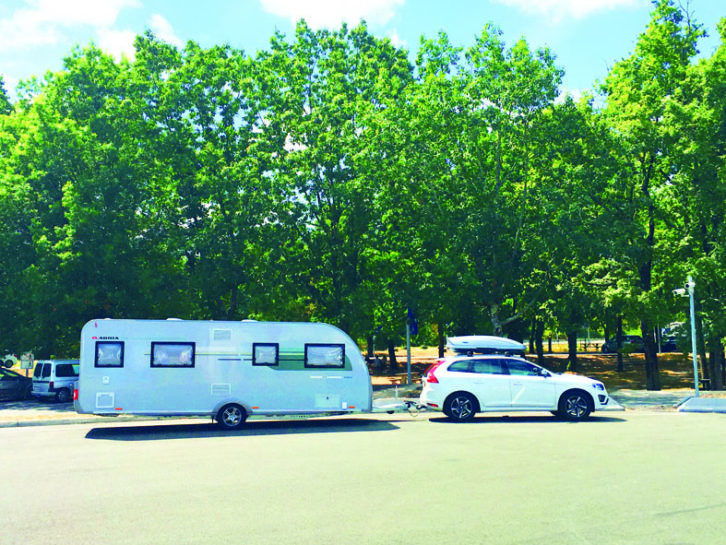
If you’re checking your tyre pressures while touring on the Continent, bear in mind that there are 14.5psi to one bar.
Remember that you must use E-marked towing mirror when touring on the Continent.
For travelling on motorways in Austria and Switzerland, you require a windscreen sticker, known as a Vignette . These are available at the border or online in advance of your journey.
If you liked this… READ THESE:
Top towing tips for safe travels
Pre-tour checks for caravans
Best caravans for families
If you’ve enjoyed reading this article, why not get the latest news, reviews and features delivered direct to your door or inbox every month. T ake advantage of our brilliant Practical Caravan magazine SUBSCRIBERS’ OFFER and SIGN UP TO OUR NEWSLETTER for regular weekly updates on all things caravan related.
Be mindful you can no longer stock your caravan fridge as you might have done before Brexit
Practical Caravan
Related News

Download our free ebooks for all the caravan tips you could need
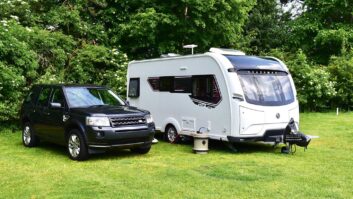
10 tips to help you prepare your caravan for spring touring
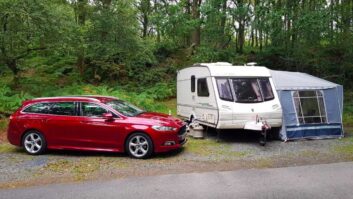
A beginner’s guide to caravanning

Voting is now open for the Top 100 Sites Guide 2025

Caravan awning manufacturers: our guide to the best
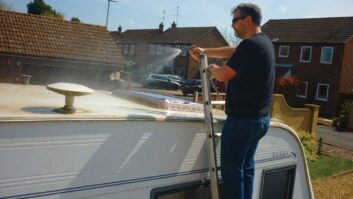
Cleaning a caravan: a step-by-step guide

11 of the best adults only caravan sites in the UK 2024
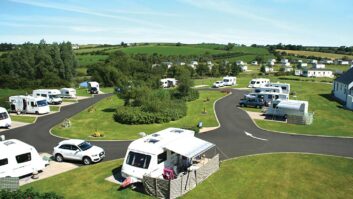
Ballyness Caravan Park named Overall Winner of Top 100 Sites Guide 2024
16 Best Campervan Journeys In Europe

Your changes have been saved
Email Is sent
Please verify your email address.
You’ve reached your account maximum for followed topics.
America's Deadliest Lake Is Also One Of Its Most Beautiful
This underrated state park has the best hiking trail in america, forget aspen: visit this delightful colorado town, read update.
Best Routes For A European Campervan Journey
- Campervan journeys in Europe offer a low-cost way to explore scenic destinations and beautiful landscapes, away from the city streets.
- Routes like Slovenia & Croatia, Transfăgărășan Highway in Romania, and the Wild Atlantic Way in Ireland are worth adding to your European itinerary.
- From the French Riviera to the North Coast 500 in Scotland, there are plenty of options for campervan road trips that provide flexibility, affordability, and unforgettable experiences.
While the “Vanlife” craze is taking off in North America, campervan journeys around Europe have been a popular way to see the continent at a low cost for years. Spend 1-2 weeks or a couple of months roaming Europe in a cozy campervan while taking in the beautiful landscapes travelers often miss when sticking to the city streets.
UPDATE: 2023/08/22 12:29 EST BY NICHOLAS MAYAMBA
Europe is home to numerous scenic destinations worth checking out, and campervan journeys present an exciting option to explore them without breaking the bank. In this updated list, find out more road trips worth adding to an adventurer's to-do list during a European itinerary.
Related: Road Trip Enthusiasts: Here Are The 10 Countries With The Best Road Trips In The World
16 Slovenia & Croatia
Slovenia is overlooked by many travelers in Europe in favor of nearby Croatia or Austria. However, Slovenia and Croatia together are the perfect route for a European road trip with beautiful historic cities and beaches on the Adriatic Sea. For a 10-14 campervan journey, pick up a vehicle in Dubrovnik and spend three days on the coast , appreciating the scenery and exploring filming locations for Game of Thrones . Then, drive north to Split and Zadar before continuing to the scenic Plitvice Lakes National Park.
Cross the border into Slovenia and explore the Julian Alps and scenic Lake Bled. Rent a canoe in the early morning and paddle out to the center of the lake for the best views. Finally, explore the capital of Slovenia, Ljubljana.
15 Transfăgărășan Highway, Romania
Romania doesn’t get much attention from international travelers, but it should. This vast Eastern European country has a beautiful capital city but also expansive, lush green landscapes and highways that are easy to travel to. Rent a campervan for pickup at the Bucharest airport before embarking on the epic Transfăgărășan highway drive. This road takes travelers through the Carpathian Mountains. The road is nearly 100 km long and is one of the most iconic in Europe, twisting and turning through the rolling terrain of Romania. Plan to make stops at Balea Lake, Capra Tunnel, Vidraru Dam, and Poenari Citadel along the way.
14 Wild Atlantic Way, Ireland
The Wild Atlantic Way is Ireland’s most famous driving route and can easily be driven in 5 days to 1 week, starting from Dublin. However, for travelers who want to take their time and spend more than one night at a destination along the way, turning this into a 2-week adventure is a more relaxing choice. The route is 2500 km from County Donegal to County Cork and takes travelers along the best sights of Ireland’s West Coast, including the Cliffs of Moher, Kylemore Abbey, and Slea Head.
Related: 10 Places You Should See In Ireland During A 7-Day Trip
13 The Fairy Tale Road, Germany
Germany is one of the largest countries by area in Western Europe, so exploring it in a campervan is a great way to see the natural beauty usually missed when sticking to cities like Berlin or Munich. Rent a campervan and drive the Fairy Tale Road in Germany, which starts in Frankfurt. The quiet road runs through the countryside and charming German towns like Steinau, Marburg, Kassel, Gottingen, Hamelin, and Bremen. From Bremen, travelers can easily continue onto Hamburg and venture north to Denmark.
12 The Ring Road, Iceland
Iceland’s Ring Road is the best drive in the country, taking travelers around the island’s perimeter in just 7-10 days. While it’s possible to do this trip in a rental car and book Airbnbs or hotels, choosing to do the journey in a campervan offers the flexibility to stop at any campsite and stay immersed in the otherworldly landscapes of the Land of Fire and Ice. Top sights to see along the way include Skogafoss, Jökulsárlón Lagoon , and Diamond Beach.
Related: The 10 Most Beautiful Stops Along Iceland's Ring Road
11 The French Riviera, France
Get away from the busyness of Paris and embark on a romantic campervan journey through the South of France on the French Riviera. In just one week, travelers can easily stop at beautiful cities like Nice, Eze, Cannes, Cote d'Azur, Monaco, and Antibes while spending the night in their campervans to save money on accommodation. This is a fantastic way to see the South of France on a budget and with the freedom to wake up in a new spot every morning.
10 The North Coast 500, Scotland
The North Coast 500 is named for the 516-mile route around the Northern coast of Scotland. It’s possible to drive this route in just five days but lengthening the trip permits travelers to make more stops and appreciate the scenery in various parts of the country. Some top spots to pause along the way are Falls of Shin, Coldbackie Sands, Smoo Cave, and Handa Island. The route is so popular it has attracted more than 29,000 visitors since its inception, but there’s still plenty of room for everyone on the road.
9 Algarve Coast, Portugal
Travelers looking for a budget-friendly campervan trip in Western Europe can skip Italy’s coast and head to the South of Portugal instead. Most international travelers will arrive in Lisbon, where it’s easy to pick up a rental van from the airport. Then, drive south on the E1 to Lagos, which takes between 2.5 and 3 hours . From Lagos, travelers can choose to spend time camping and swimming along the Algarve Coast for a few days before continuing the drive to Faro. If time permits, cross into Spain and spend a few days in Seville before returning to the campervan and heading home.
8 La Route Des Grande Alpes, Switzerland
This route takes travelers through the French Alps between the French Riviera and Lake Geneva. Visitors will drive their campervan through the Alps from North to South or South to North, depending on which side they start the route from. The road has 16 passes, some of the highest in the Alps and spans 684 km from Thonon-Les-Bains to Menton. The journey takes at least 2-3 days by car, but travelers can spend much longer exploring the historical monuments and Alpine villages along the way.
7 Whitehaven To Silloth, The Lake District, United Kingdom
There are plenty of scenic road trip routes through The Lake District in the UK, but travelers who want to drive their campervan along the coast will love the journey from Whitehaven to Silloth. The drive is 26.7 miles long and follows the A595 and A596 along the Solway Coast from Whitehaven. Travelers will pass through the quaint town of Maryport and can stop off at the picturesque Allonby's Beach before arriving in Silloth.
6 Finland Up To Nordkapp
One of Europe's most scenic caravan journeys is arguably traveling up through Finland to Norway. This route takes one through the boreal forests of Northern Europe and even through Santa's North Pole Village in Lapland . Along the way, visitors see sprawling forests where the roadsides are populated by reindeer as one penetrates north into Lapland. Mountains don't appear until one approaches the northern border with Norway, and from there, one can keep on going to Nordkapp - the northernmost point of Europe .
5 Travel Down The Coast Of Norway
Norway is arguably the most stunning road trip possible in Europe. Travel down Norway's pristine and stunning coastline and explore many of the world's most picturesque and dramatic fjords. Keep in mind that Norway is expensive, but it is also legal to camp almost wherever one likes (if one would like to save on camping fees). Be sure to detour to see Troll's Tongue while traveling in Norway .
4 Andorra & The Pyrenees
The Pyrenees are one of the great mountain ranges of Europe, and they form the border between Spain and France. One of the fun things to discover while exploring the Pyrenees is the tiny alpine country of Andorra (it is basically a country that is a collection of ski resorts). The Pyrenees are not as dramatic as the Alps of Switzerland, France, Italy, and Austria, but they are stunning and should be on anyone's bucket list.
Turkey is sometimes counted in Europe, and it is a top destination to go for a campervan journey. The country is just bursting with attractions to see and explore (think about endless Roman ruins, ancient Greek ruins, Pamukkale, crusader castles, some of the Mediterranean's best beaches, and some of the oldest manmade settlements known. Turkey has a great highway network and is a very rewarding place to explore.
2 Switzerland & Northern Italy
Starting in the mountains and ending at sea, this lovely European campervan journey takes travelers through exciting destinations. From Switzerland's biggest city, Zurich, drive through the country to the towns of Lucerne and later Bern before crossing to the Italian city of Turin. Admire the impressive architecture in the city and sample its eclectic cuisine, then continue with the journey to the fashion capital of Milan . Find something cute to buy and drive off to Bologna's historic town before wrapping up the trip in Venice, where so many attractions await .
Related: 10 London To Rome Road Trip Stops That Reveal Ancient History And Breathtaking Scenery
1 Italy Roundtrip
Italy's is among Europe's top destinations, and going around the country explores campers to beautiful cities with a rich history, unique culture, and exotic destinations. Starting in Milan, this exciting road trip will last 2 to 3 weeks, depending on how much there is to see and do along the way. Drive the van to Genoa, check out the beautiful harbors, then head to Pisa through Cinque Terre. Continue towards Florence to admire its majestic art pieces, continuing to Siena and Rome. Afterward, he's to Naples and cap off the Italian itinerary on the Almafi Coast.
The 8 best destinations for an RV or camper van adventure
Mar 21, 2023 • 8 min read

Camper van travel is a great way to explore the world © Getty Images
Whether you’re cruising in a chrome-plated RV or sputtering along in a vintage VW, there’s nothing quite like the thrill of hitting the road in a camper van, where you’re beholden to no timetable and limited only by your ambitions.
Most travelers set their satnavs for the smooth highways of the old dependables – North America , Australia , New Zealand – and with good reason (not least the savings offered on pricey accommodation), but those willing to navigate the potholes of roads less traveled may find richer rewards elsewhere. These are the 8 best destinations for an RV trip.

1. Scotland's North Coast 500
Best camper van travel in europe.
It was billed as Scotland ’s Route 66, but the North Coast 500 is of course nothing like its US counterpart. Cutting a course through sodden carpets of heather in the bleakly-beautiful Highlands, the 516-mile route joins the dots between crumbling castles, weather-beaten fishing towns and middle-of-nowhere distilleries.
Lined with campsites, the road itself incorporates the meandering mountain pass of Bealach na Bà – the highest highway in Scotland – and swings by John o' Groats, the most northerly point in mainland Britain. Bring your bathers in case the weather behaves: Scotland has some surprisingly beautiful beaches .
Most campers start and end their trip in Inverness – the largest city in the Highlands – whose cosy pubs, a 19th-century cathedral and a lofty castle bookend the journey nicely.
Where to hire: Local rental companies include Highland Coastal Campers , Loch Ness Motorhomes and Inverness Campervans Rental costs: Campers from around £110/US$130 per day
2. Route 1 in California, USA
Best for beaches.
Romanticised by beat writers and Hollywood film directors, the American road trip is practically a sub-genre of its own. From Grapes of Wrath to Vanishing Point , Thelma & Louise to Sideways , the nation’s highways are littered with great plots.
Given the profusion of road movies that have come out of Hollywood, California is an apt place to (wheel) spin your own 4WD narrative. The Golden State offers a handful of iconic itineraries, from Highway 101 to the dirt tracks of Death Valley , but if you only drive one road, make Route 1, well, the one.
Lined with campsites, this feted highway hugs the rugged Californian coast for 143km between San Simeon and the Carmel Highlands. All plunging cliffs and wave-lashed beaches, it is the longest stretch of undeveloped shoreline in the US.
Where to hire: Local rental companies include Escape Camper Vans , Outdoorsy and Jurnii Rental costs: From around US$55/£45 per day

3. East Coast Australia
Best for partying.
Like koala bears to eucalyptus trees, road-trippers have long been drawn to Australia’s East Coast , where hedonistic surf towns, colorful coral reefs and paradisiacal beaches provide the pretext for camper van capers.
Buckle up in Sydney , where the booming market in used camper vans should produce a reliable set of wheels for those looking to buy. As the Opera House disappears in the rear-view, the East Coast unfurls to reveal impressive national parks, offbeat islands and hard-partying cities such as Brisbane , Cairns and Surfers Paradise . It’s not all boisterous beach jamborees, though. Quiet camping grounds can be found along the East Coast, including many free sites, which often include public barbecues for the obligatory shrimp tossing.
There are all kinds of East Coast road trip routes to take depending on the amount of time you want to spend and which stunning Australian sites you most want to see. The only hard part will be narrowing it down, or deciding where to begin.
Where to hire: Local rental companies include Hippie Camper and Travellers Autobarn . Rental costs: From around AU$79/US$52 per day

4. Overlanding in Namibia
Best for wildlife.
You’ll need a 4WD to tackle the otherworldly landscapes of Namibia , where buzzing cities, stark desert scenes and wildlife-rich national parks are among the highlights.
Most self-drive trips begin in Windhoek , whose Bavarian-style boozers are the perfect place to pore over maps and finalize routes. Be sure to set the GPS for Etosha , a Belize -sized national park where self-drive safaris and in-park camping are permitted, offering early morning sightings of rhinos, elephants and lions before other tourists have finished funnelling through the gates.
Top off your tour with spectacular drives through the shape-shifting sand dunes of the Namib Desert and a stop-off to eyeball the colossal rusting shipwrecks along the Skeleton Coast . A word of caution: Namibia’s roads are mostly loose gravel and there are often large distances between towns, so forward planning is essential, including camp-site bookings. If you enjoy the ride, however, you might find yourself hungry for more opportunities for overlanding in Africa .
Where to hire: Local rental companies include Bobo Campers , Namibia 4x4 Rentals and Caprivi Rental costs: From around NAD1650/US$90 per day

Best for culture
The idea of driving in Japan might seem terrifying, but a road trip here is surprisingly serene: aside from the odd racer, Japanese motorists are generally courteous, whilst modern satnavs mean there’s now no need to worry about translating signs. Having a mobile home here also saves on hotel costs – some of the most expensive in Asia .
Wending their way from snow-capped peaks to palm-fringed beaches – via limpid lakes and primeval forests – Japan’s highways offer a privileged perspective on parts of the country that many visitors don’t get to see. Fill up on culture as well as gas in pulsating cities, middle-of-nowhere temples and traditional villages.
With views of Mount Fuji and Lake Ashinoko, the Hakone Skyline Course is one of Japan’s most scenic drives , and is conveniently lined with handy rest stops. No less stunning is the Mikuni Pass, which tiptoes above primeval forest in Tokachi Subprefecture.
Where to hire: Local rental companies include Japan Campers , Camgo Campervan and Rental Camper Rental costs: From around ¥5900/US$45 per day

6. New Zealand
Best for hikers.
Travelers often proclaim New Zealand to be the best destination for a camper van holiday – and it’s hard to argue otherwise. From glistening glaciers to wave-lashed shores, its landscapes bring a certain grandeur to road trips, while its hiking trails and legion of campsites make the scenery eminently accessible.
If you like lofty peaks then chart a course through the North Island’s volcanic heartland, stopping off at the hiker’s paradise that is Tongariro National Park. For rugged seashores take the ferry to the South Island and drive the windswept West Coast, past Franz Josef Glacier to Milford Sound .
Buying a camper van is practically a rite of passage for travellers in New Zealand. Trusty steeds can be purchased at Auckland ’s famous car fairs, though there are plenty of places to rent if you don’t want the hassle of haggling. Another plus is the 200 or so campsites run by the Department of Conservation ; spread throughout the country, these spots offer low prices and excellent facilities amid some unbeatable rural settings.
Where to hire: Local rental companies include Maui Rentals and Wilderness . Rental costs: From around NZ$48/US$30 per day

7. Chile's Pan-American Highway
Best for adventure travel.
It’s hard to lose your way on a camper van holiday in Chile , where the foolproof Pan-American Highway runs almost straight down the spine of the country, dispatching road trippers to colorful colonial cities, arid deserts and verdant national parks.
The sheer variety of landscapes is staggering. It seems hard to believe that the Atacama Desert – supposedly the driest place on Earth – is found in the same country as the vineyard-carpeted Elqui Valley and the ice-blue glaciers of Patagonia .
It’s not all about natural wonders. The 3364km-long Pan-American also serves up swaggering seaside cities in the form of Iquique , La Serena and Valdivia, and, of course, the capital, Santiago , behind which loom the lofty peaks of the Andes.
Where to hire: Local rental companies include Wicked South America , Condor Campers and Andes Camper Rental costs: From around CLP$40,000/US$50 per day

8. Alberta, Canada
Best for families.
Icefields Parkway manages to distil almost everything that’s epic about the Canadian wilderness into a brisk 230-km camper van route. From sparkling glaciers to wildflower meadows, snow-capped mountains to cascading waterfalls, this highway packs in some serious scenery.
Calling at Banff and Jasper National Parks , the route hits a sweet spot in May, when spring makes its presence felt in the flowery foothills, but skiing is still possible on higher ground for those who have packed their boots and poles. Come a little earlier – in April – and you can even skate on Lake Louise .
Before you return the RV, take a detour to the sandstone hoodoos of Alberta ’s Badlands, an alien-looking landscape where some of the rarest dinosaur fossils known to humanity have been found. Dinosaur Provincial Park , a Unesco World Heritage site has a brilliant family-friendly campsite alongside an excellent visitor center where children can learn about the area's prehistoric inhabitants.
Where to hire: Local rental companies include Canada RV Rentals , North Campervans and Wicked Campers Calgary Rental costs: From around CA$200/US$145 per day
This article was first published Aug 20, 2019 and updated Mar 21, 2023.
Explore related stories

Mar 14, 2022 • 12 min read
California’s nine national parks represent the state’s multifaceted, beautiful puzzle. Here's how you can visit them all.

Jun 28, 2024 • 7 min read
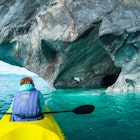
Jun 26, 2024 • 10 min read

Jun 26, 2024 • 7 min read

Jun 25, 2024 • 13 min read

Jun 24, 2024 • 11 min read

Jun 23, 2024 • 6 min read

Jun 22, 2024 • 5 min read

Jun 21, 2024 • 9 min read

Europe by Motorhome: The Best & Only Touring Guide You Need!
This post may contain affiliate links, from which we earn an income.
Campervan & Motorhome in Touring Europe
Do you want to explore Europe in your motorhome or campervan? The best thing about Europe is the culture, cuisine, rich history, nature and diversity, enough to last a lifetime of exploring. Taking a motorhome across Europe seems like an awesome idea, especially with our ultimate guide to help you work it all out!
We’re Phil and Izzy and we’ve been full-time touring and travelling in a motorhome in Europe for over five years. In this post, we share everything we’ve learned on the road in Europe.
Find out how you can travel Europe in a motorhome with practical motorhome advice, Europe motorhoming itineraries, travel tips and hints about living in a motorhome full time and loads of other useful stuff!
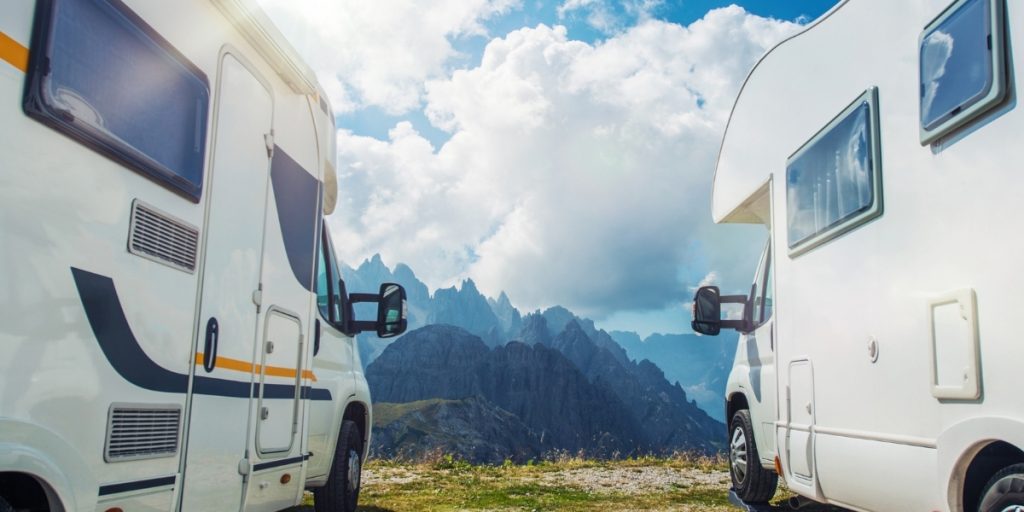
Basic Requirements for Europe Motorhome Travel
This section has been updated to reflect the post-Brexit agreement between the UK and EU on 24th December 2020. It’s boring, but spend just one day doing the research before you head off, and you’ll have one less thing to think about. If you do get stopped during your European tour you’ll have all the correct equipment and documentation to show. Our advice and travel tips cover the basics:
- You must have at least three months remaining on your passport (issued in the past ten years) at your intended date of departure from Europe. If you’re travelling in a motorhome in Ireland , your passport only needs to be valid for your stay (UK citizens do not need a passport to travel to Ireland which is in the Common Travel Area).
- A UK driving licence is needed for touring in a camper van in Europe. Your UK licence allows you to drive in all EU countries. If you only have a paper driving licence or a licence issued in Gibraltar, Guernsey, Jersey or the Isle of Man then you will need an International Driving Permit .
- You must have at least third party motorhome insurance for your vehicle. You are not required to have a green card to prove you have vehicle insurance coverage when travelling in the EU. Make sure to check if visiting non-EU countries like Montenegro, Serbia and Albania that you are covered – you’ll need a green card for these countries too.
- You must display a UK sticker on the rear of your vehicle, instead of a GB sticker, unless you have a UK number plate which displays the Union Jack flag. If you’re travelling in Spain you will need a UK sticker even if you have the new style UK number plates.
- Headlights must be adapted for driving on the right.
- You may need evidence of a return ticket and that you have enough funds to cover your stay – there is no fixed amount that a customs official might ask for, but you need to be able to show that you can maintain your motorhome lifestyle. Having said that, in the two years since Brexit, we don’t know anyone who has been asked to produce either a ticket of evidence of their financial position.
- Brits should get a GHIC or EHIC (Global or European Health Insurance Card) – not a legal requirement, but free so why not?
- We would also recommend your own travel insurance and Europe motorhome or campervan breakdown cover, but these are not legal requirements. We like True Traveller backpacking insurance if you need cover for more than three months.
- An Animal Health Certificate , if you’re taking pets with you.
- Any country-specific requirements for your vehicle – our country-by-country motorhome touring guides contain up-to-date information about what you need to carry in Europe.
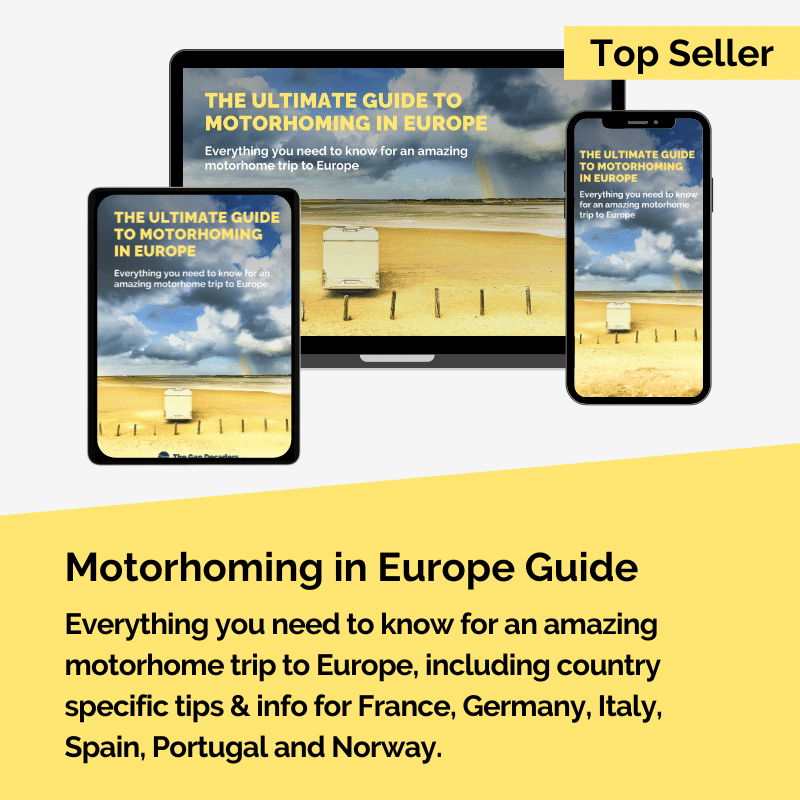
The Ultimate Guide to Motorhoming in Europe
If you’re planning a motorhome trip to Europe for the first time, our guide has top tips, advice and info to help you plan your tour.
Don’t struggle to plan your European trip, find out everything you need to know before you go + loads of motorhoming tips for when you arrive.
Motorhome Europe After Brexit
Although the UK left the EU at the beginning of 2020, because the pandemic came swiftly on its heels, many of us are still realising the repercussions and getting used to how it affects travelling in a motorhome.
You can find out all the details you need in our guide to motorhoming in Europe after Brexit , and in our guide to motorhoming in Ireland , which due to being in the common travel area (CTA) has some different rules.
In the meantime, here are a few frequently asked questions and answers about what happens when you cross the English Channel:
Do I need a visa for Europe?
Nothing changes with your passport, but from 2025, the EU will introduce the ETIAS (European Travel Information and Authorisation System), which will be an additional entry requirement for visa-exempt travellers and will involve the traveller registering their details online before travelling, mainly for security purposes.
How long can I stay in Europe?
UK citizens can only stay in the Schengen Area (a zone in Europe where countries have no internal borders and allow the free and unrestricted movement of people) for 90 days in every 180 days in the Schengen Area.
The 90 in 180 day rule works on a rolling basis and it can be difficult to work out whether you are within the rules or not, especially if you have visited the Schengen area on several occasions in the preceding 180 days.
Long-term travelling by motorhome in Europe is still possible, you just need to be organised and have a plan to ensure you don’t overstay. This comprehensive post about campervan travel in Europe post-Brexit explains all the details and offers advice and insight into how long-term motorhome touring in Europe is still possible.
What food can I take in my motorhome to Europe?
The European Commission says the following:
- Travellers are not allowed to bring in meat , milk or their products .
- There is an exemption for powdered infant milk, infant food, and special foods or special pet feed required for medical reasons if weighing less than 2kg and provided that: such products do not require refrigeration before opening, that they are packaged proprietary brand products for direct sale to the final consumer, and the packaging is unbroken unless in current use.
- For fishery products (including fish and certain shellfish such as prawns, lobsters, dead mussels and dead oysters), travellers are allowed to bring in up to 20kg or the weight of one fish if this is higher.
- For other animal products , such as honey, live oysters, live mussels and snails, travellers are allowed to bring in up to 2kg.
Can I use my mobile data in Europe?
Internet access in Europe very much depends on who your mobile phone contract is with and when you started the contract. All UK providers now limit data usage in the EU in some way or another, and it’s a good idea to check with your provider to make sure you don’t run up a big bill. You can find lots of information in our guide to the best SIM cards in Europe , especially if you’re planning to be away for more than a few weeks.
We have been using and recommend ConnectPlus for cloud SIM connectivity in the UK and Europe. You can choose from unlimited data packs to just single days, depending on your needs. The device is no larger than a slimline smartphone, connects with up to ten devices, is charged easily with a USB and can be delivered within a few days of ordering. Use the code ‘thegapdecaders’ at checkout to get 50% off in the first month!
Can I take a pet to Europe in my motorhome?
The good news is that you can take dogs, cats and ferrets to Europe. You’ll need to book a pet-friendly cabin or kennels on the ferry or travel via the tunnel from the UK. Your pet will need a microchip, a valid rabies vaccination and an animal health certificate (AHC).
When pets are travelling to Norway from countries in the EU/EEA (such as Germany or Denmark ) the animal and necessary documentation must be presented to Norwegian Customs for checking. Walk or drive through the red zone in the Customs area to present your paperwork and pet.
When travelling to Norway from Sweden, the animal and documentation need not be shown to the Norwegian Customs if the animal has been kept legally in Sweden and meets all requirements for entry.
It can take some time to get all the documents together and the vaccines organised, so make sure you start the process well in advance and find out more about travelling in Europe with a dog before you set off with your fur baby!
Europe Campervan Hire or Taking Your Own?
Taking your own motorhome to Europe is relatively simple. There’s no need to temporarily import your vehicle, even if you’re touring and you don’t need to have a left hand drive van. Just make sure you have the right documentation and required safety equipment, and you’re good to go.
If you’re new to motorhoming, or campervanning on the continent for the first time, then a two week holiday in Western Europe is a great way to start, especially if you rent a motorhome .
Your rental company will ensure your campervan hire for Europe will come equipped with everything you need to enjoy a few weeks across the channel in July or August, and you’ll enjoy a great taste of European motorhome life .
Our recommended European campervan and motorhome hire company is Motorhome Republic , which has hundreds of pick-up locations across Europe, all perfect starting points to see all the best bits as you road trip Europe .
An aggregate motorhome and campervan booking site, Motorhome Republic pull together all the best deals from many different rental companies, to offer you a wide choice of options alongside an excellent English-speaking expert motorhome Concierge Team.
If you’re coming from North America and are used to traveling in a recreational vehicle, motorhomes in Europe are a little different from RVs in the States. Styled differently and significantly smaller (even if it feels large to us Brits!), we generally don’t have slide-outs, full-sized appliances or beds in our motorhomes.
Most European motorhomes use cassette toilets, rather than having a black or black and grey waste tank, but you’ll be pleased to know that European motorhomes are usually left-hand drive, so just like travelling in an RV at home 🙂
RELATED POST: Everything You Need to Know About Motorhome Hire
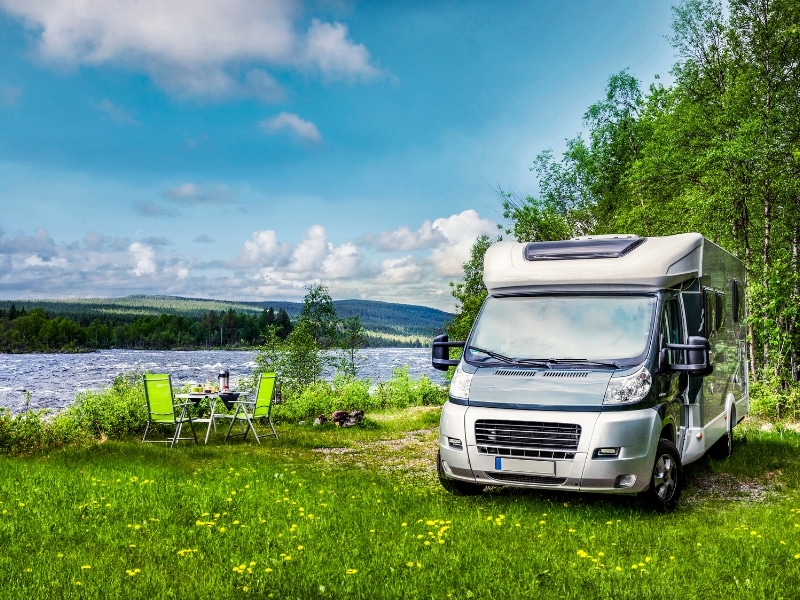
Preparing Your Van for Europe
When planning and taking a motorhome or campervan road trip across Europe you’ll need to consider whether you have the right accessories in and on your motorhome for touring.
If you’re heading off on a short two week campervan trip in Europe, then you may already be well set up for this type of holiday and won’t need any special preparations to have a fantastic trip.
New motorhome owners or those planning a longer tour may want to make some changes or additions. What you change or add will depend on how much you want to spend and how you want to travel Europe in a motorhome.
- Which countries will you visit?
- Will you wild camp or stay on sites? How off-the-beaten track do you want to be?
- Will you be travelling Europe in a campervan across seasons, or sticking to summer or winter?
- Are you intending to leave Europe and/or the Schengen area for different regions of the continent?
- What’s your budget?
For us, we have found the additions below to be worth the extra cost when spending more than a month or so on the continent. If you intend to travel long-term or regularly in Europe, then these extras will pay for themselves.
RELATED POST: Motorhome Accessories, Equipment & Options
If you’re planning on spending winter in mainland Europe then you may need heating in your motorhome. Some areas in countries like Spain and Portugal are warm enough year-round for you to not need heating, but if you head into the mountains, then you could well be facing freezing temperatures.
RELATED POST: Winter in a Motorhome – Tips, Tricks & Essentials
Gas and LPG
You can’t take a UK gas bottle to Europe and exchange it. This means if you run out of gas, you’ll have to carry your empty bottle and buy a bottle in whichever country you are, as well as a suitable regulator. This is not difficult, but it is a hassle and an added expense.
Disposing of your empty bottle is illegal, and it’s also illegal to re-fill Calor gas-type bottles at the pump, so there really is no easy way to get gas if you’re not prepared.
If you’re touring for more than a month or so, we would highly recommend a refillable Gaslow or Gasit system which can be filled in any EU country (including the United Kingdom) at the pump using a set of special adaptors.
You’ll save money every time you fill, LPG (called GPL in Europe) from the pump is around 70% cheaper than buying it in a bottle.
The downside with a refillable system is that in the UK lots of garages have stopped selling LPG at the pump as the take-up of LPG vehicles has been surpassed by electric technology. A good compromise is to have one bottle on a refillable system and one UK bottle, and we hear about more and more people doing this.
If you’re planning to visit Morocco in your motorhome , gas at the pump isn’t available (nor in Finland) so this does need careful planning.
RELATED POST: An Easy Guide to Motorhome Gas & LPG in Europe
If you are planning on free camping in aires or wild camping in Europe (if you’re a wild camping newbie, it’s the ideal place to start) then you will need equipment to ensure you have electricity when you’re overnight parking off grid .
This might include a solar panel and you may want to upgrade your leisure batteries. You could also consider a solar generator , which is portable and will provide you with enough power to wild camp as much as you like, as long as the sun is shining!
RELATED POST: An Easy Guide to Motorhome Electrics
Air Conditioning
With summer temperatures regularly getting into the early 40s in Europe, air conditioning can be a lifesaver. One summer in France, despite being dyed in the wool wild campers, we spent every night in a campsite or aire, just so we could plug in and have air con!
If a roof-mounted a/c unit is too expensive, take a look at portable air conditioning solutions – the technology has advanced in recent years, and some of them are pretty good. Make sure to check the size though, as they can be large!
If you’re travelling in summer, then an awning of some description is an absolute must. Having one fitted retrospectively can be expensive, but a drive-away awning, a simple gazebo or even a collapsible umbrella can do the trick.
Water Filter
If you’re planning on visiting countries where the quality of potable water is questionable, or you don’t want to drink de-salinated water (common in southern Spain), then a water filter is a great option.
We have a Nature Pure filter fitted, a job a competent DIY’er could manage. We love not having to buy bottled water and then having to cart the empty bottles around until we find a recycling point.
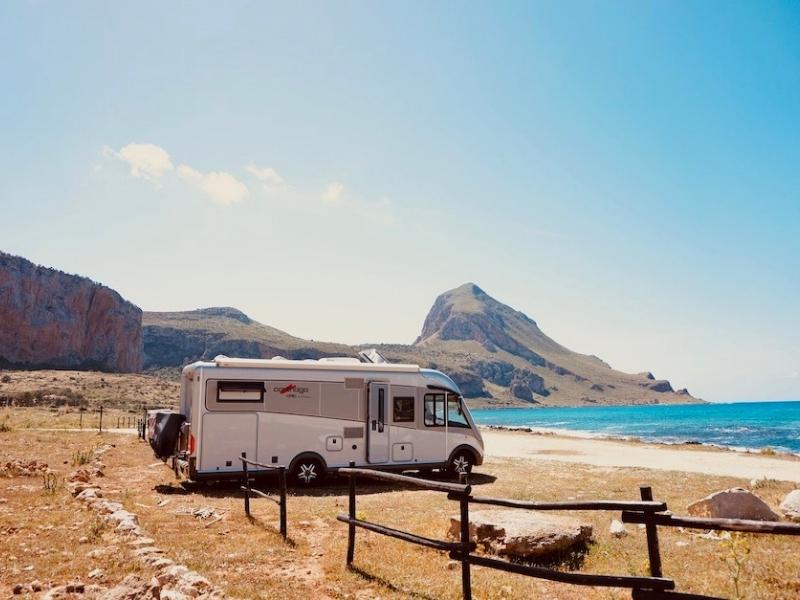
What Kit Do You Need In Your Motorhome?
Are you taking a 2 week campervan trip in Europe or longer? Will you be travelling Europe in a camper van across seasons and into different regions of the continent?
Packing List
Have a look at our essential motorhome kit list for an idea of what kit and gear we think is important when taking a motorhome to Europe. You’ll also find links to a free motorhome packing list covering kitchen, garage, gadgets , safety equipment and personal essentials.
RELATED POST: 101+ Motorhome Essentials You Need + Packing Checklist
Motorhome Internet & Wifi
Connectivity is important if you want to stay in touch with loved ones, post on social media and keep up with what’s happening in the world.
We know that information regarding European roaming on a UK contract changes frequently so we keep our post about motorhome internet and wifi up to date, so you can check the best equipment and European sim card options for your needs.
RELATED POST: An Easy Guide to Motorhome Wifi & Internet
Motorhome TV
We all like a bit of TV, and being in Europe doesn’t change that. There are lots of ways of getting TV in a motorhome, and when you’re abroad there are a few things to be aware of if you want to watch UK television.
RELATED POST: Motorhome TV – Five Ways to Watch in Your Van
You also need to consider how you’ll get out and about, especially if you intend to remain static on a site or an aire for more than a few days.
If you’re in an urban area, local buses, trams and metros may work, and public transport is the best choice for city visits . If you’re more remote you’ll want to be able to get to the nearest village or head out for a day.
Make sure you research thoroughly if you want to tow a car – the law regarding A-frames in Europe is often misquoted and not always clear. You may find some helpful information on various Facebook forums for motorhome owners, and on the UK Government website .
RELATED POST: The Best Motorhome Bike Racks & Bikes
Gross Vehicle Weight
What and how much you pack will also depend on the gross vehicle weight (GVW) of your motorhome and how much storage space you have.
As a general observation, if you fill your storage space you are likely to be overweight – just because you have loads of cupboards doesn’t mean you should fill them all!
Read our guide to understand how motorhome weights work and don’t forget to include your toys like bikes, kayaks , gadgets and so on when thinking about weight.
RELATED POST: An Easy Motorhome Weight Guide
Driving a Motorhome in Europe
Each country differs, but on the whole, driving in Europe is very safe – the continent has by far the lowest RTA fatalities in the world. Sweden and Denmark have the best safety records, with Bulgaria and Romania lagging, and everywhere else somewhere in between.
As long as you practice caution, take it slowly and follow road signage, you’ll soon settle into it.
We’ve had both right and left hand drive motorhomes, and although LHD is a little easier, especially on narrow roads. Right hand drive is not a problem if you have a willing passenger!
Be aware that the Republic of Ireland , Malta and Cyprus all drive on the right, just like the UK.
Satellite Navigation
There are hundreds, if not thousands, of motorhome routes through Europe. Make sure you have a motorhome sat nav that has European mapping, or use a satellite navigation app such as Google Maps, CoPilot and Maps.me
Yes, it’s possible to use a paper map but ideally, you want up-to-date information and be able to set your dimensions in the sat nav if you’re in a larger van. This helps to avoid routes with weight or height constraints, like low bridges and allows you to set your route to miss toll roads if you prefer to take the more scenic route.
RELATED POST: Motorhome Sat Navs: Best Models & Options for 2024
We would also recommend installing a dash cam, which is a five minute job if you buy a plug-and-play model.
A common scam, especially in Eastern Europe, is for a driver to pull in front of you at speed and then brake hard causing you to hit them. Unless you can evidence their actions, you will be held liable and will have to pay any excess on your insurance, and maybe lose your no claims bonus.
Be aware that dashcams are illegal in Portugal and Austria due to their privacy law surrounding filming people in public.
Speed Limits for Motorhomes in Europe
Speed limits for motorhomes vary across Europe, and can also vary depending on your weight. When you enter a new country, there is usually a roadside sign advising you of these limits.
If you use a sat nav, it will inform you of speed limits, as well as update you with traffic news, and let you know when you’ve crossed a border on your campervan journey.
Speed cameras are common in Europe, and may be fixed or mobile. Both types of speed cameras can be visible or hidden, and it’s easy to be caught, even if you’re over the limit by just a few kilometres an hour.
Your sat nav may be programmed to alert you to speed cameras, however, this is not legal in all European countries, so check with our country-specific information below – or maybe just stick to the speed limit 🙂
Don’t think that because you’re from another country you can avoid speeding fines. If your motorhome is registered in the United Kingdom or anywhere in Europe, there is a data-sharing protocol in place which means you’ll be tracked down in your home country.
Toll Roads in Europe
Tolls on motorways are common across Europe , and if you’re looking to get somewhere quickly and easily, taking the toll road is often the most cost-effective option.
With pay-as-you-go tolls, you can pay with cash or by card at the toll booth. We think the best choice is an electronic tag like an Emovis Tag , which is linked to your credit card and works in France, Spain and Portugal, or a Telepass device which works in France, Spain, Portugal and Italy.
Where a vignette (physical sticker) is required, you must order this in advance or stop at the first fuel station on the motorway as soon as you enter the country and buy one there.
Vignettes are required in Switzerland, Austria, Slovenia, Montenegro, Romania, Czech Republic, Bulgaria, Slovakia, Hungary, Moldova and Belarus, and you can buy some of these online at Digitale Vignette .
If your motorhome is over 3,500kg, arrangements will be different and you may need a physical onboard unit, which has to be collected and pre-loaded at the border.
In our experience, Norway and Portugal have the most complex toll systems, with different toll road operators requiring different processes. Check out each country in our motorhome touring guides.
RELATED POST: Tolls for Heavy Motorhomes >3.5T in Europe: Country by Country Guide
Fuel in Europe
Fuel costs in Europe vary wildly from country to country. Generally, the further east and south you go, the cheaper the fuel.
Greece is the exception to the rule and although the furthest south and east you can go in Europe, it has some of the most expensive fuel on the continent!
Use the excellent Mappr tool to see at a glance what you’ll pay per litre.
In some countries, like Italy , there are two prices for fuel – one for self-service and one for attendant service and the latter can be up to €0.15 per litre (or 57¢ per gallon) more expensive! Beware Italian garage attendants who usher unsuspecting road trippers to the more expensive pumps…
In Europe, gasoline is generally called benzine or sans plomb and in the UK it’s called unleaded petrol – the pump handle is almost always green .
Diesel is usually called diesel or gasoil , and the pump handle is always black . But, these names can change slightly by country, so if you’re unsure use a translate app to work it out.
Low Emission Zones in Europe
Low Emission Zones (LEZs) are areas, usually in towns and cities, where the most polluting vehicles are regulated and either cannot enter the area or have to pay to enter the low-emission zone. Most EU countries have LEZ in place.
Vehicle emissions are classified in Europe by Euro Standards, which determine and categorise a vehicle’s emissions to determine its pollutant levels.
Before you travel into a low emission zone (mainly cities) you first need to find out if your vehicle is affected – this will depend on the vehicle type, age and fuel.
Each county has different regulations like Crit’Air in France and umweltplakette in Germany. Some require you to pay to enter online, some ask you to buy a physical vignette or sticker, some don’t allow you to enter during specific times of the week and some only allow Euro 6 (the least polluting) vehicles to enter. It’s complicated!
If you are planning on visiting cities along your campervan route, this is an area to look at early on as it can take weeks for the physical sticker to arrive. Find out more about each country in our motorhome touring guides.
Common EU Driving Rules
- Under EU law, seat belts must be used in all vehicles. Children over 1.35m can use an adult seat belt. Those under 1.35m must use equipment appropriate to their size and weight when travelling in a car, like a car seat or booster cushion.
- It is illegal to use your phone at the wheel in all EU and European countries. In France and Spain, you may not even use a phone as a satellite navigation device or with hands-free equipment.
- All EU countries have different alcohol limits set in their drink driving legislation which may be different or lower to your home country. It’s best not to drink any alcohol if you’re planning on driving anywhere afterwards.
- All European countries with mountains have rules about snow tyres and snow chains. Make sure you check these rules if you’re taking a road trip of Europe in colder weather.
- Member states of the European Union have a standardised set of road signs, very similar to the UK.
- In many European countries, certain discourteous behaviors, such as rude gestures in Germany and honking the horn without cause in residential areas in Spain and Italy are offences for which you can be fined! Make sure you’re aware of the specific European driving laws for each of the different countries that you intend to visit.
Road Conditions
Some European countries have less money to invest in their roads, and generally, the further east you go, the longer the roads have to wait for repair.
Large potholes, badly laid tarmac, lack of road marking, and poor quality of repairs can make driving challenging on country roads, and even on motorways in some countries.
Go at your own pace until you’ve got the measure of your surroundings, and leave enough room between your car and the vehicle in front, so you can see ahead and avoid the worst bits!
Driving Standards
Driving standards across Europe vary, from the considerate and patient Norwegians to the fast but competent Germans, and the feisty and loud Italians!
Each country has it’s own distinct bad habits and the best way to learn is to watch the locals and take it slowly until you’re comfrotable with what to expect.
In Greece , the Balkans and Italy , overtaking on bends, at the brow of a hill and generally where visibility is poor, is very common. Other drivers tend to slow down to ensure there is room for all the vehicles on the road, but it can be very disconcerting the first few times it happens.
In France , drivers will sit very close to your bumper waiting for the opportunity to overtake. They will also have their indicator flashing, to let you know they want to get past, and they do seem to have a particular dislike of motorhomes!
In Italy , the drivers are incredibly impatient and will honk their horns at the drop of a hat. They don’t give an inch if you’re trying to enter the traffic flow, so you have to do as they do, and just go when even the smallest opportunity presents itself.
Even though speed is not limited on 70% of the German autobahn network , the roads are often so busy that a de facto speed limit is established. But if you do get an empty stretch, observe any signage before you put your foot down!
Regardless of the driving laws in each country, you’ll always see locals breaking them. Using phones at the wheel, not wearing helmets on motorbikes and blatantly ignoring the speed limits are common.
Don’t get sucked into thinking this is OK – local police seem to have a lot less tolerance for tourists breaking the rules!
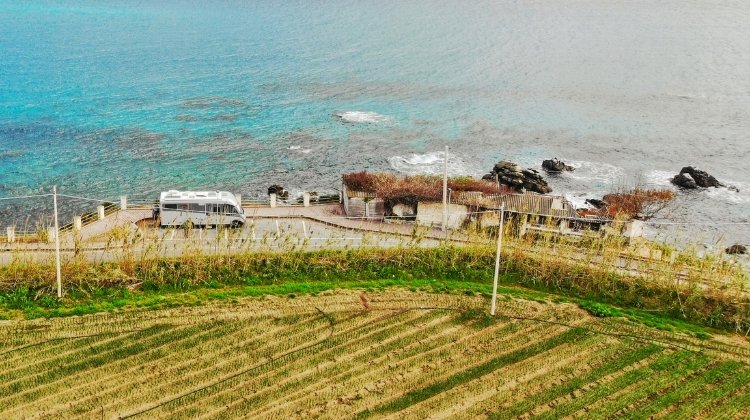
Europe Motorhome Destinations
How on earth do you choose where to go when touring Europe by campervan ? There are so many different places to see, how do you fit it all in?
You could spend literally years in a camper in Europe and not see it all. If you don’t have much time or only want to take short trips, you’ll need to decide what to prioritise when route planning.
Is this a break from work to chase the sun and chill? Are you a culture vulture looking for Roman ruins and ancient worlds? Do you love hiking in the amazing national parks of Europe? Or, like most of us, looking for a bit of both?
If you’re looking for inspiration or don’t know where to start planning, our ready made and downloadable motorhome road trips for France, Germany and Italy and three months in Europe include detailed interactive maps, travel times and distances, day by day ideas for destinations, hikes and activities plus recommendations for campsites and aires at every destination.
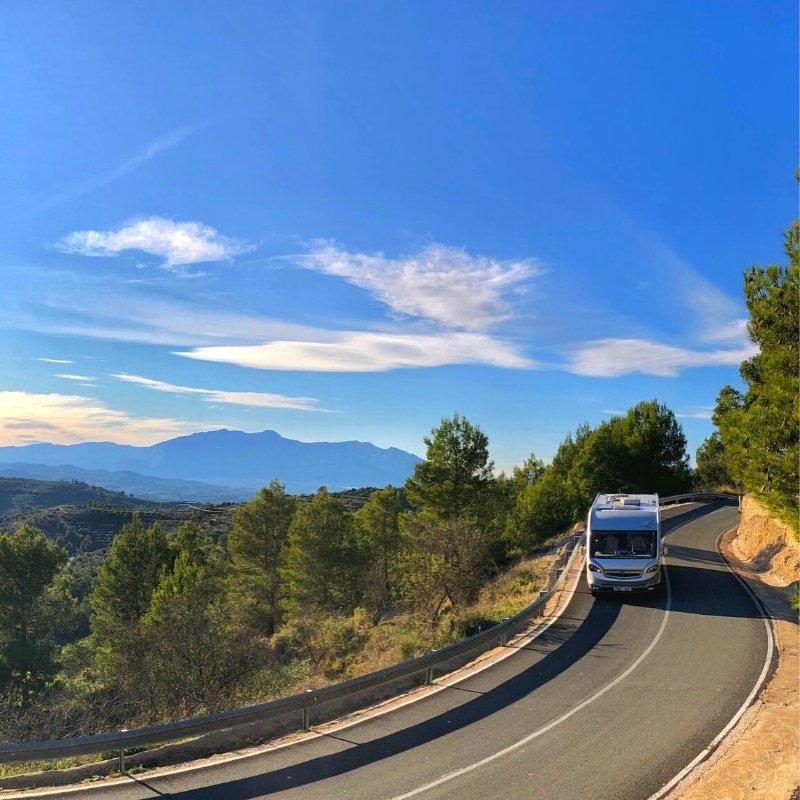
Motorhome Touring Guides
Check out our motorhome touring guides for the most popular European countries, where you’ll find information about driving, motorhome services, camp sites, wild camping spots, suggested routes and top destinations. Be inspired by stunning landscapes, mountains and coasts and incredible road trips .
Motorhome Germany – A Complete Touring Guide
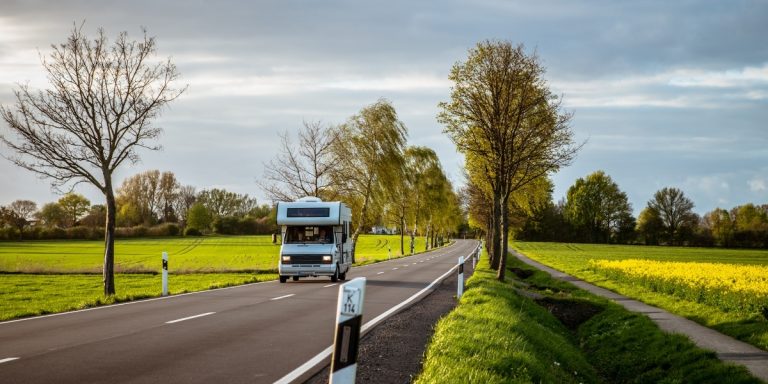
The Complete Guide to Motorhome Touring in France
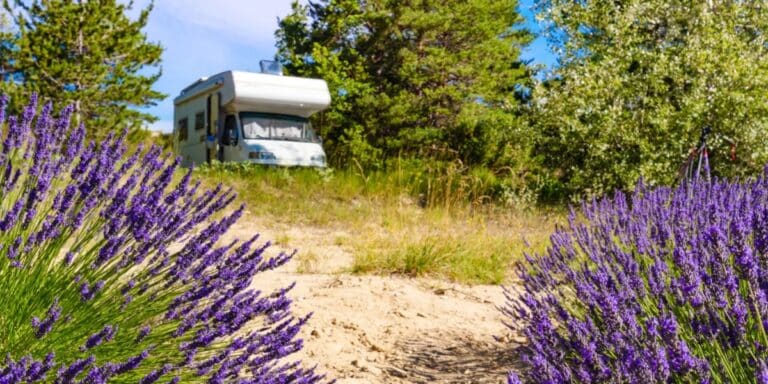
How to Tour Spain in a Motorhome – A Complete Guide
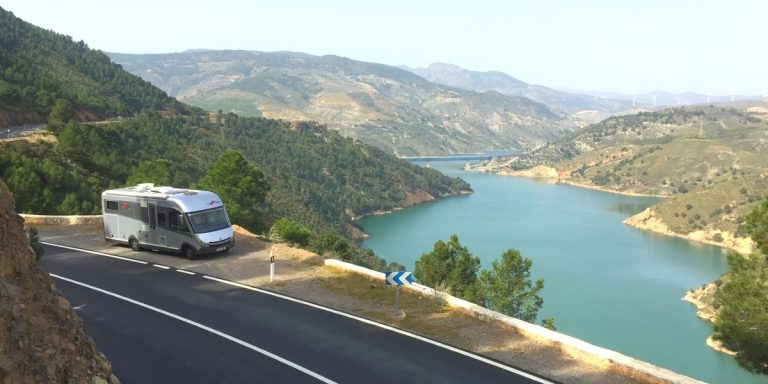
Top Tips for Touring Portugal in a Campervan & Motorhome
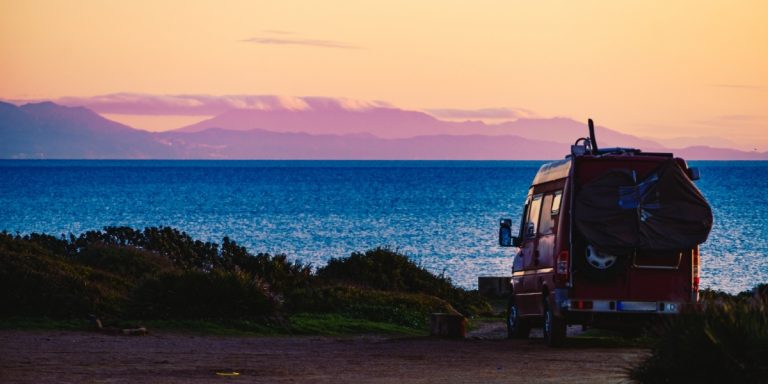
How to Tour Norway by Campervan
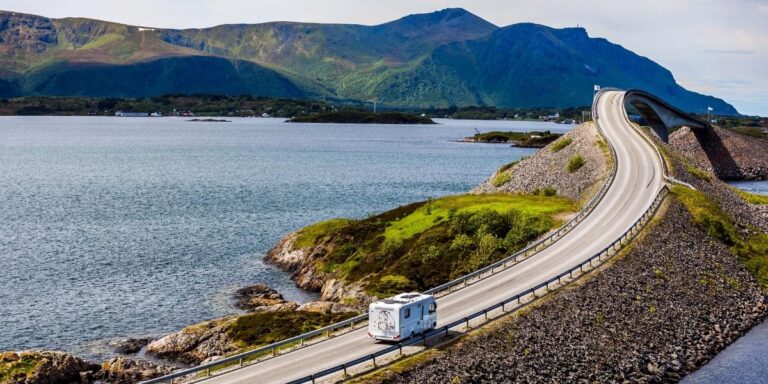
The Complete Guide to Touring Italy by Motorhome
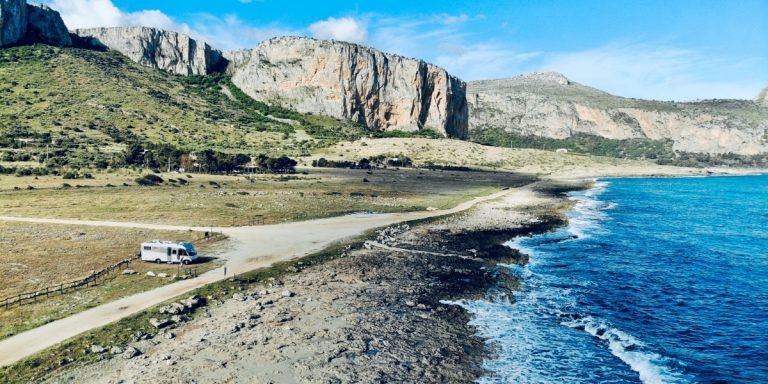
Motorhome & Campervan Greece – Complete Guide
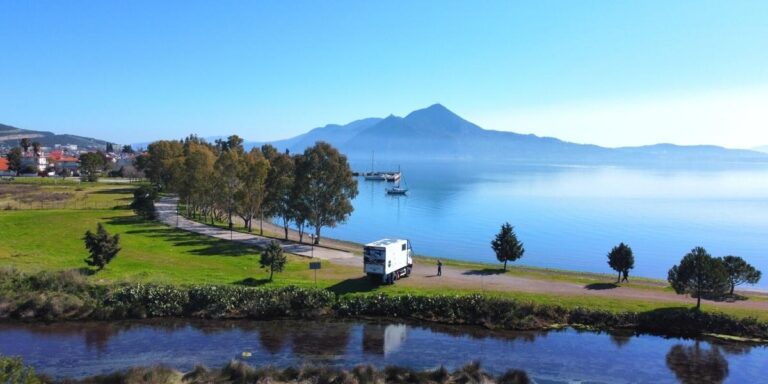
Planning Your Morocco Motorhome Adventure
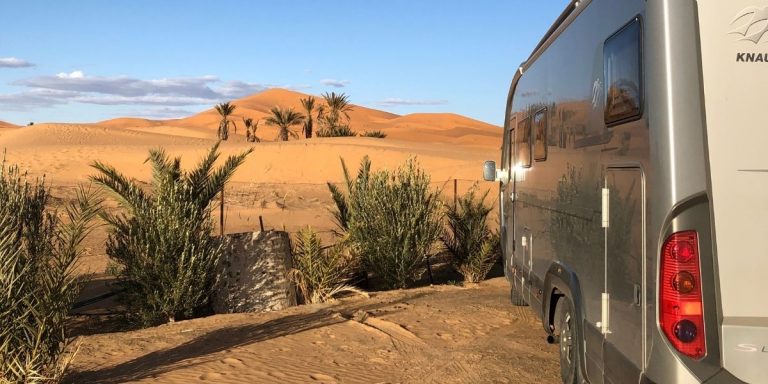
Motorhome Stopovers & Travel in Belgium
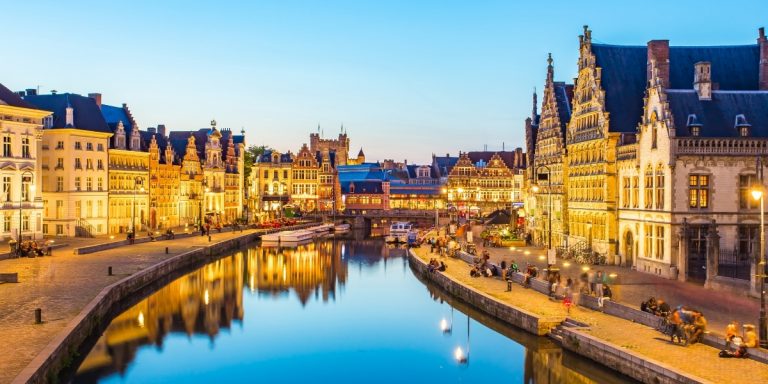
Motorhoming in Ireland – A Complete Guide
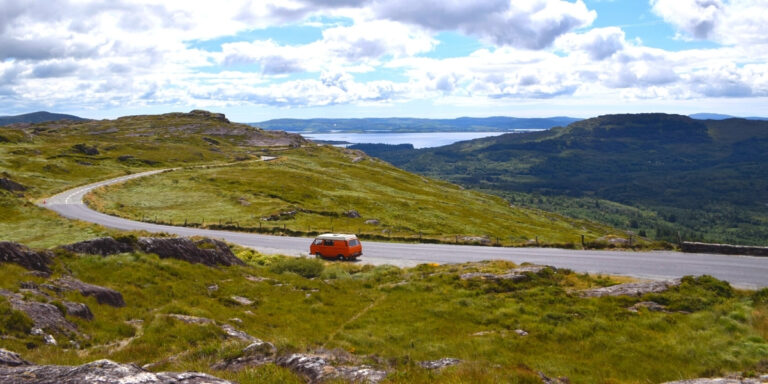
The Best Motorhome Holidays in Europe
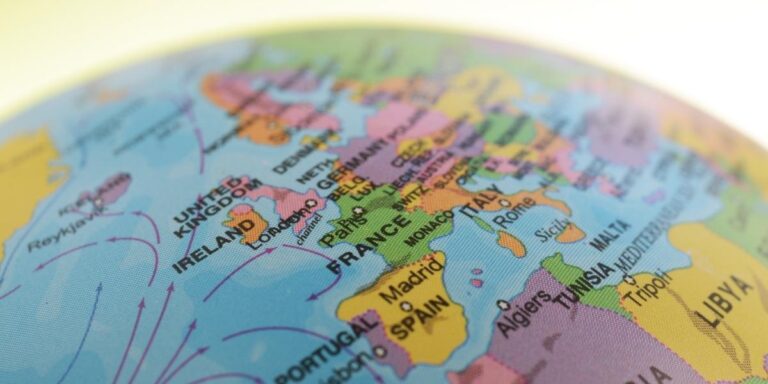
Motorhome Route Planner Europe
Ok, so now you’ve got some ideas about where to go on your motorhome trip of Europe, you need to plan your Europe travel route.
Planning a route for touring Europe in a campervan can be as complex or as simple as you want. Some people like a clear plan and a short amount of driving time per day with overnight stops booked or planned in advance, others like to just go with the flow and see what happens.
It’s why we fall out every time we look at a map or start any road trip planning!
RELATED POST: How to Plan a Europe Road Trip – The Complete Guide
Do you want access to our FREE resource library packed with travel resources & motorhome checklists?
Overnight Stops for Motorhomes in Europe
When it comes to where to stay overnight in a motorhome or campervan, Europe has lots of great options;
Motorhome Campsites
Campsites are a great option if you have a family or you like to stay out for more than a few days at a time. They also make great overnight stays if you’ve been on the road for a while and facilitate things like clothes washing and cleaning your van.
We love a good campsite after a month off-grid or a long trip. Suddenly, everything seems effortless – no worries about whether there will be enough sun to top up the leisure batteries and no issues about how long it takes to rinse the conditioner from my hair in the shower! If there’s also a bar, we look forward to meeting fellow motorhomers for a good chinwag!
One way to save money on your trip is to get an ACSI card. This discount card is invaluable if you’re planning to use European campgrounds, with the scheme giving you up to 60% off per night prices out of high season. This can mean a site for as low as €13 a night.
It’s worth getting this sorted before your camping trip to Europe as ACSI need a couple of weeks to post the card and books to you.
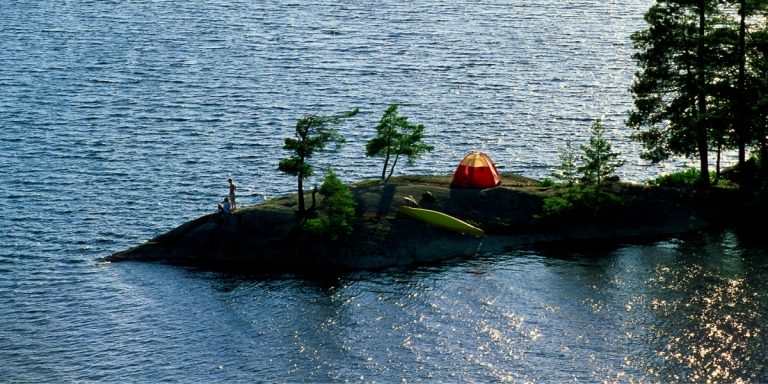
The Best Campsites in Europe – For Campers, By Campers
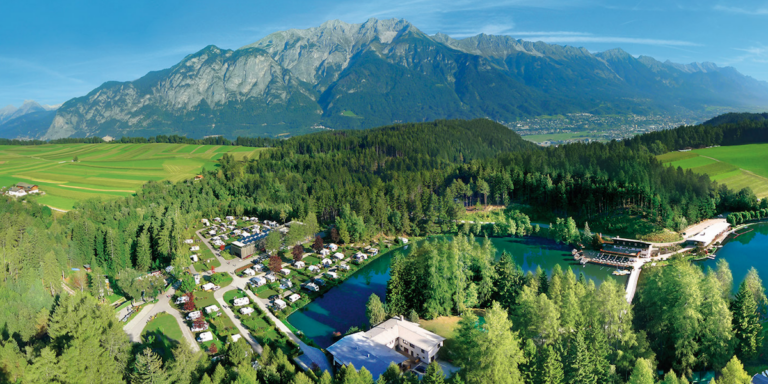
ACSI Camping Card – 2024 Review & Step-by-Step Guide
Motorhome aires.
Motorhome aires are a great way to stay overnight for very little money, and can often be found in popular small towns and villages in the countryside of Europe from the north coast of France and the French Riv to the beaches of the Peloponnese.
French aires have paved the way for other countries to set up similar schemes, where the aire is funded by the local municipality to encourage motorhome visitors into the area.
There are now more than 10,000 aires across Europe, and many of them are like free campsites, with services often provided at no extra cost.
The costs and arrangements at each aire differ, so make sure to read the rules when you arrive. Aires cannot be booked and work on a first come, first served basis.
Aires in popular destinations fill up quickly, so make sure you have a back-up plan just in case, especially after a long drive when all you want to do is relax.
Park4Night is a great app for finding aires, or use All The Aires books to identify where you want to stay.
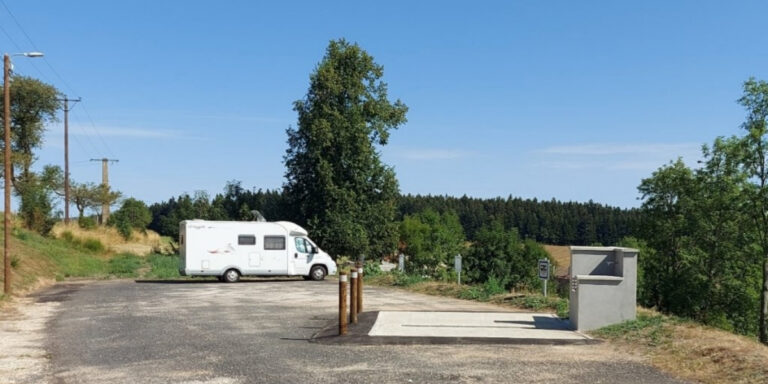
Motorhome Aires in France – All You Need to Know
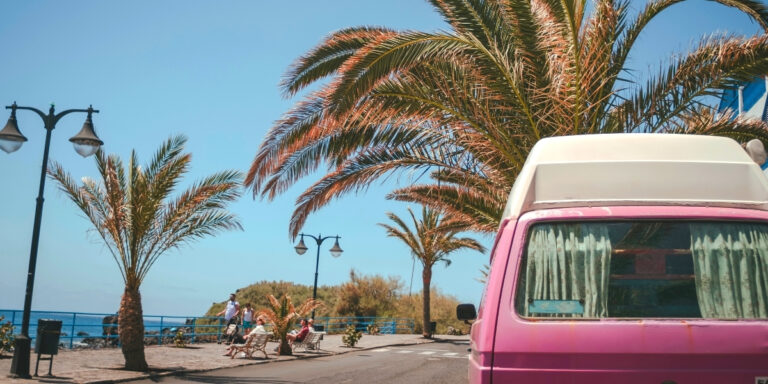
Motorhome Aires in Spain – All You Need to Know
Wild camping.
Another popular option, motorhome wild camping is widely accepted across Europe (except Portugal, which has really cracked down on this).
If you’ve only ever motorhomed in the UK, you might be surprised at the ease with which you can wild camp your way across the continent, without raising eyebrows or upsetting the locals. Much of Europe is much less densely populated than the UK and there are vast areas of land which are not populated at all that make good places for an overnight parking spot.
There are some rules (and a few unwritten ones too) which will help you find the right spot and stay safe when wild camping. Enjoy the freedom and hopefully a stunning view!
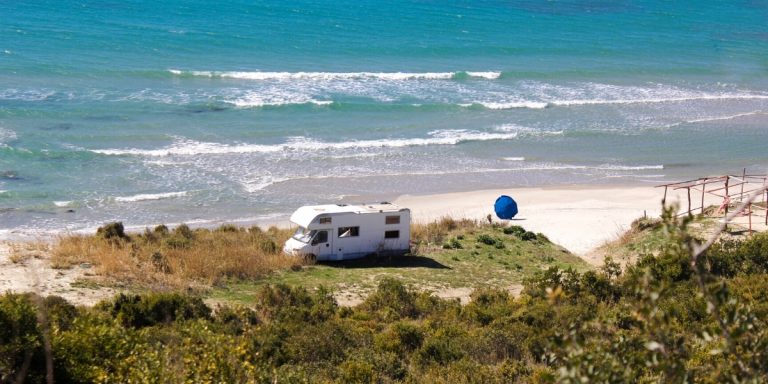

Motorhome Wild Camping – Your Complete Guide
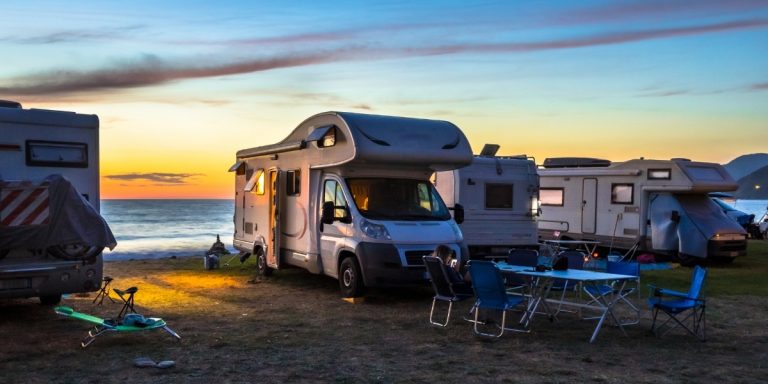
How to Find Free Overnight Motorhome Parking UK & Europe
Alternatives to wild camping.
If you’re not a wild camper at heart but don’t always want to stay on a site, there are lots of schemes to help motorhomers stay overnight in interesting places and are easy to build into your road trip itinerary if you want to get off the beaten path.
From France Passion to Portugal Easycamp , In Camper Con Gusto in Italy and Espana Discovery , all these schemes offer a place to stay overnight in a motorhome.
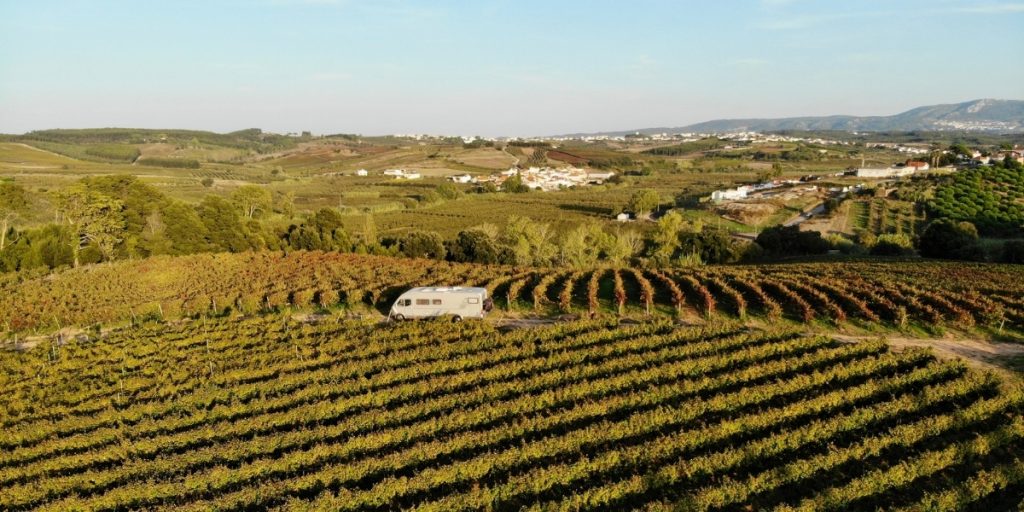
Motorhome Services in Europe
Another surprise to UK motorhomers is just how easy it is to find services in Europe, one of the great things about motorhoming on the continent. Right across western Europe you’ll find services on a regular basis, almost in every town.
Many are free, some have to be paid for, but it’s usually no more than a few euros to empty your toilet cassette and grey waste, and fill up with fresh water. This makes the idea of camping off-grid so much easier.
Services can be found in aires, fuel stations, motorway services, supermarkets and on the outskirts of towns and villages. Use Park4Night to find services near you.
RELATED POST: Living in a Motorhome in Europe – Your Complete Guide
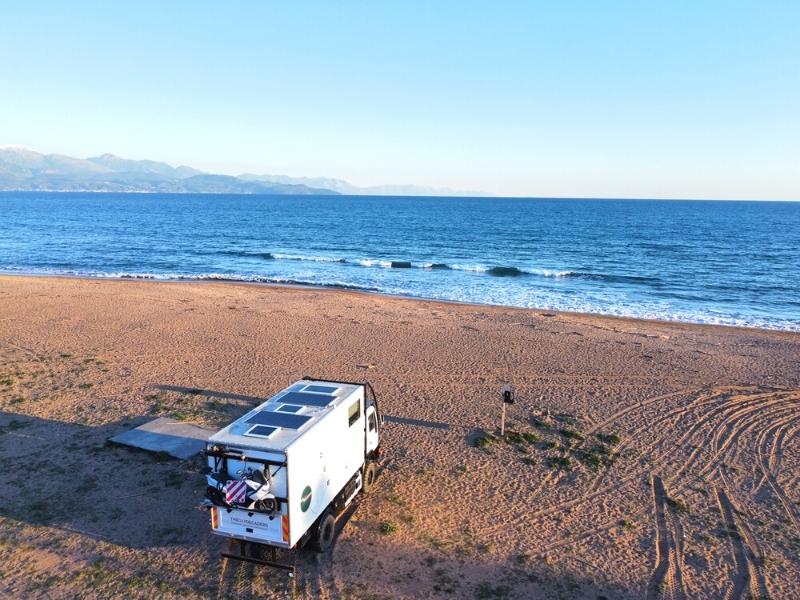
Van Life Europe
You’ve done it… you’re on the road and starting your European motorhome tour, although adventure is probably a better word!
Frequently Asked Questions
Whilst we all have views about van life in Europe, some topics crop up time and time again. See our post about the questions we always get asked – if your burning question is not there then feel free to email us . We’re always happy to give an honest answer if we can and we love questions.
What do you do if something goes wrong?
Things can, and do, go wrong. At the time, it can be very anxiety provoking, especially if you don’t speak the language, or the problem is taking a lot of time to resolve and detracting from your holiday.
We drove around France for three weeks (it was August and EVERYWHERE was closed) with our over-cab bed held up with acro props and it was really stressful.
A good first place to ask for help is our Facebook group – remember to share the make and model of your vehicle when asking for help. Try researching your problem on the internet, there is so much information available, you may just find the answer.
Search in Google for a motorhome workshop near you. Most of these places are run by motorhomers themselves and they will help if they possibly can.
You will also find a list of top 20 motorhoming FAQs here – from why your fridge isn’t cooling to why your tap doesn’t work.
How much does it really cost to tour Europe in a motorhome?
Lots of people ask us how much it costs to live in a motorhome in Europe. Our answer is always the same – it depends on how you want to live.
Make sure you have emergency funds accessible to you, whether that’s cash stashed in a secret place (not our recommendation) or an emergency credit card. Read more about general safety in our motorhome security guide.
RELATED POST: What Is the True Cost of Touring Europe in a Motorhome? A breakdown of weekly, monthly and annual costs + tips to help save money on the road
How do you make sure your relationship survives?
Being with your other half 24/7 in a small space may not be quite as romantic as you imagine! Motorhome life may come as a shock if you’re both used to rushing in from work at 6pm, collapsing in front of the TV before bed and then repeating for five days a week.
RELATED POST: Ten Truths of Travelling Together
How do you manage preventative maintenance on the road?
Prevention is always better than cure as far as motorhomes are concerned. In our experience, water and condensation are the two areas where people have the most problems.
Often it’s a simple issue, but the first time something goes wrong can be challenging and if you don’t know, you don’t know.

Preventing Condensation in Your Campervan: Top Tips & Tricks
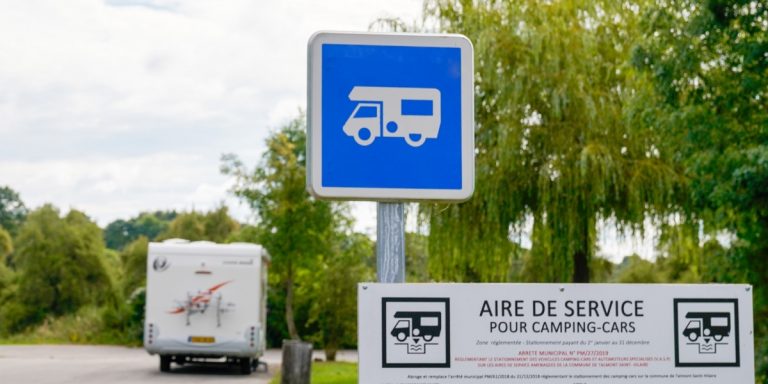
An Easy Guide to Motorhome Water Systems
Are you looking for more useful motorhome advice check out these top posts….
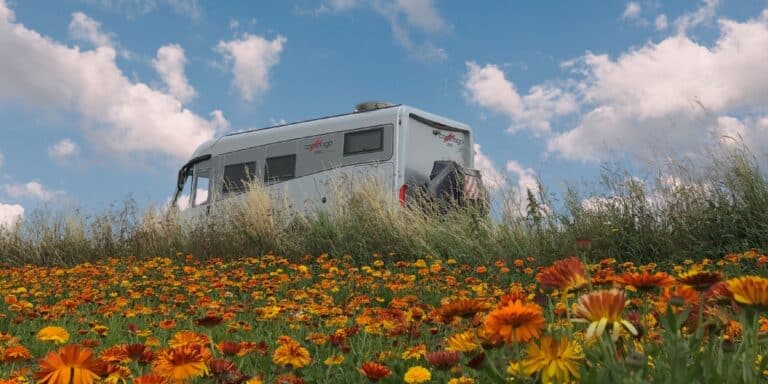
Motorhoming Tips for Beginners: Essential Know How for Motorhome Life
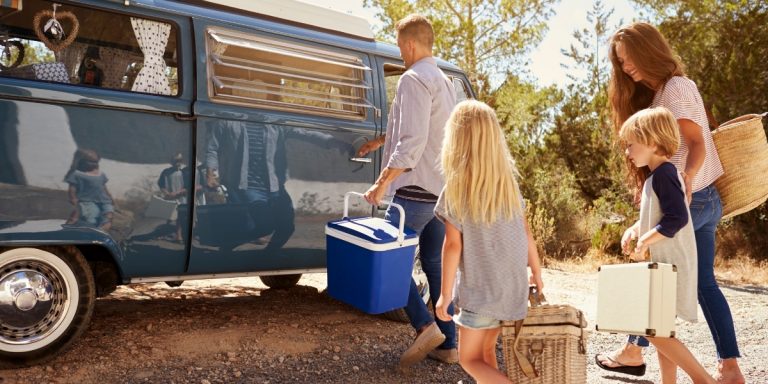
20 Amazingly Simple Camper Hacks
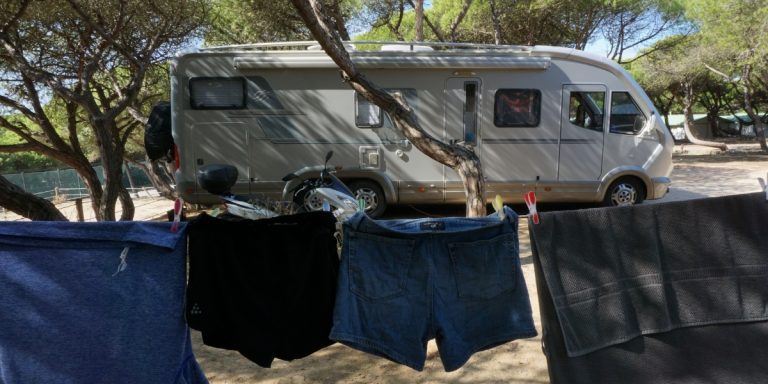
Motorhome Washing Machines – Which Is Best for You?
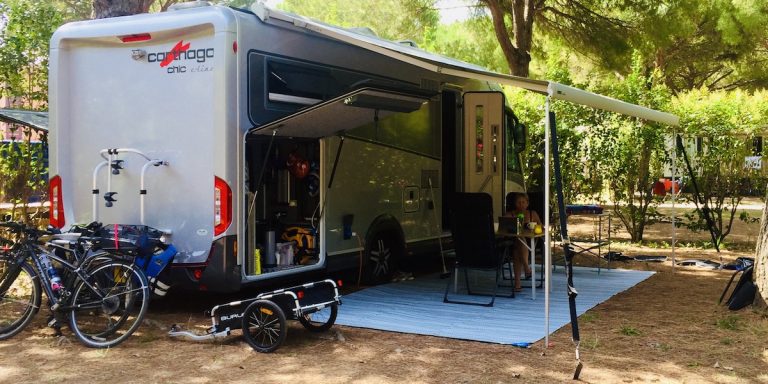
How to Take Your First Motorhome Trip (& have an amazing time!)
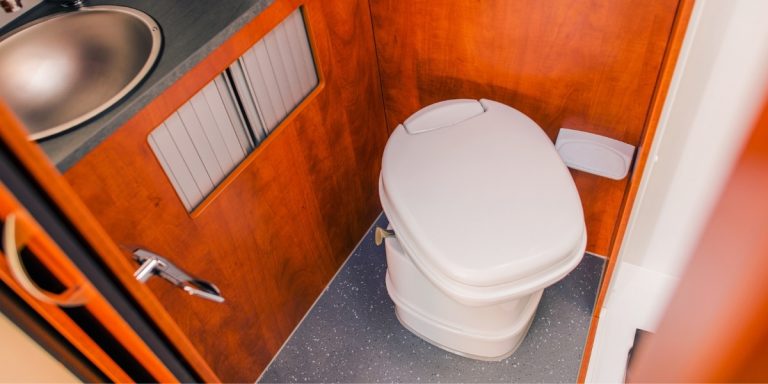
On-the-Go Convenience: An Easy Motorhome Toilets Guide
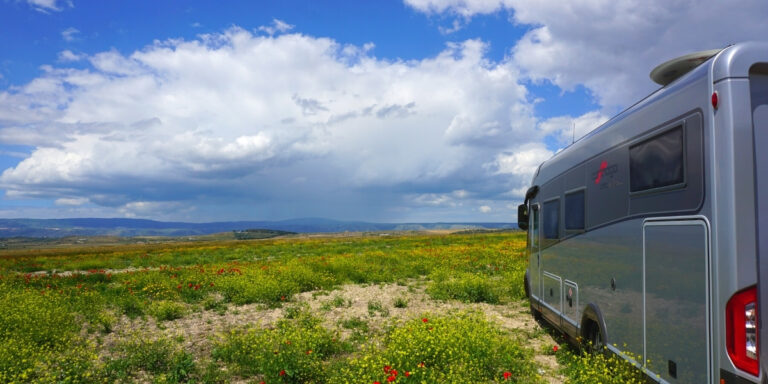
Motorhoming Made Easy – Your Top 20 Questions Answered
Love it pin it.
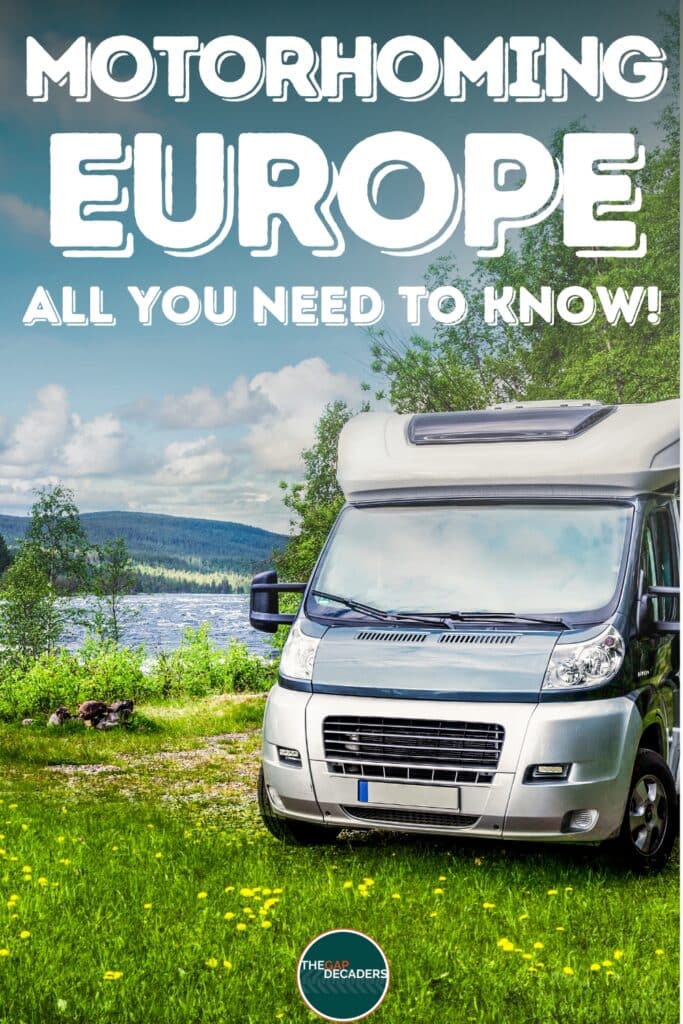
- USA RV Rental
- Canada RV Rental
- Europe RV Rental
- Netherlands
- Switzerland
- UK - England, Scotland
- Australia RV Rental
- New Zealand RV Rental
- New-Zealand
- New Zealand
- © 2024 Ideamerge LLC
RV RENTAL EUROPE
Guaranteed best prices for europe campervan or motorhome rental.
Our Europe RV rental customer reviews average 4.7 stars out of 5 , based on a massive 728 Europe motorhome rental customer reviews.
MOTORVANA uses buying power to offer you big RV rental savings. Moreover we facilitate the whole Europe RV rental and camper van hire booking process, providing ultra-responsive customer support and a true total motorhome rental cost you can literally count on. We give you peace of mind.
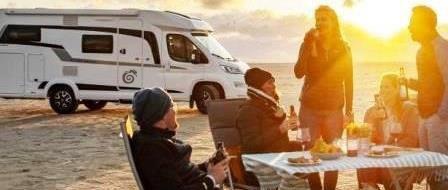
Book your Motorvana Europe RV rental or camper van hire early to secure best price and availability. Many clients book their Europe motorhome hire holiday months in advance.
Motorhome hire in Germany is considerably cheaper, i.e. lower cost, than elsewhere in Europe. Indeed, you should strongly consider starting and ending your "camping car" tour of Europe in Germany — even if the bulk of your RV rental holiday lies elsewhere in Europe.
Germany lends its outstanding motorhomes and campervans — featuring manual and automatic transmission RVs — along with its central European location, and its leading international airports at Frankfurt and at Munich to motorhome hire tours of the more extended parts of Europe, including Italy, Eastern Europe, Greece, and Scandinavia, as well as neighboring France, Holland, Switzerland, and Austria.
Extra-country one way motorhome rentals are possible with motorhomes or campervans picked up in Paris or Marseille, France, and with our Scandinavian supplier Touring Cars. Intra- country one way auto caravan hire is possible within France, Italy, Scandinavia, and the United Kingdom — and now also from England or Scotland to Ireland.
Motorhomes rented via Motorvana can be taken by ferry or the Channel Tunnel to/from the United Kingdom and Ireland from/to continental Europe. Of course the motorhome's steering wheel will be on the left side of continental-Europe-based RVs and on the right side of the UK-based RVs . Though it is perfectly legal to drive such European camper rentals on the other side of the road, as it were, the driver will typically not be able to see around immediately preceding vehicles well enough to overtake those vehicles and will therefore in this respect have to rely on the eyes of a trusted passenger.
Similarly, the European motorhomes and camper vans can be taken between continental Europe and Scandinavia (now much more accessible, via a bridge between Denmark and Sweden) and by sea or land to Greece. The RVs can be driven in most of the road tunnels through the Alps in Switzerland, Italy, and Austria, and in most of the road tunnels in Norway.
Most of the motorhome and camper van rentals in Europe involve manual transmission RVs. However, these are mostly clutchless manual transmissions, so they are remarkably easy to operate. And it is possible to find an automatic transmission RV for hire, especially in Germany. Just ask us, or look for the emphatic "AUTOMATIC" transmission notation in our Search results. We want you to enjoy the very best RV rental in Europe.
How much does it cost to rent an RV in Europe?
RV travel is truly a big part of the European lifestyle. Nothing unlocks the continent of Europe like a holiday home rental on wheels, a motorhome sweet home. Unpack just once and waste none of your precious time!
So many well-marked campgrounds dot the European landscape that finding them is usually a no-brainer. Look for the RV camping Europe sign: either a "C" with a tent superimposed or else a stylized trailer. Europeans view camping as being cheap, socially oriented accommodation rather than the rugged, back-to-nature experience North Americans tend to picture. As such, organized campgrounds in Europe are good places to meet the middle-class sector of European society, a somewhat different crowd than you'll find in hotels or hostels. Europeans RVers tend to spend more time outside their RV than do North American RVers, and as such you will tend to meet more people in a campground there than you will in a campground (RV park) in the USA or Canada.
The major European cities, too, harbor popular campgrounds. Most budget guidebooks describe the best campgrounds in and around the bigger cities or otherwise-popular spots. Nearly every town in Europe is graced with a few RV friendly campgrounds. If you plan to do lots of camping, however, a special guide is worth its price. Consider this snippet from Mike and Terri Church's Travelers Guide to European Camping:
Campgrounds are also used by Europeans as destinations for extended vacation visits. Many Europeans get a month off during the summer, usually in July or August, and they flock to the seacoast and to sunny southern locations. The vacation campgrounds that they use are a little more like what we Americans are accustomed to. They are located near beautiful natural areas or places with great weather. Places like the Alps, the Mediterranean coastline, or southern Portugal. Even in these places, though, the campgrounds tend to be privately owned and provide more in the way of facilities and entertainment than we are accustomed to. Best of all, campgrounds are never crowded except in July and August, the rest of the year most places aren't even half full.
Remember too, just because you're traveling Europe by RV you don't need to spend every night camping. You can indulge in a sprinkling of hotels. You can sample a hostel or two, many of which welcome RV's. You can incorporate train and bus and moped and especially bicycle travel into your trip. Hey, you can put the movie Planes, Trains and Automobiles to shame — and we encourage you to.
Yet driving in Europe is suprisingly easy. The roads are great. The signage is great. The rules, familiar. And as Arthur Frommer once said, "No one has seen Europe who has not traveled in it by car [or by RV!]."
Camping, of course, is a money saver. Discreet free-camping (alias dry-camping, boondocking, wild-camping) in an RV or camping car, although we do necessarily warn against it (for safety's sake) and although explicitly prohibited in certain countries, is tolerated almost everywhere in Europe, the most notable exception being Croatia, a great place to hire an RV and enjoy seaside and mountain camping. Nearby, Romania RV hire and travel is the cheapest in Europe. Sweden officially sanctions wild-camping, and Norway and Finland tolerate wild-camping in principle. The people of those countries consider free-camping a right: everyman's right (Allmansratten), they call it. To properly exercise that right, as it were, a person camps on unfenced and uncultivated land, at least 150 meters (just over 150 yards) away from any dwelling, stays no more than two nights, and cleans up after themselves. Please note, however, that Allmansratten requires RV's park either directly on a road or on a paved or gravelled parking place.
When not in Scandinavia, you could take your chances and free-camp unannounced in some discreet spot or, if you are intent on free-camping, you could do the right thing by asking permission of the land owner. If you choose the second option, chances are your host will engage you in a fascinating conversation and, if you're lucky, invite you to dinner. Of course you can sleep in your vehicle if you like.
Again, though, we officially recommend you do not free-camp, just to be safe.
European RV campgrounds usually itemize fees — charging for each person, tent, vehicle and trailer. Campgrounds in Europe are rated on a four-star scale; and apart from the basics, four-star operations are likely to provide several of the following: laundromat, grocery store, restaurant, bar, disco, swimming pool, water slide, sauna, tennis courts, fitness facilities, miniature golf course, horseback riding, a library, and a playground. Absolutely great for kids! Many campgrounds also offer mobile homes or bungalows for rent. Unless you plan to rent one of these, don't worry about reservations: European campgrounds are never "full"; the operators will pack you in if need be. Individual campsites are typically not delineated. But beware that most campgrounds lock the gate for the night at about 22:00 (10:00 pm) and for lunch from noon to 14:00 (2:00 pm). Also, most campgrounds in Europe do not provide picnic tables, and, sad to say, they disallow campfires. Though the toilets can be perplexing, we'd rather let you discover their wonders for yourself than force you to suffer through a description here. As for the showers, expect all varieties; and if using one that's token operated, make sure you know how much time a token gives you.
Most European motorhomes have chemical toilets with detachable cassettes designed to be emptied in special receptacles — called "Chem WC" units — installed at most campgrounds, or into a regular toilet. Because large, heavy, irremovable holding tanks (i.e. blackwater tanks) are not so common on European motorhomes, many campgrounds in Europe don't have a North American-type dumping station. Campgrounds or other camping facilities in Europe that do have such a facility are denoted by the trailer pictogram and/or the words "Entsorgungskanal" (German), "scarigare" (Italian), or "vidoir" (French). The German auto club ADAC publishes and distributes — free of charge to members of affiliated clubs — a list and map of such dumping stations. For a charge, some campgrounds will allow you to dump without staying overnight. Don't dump these tanks by a highway or in a field — this is highly illegal. If you must, visit a municipal sewage treatment plant to do the job.
Most campgrounds provide central drinking-water taps with a hose connected so motorhomers can fill their tank.
Most European motorhomes are wired with 10 ampere circuits that, given the 230 Volt standard, might allow you to use up to 2300 Watts (that's 10 x 220) of power at any one time. Note, however, that at 230 V or so you need about half the amperage that you need at about 120 V to result in the same power (Watts). A 1000 Watt hair dryer requires only about 4.5 amps in Europe whereas in the USA it requries about 8 amps. Some campgrounds offer a meter at each site, charge you to hook up, and then charge per kilowatt-hour. Others impose an inclusive charge. Since you may have to park quite a distance from a socket, a 25 meter connecting cord (the longer the better) designed for outdoor use is helpful.
You should tell us in advance, and the rental depot on pick-up day, all the countries you plan to visit and if you plan to use the RV for a special purpose.
If you plan to take the vehicle on a ferry, you should contact the ferry company in advance to be sure you bring all the vehicle documents required to board.
Motorvana: Free Your Travel
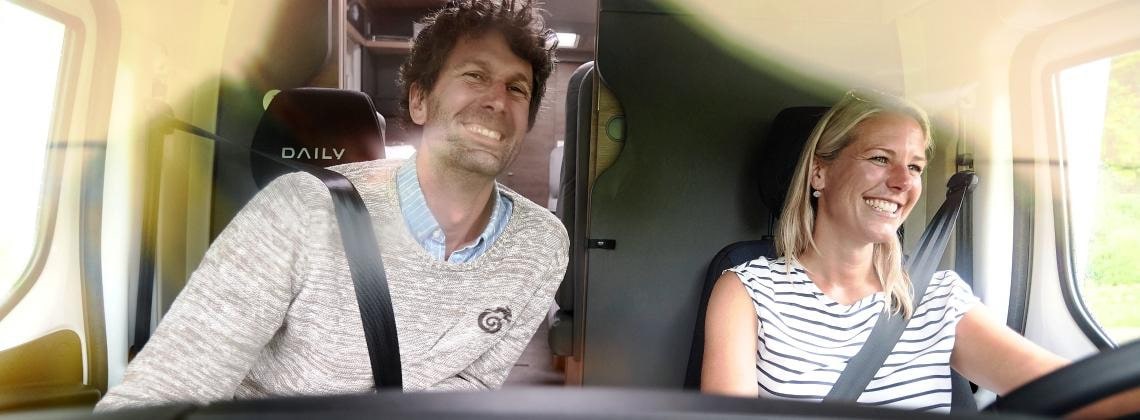
Cost Of Renting A RV In Europe
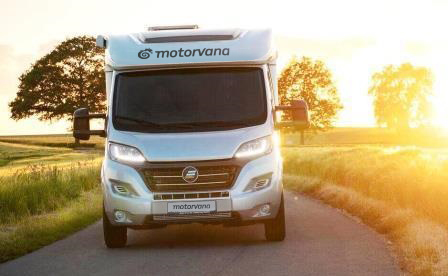
How much does it cost to rent an RV in Europe? Several variables determine the cost of a motorhome rental or campervan hire in Europe, including RV size, seasonality, and optional extras.
For exact total costs, please submit a SEARCH on our relevant European country page. Our online order software will present all the RVs, whether motorhome, campervan or truck camper, ordered by price.
If you then click on the MORE INFO button below a RV image, all details about the RV, price, inclusions, depot location, and policies will be presented.
Various optional items are available for hire with a RV rental, and these greatly affect the total cost. These items (e.g. camping table and chairs, bedding, shuttle transfer) are presented during the ADD OPTIONS step of our online order process, along with selectable pick-up and return times.
In many cases the RV rental company offers free miles / free kilometers and/or an inclusive package that bundles together a set of optional extras for one relatively low price. Again, don't worry about those packages. Just select à la carte the options you want and our software will apply an inclusive package if such is available and if such package indeed gives you a lower price than actually paying for the options à la carte.
Similarly, RV rental companies often offer specials that involve optional extras. Such specials can be complicated and hard for customers to understand. Again, our software is carefully programmed and maintained to automatically apply any specials that benefit you.
We think our software is unique in terms helping our customers optimize their RV rental and minimize their costs in these important respects. Our aim is to provide you with the best value and to increase our sales as a result.
For a variety of information and websites related to traveling Europe by RV, please visit our European RV Travel Resources page.
Motorvana Europe RV Rental Reviews
Loved Our Camper Van Hire & Tour of the Alps We recently rented a campervan from Motorvana and toured from Lyon to the Alps region where we did some spring skiing for 3 weeks then headed to the French Riviera for 10 days... we loved this mode of travel and found campsites easily in most places we went. My husband did all the driving and he was most impressed by the European drivers as opposed to the drivers in the USA. He found the camper van fairly easy to operate even touring the mountains with the tight hairpin turns. Read More … Barabara Falk & Ladd Burmaster, USA
Incredible RVing Experience & Support We wanted to thank Motorvana and Avis Car away for the most incredible experience traveling through France, Switzerland and Germany. The Class B+ motor home provided was exceptional (we wish comparable vehicles were available in North America). The service and support from Motorvana made the planning and reservation process effortless. Responses to our many questions were incredibly prompt and thorough. Read More … Stefan & Nicole Price, Canada
Exceptionally Professional Booking Service Motorvana in conjunction with Mc Rent Germany have for five times now been our preferred motorhome rental companies for European vacations. The most recent European experience with these companies was as usual, exceptionally professional from booking to end of hire no doubt helped by Eric and Freik at Motorvana backed up by Joerge at McRent Frankfurt. If you can find a better motorhome rental company for European RV travel I would be surprised. Read More … Graeme Phillips, Wollongong, Australia
Free Your Travel
- Disclaimers & Notices
This website uses cookies .
Motorvana TM and the Spiral Shell Hare logo are trademarks of Ideamerge LLC. All rights reserved. © 2024 Ideamerge LLC
- You are now viewing the UK site, for Quirky Campers NZ click here
Rent out your van, fund your adventures. Find Out How
- Glastonbury Festival
- Cream of the Quirk
- Just for Two
- Pet Friendly
- Festival Friendly
- All-Electric
- Offices on Wheels
- Last Minute Discounts
- Seasonal Discounts
- Long Term Discounts
- Booking Conditions
- Buy a Campervan
- Sell Your Campervan
- Quirky Converters
- Register Your Services
- Rent out your campervan
- Gift Vouchers
- Conversion Guide
- Ooni Pizza Ovens
- Virtual Workshops
- Accessories
The Ultimate Guide to taking a Campervan to Europe
27th June 2024 Laura Hammond -->
Quirky Campers Guide to Campervan EU Travel
You can take a campervan or motorhome to the EU – all you need is the right paperwork, information and gear. Taking a campervan road-trip through Europe is the holiday bucket list dreams are made of, but it can seem daunting at first. This comprehensive and easy to use guide will tell you exactly how to travel to Europe in a campervan. Quirky Campers have been running for over ten years, and in that time we’ve amassed expert knowledge on all things campervan. We want to share that knowledge and experience with our customers so that you can enjoy the freedom and excitement of campervan travel in Europe.
Why Travel to Europe in a Campervan?
Taking a road trip in a campervan offers freedom, fun, and a stress-free holiday. You can bring your pets, the whole family, and even the kitchen sink along with you. Packing is a breeze when you can travel with everything you need. As you drive through Europe, you can enjoy French patisserie in the morning and Italian pizza in the evening. Explore the mountains and lakes of Switzerland, and the deep forests and castles of Germany—all at your own pace, without the rush of check-in and check-out times, or the chaos of summer in airports. Experience all of Europe at your fingertips with the freedom of the open road.
Where in Europe can I travel in a Campervan?
Europe and the European Union are distinct entities. It is important to check your insurance and plan ahead to ensure you only travel in countries where your insurance and breakdown coverage are valid. If you’re renting a campervan from Quirky Campers – discuss your travel plans with the van owner ahead of your trip to be sure you’re covered the whole time. The countries in the European Union include:
- Austria
- Republic of Cyprus
- Czech Republic
- Finland
- Ireland
- Netherlands
Plan ahead and do your research for a smooth and stress free road-trip. Ferries are usually best booked in advance, as is Le Shuttle (Euro Tunnel), plan for delays and arrive early for any border crossings especially in summer and high seasons.
How much does it cost to travel Europe by campervan?
Travel costs can vary widely based on factors such as the length of your stay, the distance you plan to travel, where you plan to spend the night in your van, and whether you cook in the van or dine out. However, you can plan a trip to suit any budget. Your main expenses will include:
- Insurance
- Breakdown Cover
- Ferries/Le Shuttle
- EU Travel Pack
- Travel insurance
You can keep costs low by:
- Buying food at local supermarkets
- Booking transport such as ferries in advance
- Prioritising slow travel
- Staying at Aires or free parking
If you plan on hiring out a campervan from Quirky Campers, your insurance and breakdown cover is included in the cost – all you need to pay for is the EU Travel Pack (£30.00) plus fuel, travel insurance and the cost of the ferry/train over to Europe.
Which Campervan should I Choose?
When choosing a campervan for a trip to Europe, it’s essential to consider your specific needs, whether you’re travelling with companions, and the destinations you plan to visit. Here are some key factors to keep in mind:
Purpose of the Trip
- Adventure and Outdoor Activities : If you’re an active holiday-type and plan to get outdoors with activities like hiking, surfing, or biking, ensure the campervan has ample storage for your equipment, for example Quirky Campers has a whole section of Campervans with Bike Racks.
- Relaxation and Comfort : If your trip is more about relaxation, consider a campervan with extra amenities like a TV, bathroom, outdoor furniture or an awning.
Number of Travelers
- Family Travel : For families , a larger campervan with enough beds, seatbelts, and storage space is essential. Look for models with family-friendly features like Isofix, games, hammocks and a spacious dining area.
- Couples or Solo Travel : Smaller campervans can be more economical and easier to drive. Consider a compact campervan that still offers all the necessary amenities but gives you more freedom.
Travel Destinations
- Urban vs. Rural : If you plan to visit cities, a smaller campervan will be easier to manoeuvre and park. For rural adventures, a larger van with off-road capabilities might be more your style. If travelling in cities you may need to pay emission zone fees – so include this in your budget.
- Climate : Depending on the climate of your destination and the season you’re travelling in, you might need a campervan with good insulation, heating, a fan or air conditioning.
- Off-grid or Hook-Up : Research the availability of campsites along your route and what amenities they have to offer. Some areas might have well-equipped campsites, while others may require more self-sufficiency. Consider Whether you’re planning to stay at campsites all the time and want a campervan with an electric hook-up or if you’re planning to go off-grid you’ll need to consider how much power you’ll be using and need a van with solar panels for example.
Amenities and Features
- Sleeping Arrangements : Make sure the campervan has enough comfortable beds for all travellers.
- Kitchen Facilities : All Quirk Campers come with a well equipped kitchen so you won’t need to worry about taking kitchen goods with you. But if you’re a chef extraordinaire you may prefer a campervan with an oven rather than just a hob, or even outdoor cooking facilities.
- Bathroom Facilities : Depending on your comfort level, you might want a campervan with an onboard toilet and shower.
- Storage Space : You’ll want a campervan with enough storage for all your belongings, especially if you’re travelling with sports equipment or kids. If you’re a minimalist packer you may be able to get away with a more compact campervan.
Driving and Handling
- Size and Maneuverability : Consider how comfortable you are and how experience you have with driving large vehicles. A more compact campervan can be easier to handle and park. You can also choose vans on the Quirky website that have extra features such as reverse sensors or parking cameras.
- Fuel Efficiency : Long trips can be costly for fuel, so consider how far you need to travel – remember larger and older campervans aren’t going to go as far as fast as a car.
- Insurance and Breakdown Cover : Always double check that your insurance and breakdown cover are valid in all the countries you plan to visit.
- Rental Costs : Campervan rental prices can vary significantly. Compare different models and companies to find the best deal for your budget.
- Additional Costs : Consider costs for fuel, campsite fees, tolls, and parking.
- Seasonal Pricing : Prices can fluctuate based on the season, with peak travel times typically being more expensive.
By carefully considering these factors, you can choose a campervan that perfectly suits your travel plans and ensures a smooth and enjoyable journey through Europe.
Requirements for taking a hired campervan to the EU*
- Vehicle on Hire Form (VOH)
- EU Travel Pack
EU Breakdown Cover and Insurance
- Travel Insurance
- Passport
- Visa (Only required for UK Passports if you are spending more than 90 days in the EU
- If travelling with pets – Pet Passport and Health Documents (AHC- animal health certificate)
*Check the website of local authorities for country/state/city specific requirements before you travel, these are subject to change.
Requirements for Taking your own Campervan to the EU*
- V5C Log Book
- EU Travel Kit
Paperwork for taking a campervan to Europe
To take a campervan into the EU on hire you need an VOH certificate, EU Travel Pack and EU breakdown cover and insurance.
Vehicle on Hire Certificate (VOH)
If you rent a campervan from Quirky Campers you will need a vehicle on hire certificate, this is a form that is created and filled in by the van owner and tells the authorities that you are hiring out this campervan with their permission. This should be done ahead of your booking start date and will be purchased by the owner of the van. However, it’s your responsibility to tell the van owner that you are going to Europe so they can organise this ahead of time. Most EU Friendly vans on our website have an ‘EU TRAVEL PACK’ you can choose as an add on – this includes the cost of the VOH certificate and the EU Travel Pack.
EU Travel Pack or European Driving Kit
To drive in most European Countries you are legally required to have an EU Travel Pack in the vehicle. This pack provides you with safety equipment you need in case of breakdowns on the road. They must contain the following:
- Headlight beam benders
- First aid kit
- Warning triangle
- Hi-vis vest
We also recommend:
- Breathalyser/alcohol test (recommended but not mandatory)
- Spare bulbs (recommended but not mandatory)
- Snow chains (if visiting in the winter in some areas)
Any campervans or motorhomes travelling in Europe need EU breakdown cover and insurance that covers travel in Europe. If you hire a campervan from Quirky Campers this will be organised for you by the van owner – as long as you tell them ahead of time you are planning to travel to Europe. If you are taking your own vehicle you may need to keep proof of these in the van with you along with your MOT paperwork.
V5C Vehicle Log Book
The V5C is your vehicle log book – this proves you own the vehicle and must be with you in the van when you travel into Europe.
Driving in Europe Tips and Tricks
- Before you begin your journey be sure to check the driving laws of any country you are going to.
- Most countries in Europe drive on the right hand side – check ahead for each country you are visiting.
- Road signs will also be different in every country you go through – take a look before hand to familiarise yourself with important road signage.
- In Portugal it is illegal to use a dash cam, and in France it is illegal to drive while using headphones or earphones – make sure to check any local driving laws when choosing your route.
- Some countries will have Emission Zone Charges for driving through cities or towns – either avoid these or check online to pay the charges and avoid fines. In France to drive through certain areas you need a CritAir or ‘clean air’ sticker – which tells local authorities what the vans emission level is and what the charges will be.
- Toll roads can make long journeys much quicker in Europe – however you will normally need to pay the charges within 24 hours of using the tolls to avoid fines.
- Be aware of the speed limit – most countries in Europe us KM/H.
- Know your van height (including any solar panels/fans on top) – many car parks will have a height restriction, know your van height and you won’t be scraping your solar panels off on a barrier!
Where can I Camp?
Campsites .
Europe has endless campsites that you can stay in, from large holiday parks with facilities like pools, restaurants and play areas for children to minimal back to basics campsites immersed in nature. Many campsites offer Electric Hook-ups for use if you’re staying in one place for a long time, or laundry and waste disposal facilities. Not all campsites accept campervans, and many popular campsites get booked up in peak seasons so check ahead to make sure you’re booking the right ones.
Aires De Service
Aries are overnight parking stays that motorhomes and campervans can make use of. Most are free or have a small surcharge and have basic facilities. These are mostly found in France but can also be found in Switzerland and Italy.
Wild/Free Camping
The benefit of travelling in campervans and motorhomes is the freedom to park up where you can and still have your bed with you. Many people wild or free camp parking up in areas and sleeping for the night. The rules around wild camping vary depending on where you are, always check local signage, laws and rules before staying over. Apps like Park4Night or Search For Sites can be very useful in finding park ups. But most importantly leave no mess behind and park responsibly!
EU Travel Friendly Campervans For Hire
Are you ready for the road-trip of a lifetime? Our collection of EU friendly ready to hire campervans all come with insurance, breakdown cover and of course the absolute freedom of travel on the open road. Go ahead, make your dream holiday come true and book in today!
Daffy – Hire From London
Are you ready to take this little slice of sunshine for a spin? Daffy is a one of a kind, heavenly crafted campervan, located in London. Daffy expertly intertwines several styles to create a stylish and bright atmosphere. From a wooden panelled ceiling to geometric soft furnishings, Daffy really will stand out on any instagram feed. A snug L shape sofa transforms into a cosy double bed by night, the perfect set up for a romantic getaway.
Air Conditioner | Audio Inputs | Extra Storage | Festival Friendly | Inverter | Kitchen | Sink | Outside Shower | Pet Friendly | Radio | Refrigerator | Stove | EU Travel Allowed
Gigi – Hire from Longhope
Get ready to be blown away by Gigi, the lightest and brightest van for all the family. Fitted with a remarkable 6 belted seats and enough space for 2 adults and 4 children, what more could you possibly need for your best holiday yet? Waking up every morning to Gigi’s spacious and airy interior will have everyone starting their day with a skip in their step. Crack some coffee on the hob, get the kids around the table for a fully cooked breakfast and prepare for a day of new discoveries.
Audio Inputs | Dining Table | Festival Friendly | Heater | Kitchen Sink | Levelling Jacks | Radio | Refrigerator | Solar | Stove | Fixed Bed | Parking Space | Sat Nav | Reverse Sensors | Reverse Camera | EU Travel Allowed
Eartha – Hire From Hailsham
There’s no better way to explore this Earth than in Eartha. Nestled in the South Downs National Park, Eartha is only 11 miles from the sunny seaside town of Eastbourne, where you can enjoy breathtaking views of dramatic Beachy Head white cliffs. Her earthy tones provide a warm and inviting atmosphere for couples on a romantic escape. Her L shaped seating area transforms into a cosy double bed where you can enjoy breakfast in bed.
Audio Inputs | Heater | Inverter | Kitchen Sink | Outside Shower | Radio | Refrigerator | Solar | Toilet | Reverse Camera | CD Player | EU Travel Allowed
Vanessa – Hire From Rowlands Castle
Vanessa is a beautiful campervan perfect for those who want to combine comfort and luxury. Her whitewash interior and dark wood panelling provide a cosy and homely atmosphere in which two adults can make memories and explore the world.
Air Conditioner | Audio Inputs | Ceiling Fan | Dining Table | Heater | Inverter | Kitchen | Sink | Outside Shower | Radio | Refrigerator | Solar | Toilet | 6ft+ Bed | Fixed Bed | Parking Space | Sat Nav | Reverse Sensors | Reverse Camera | CD Player | EU Travel Allowed
Are you ready to take a European road-trip in the campervan of your dreams? Check out our handcrafted selection of campervans for hire today and book in for a bucket list holiday!
Related posts.

17th June 2024 Laura Hammond -->
Quirky Routes – Nature Lovers Guide to the UK The top UK road-trips for nature and wildlife lovers to enjoy in the summer, 2024. …
- campervan owner
- collections
- holiday tips
- northern ireland
- photography

22nd May 2024 Laura Hammond -->
Quirky Routes 2024 Swifties rejoice! The Eras tour has finally landed in Europe. It won’t be a Cruel Summer if you were one of …

14th May 2024 Laura Hammond -->
About Scotland Scotland is always at the top of the campervan road-trip bucket list, whether you’re doing the NC500 or one the many other …
Search Quirky Campers
Why Travel with Caravan?
Excellence since 1952, caravan care, caravan's proud history, great hotels, complete sightseeing, fully guided by tour directors, all-inclusive, shopping freedom, great value, book early, how does caravan tours sell these tours for such a low cost, trade association memberships.
Select your language
Contact us (Monday to Friday from 9am - 5.30pm).
You can also contact us by email.
Home Destinations Europe
RV Rental Europe
Are you looking for RV rental in Europe? Europe is a perfect destination for a trip with an RV. Enjoy the sunny south or discover the beautiful nature in the north with a camper from Worldwide Campers. You can visit more than one country and enjoy several cultures in one trip. And do not worry about campsites, Europe has many! If you are traveling in peak season, we recommend making reservations for some of your campsites along the route. For all the campsites in Europe, please check EuroCampings .
If you are interested in renting an RV in Europe, please request your free and non-binding quote today! If you have any additional questions, do not hesitate to contact customer service staff. Please sign up for our newsletter or follow us on Facebook - We'll keep you up to date on any specials!
Locations and crossing bo rders
Worldwide Campers offers rental locations in more than twenty countries. Choose the Nordic countries like Finland, Sweden, Norway, Iceland for a peaceful trip away from the crowds. Or you can also rent your RV in southwest Europe. What about a road trip through Spain, France, Portugal, Italy, Greece, and Switzerland? Or pick up your rental in the Netherlands, United Kingdom, Germany, or Croatia. With all our suppliers you can easily cross the border to the neighboring countries. Most suppliers do require that you return the vehicle in the country of your pickup location, except for our supplier, Motorhomes Italy , they offer international one-ways .
In general, if you plan to cross borders during your motorhome trip, it’s best to notify our experienced team when making your booking. This way, you are ensured to be aware of all the options and possible costs.
RV suppliers in Europe
RV rental in Europe is possible with many suppliers. You can choose from over ten different suppliers, depending on your travel preferences. Our major European suppliers, McRent and Touring Cars, have rental outlets in most of the countries indicated above. They each have seven or more RV types you can choose from. You can also rent a campervan from one of our smaller suppliers. For example, Hostel on Wheels , a family business in Lisbon with one vehicle type, or OrsonRent , with one rental location in Barcelona and known for their great hospitality.
Interested in RV rental in Germany? Worldwide Campers offers RV rental in over fifteen German cities.
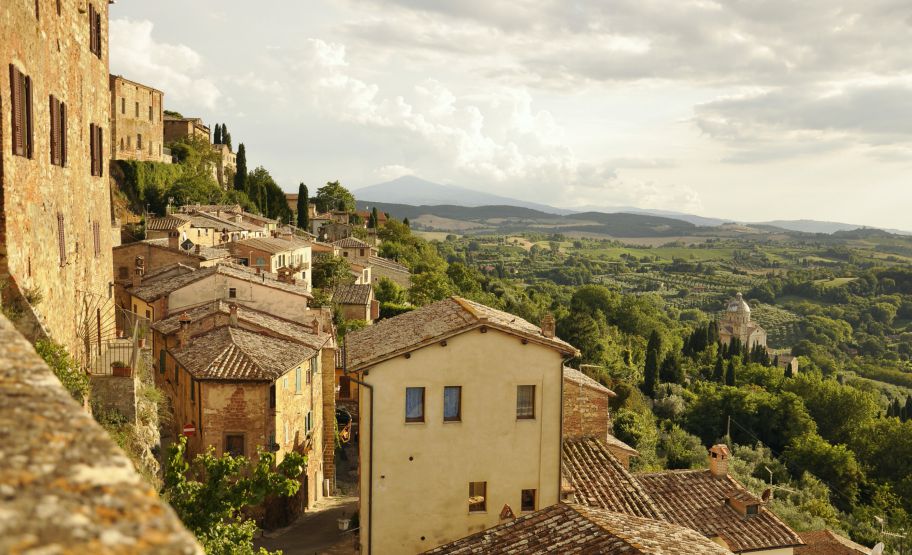
Interested in RV rental in Italy? Worldwide Campers offers RV rental in twelve Italian cities.
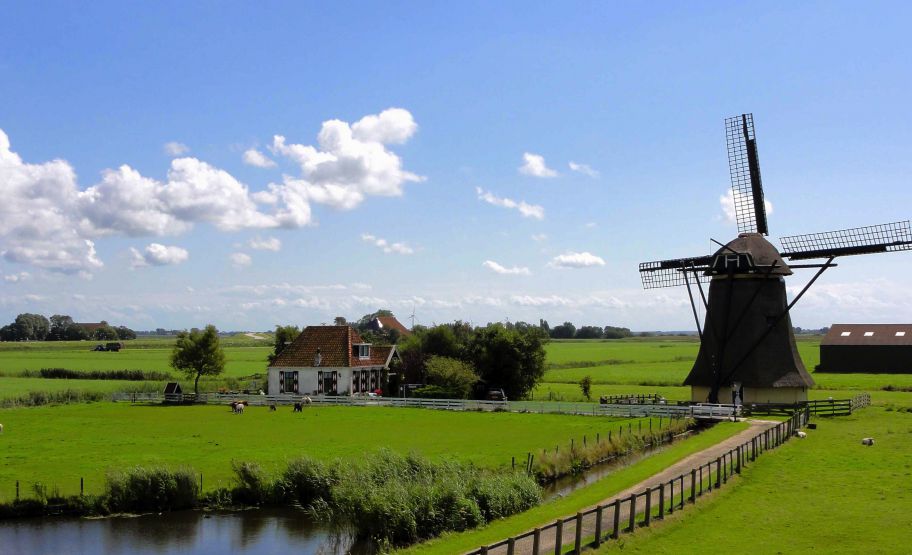
Interested in RV rental in the Netherlands? Worldwide Campers offers RV rental in four different locations.
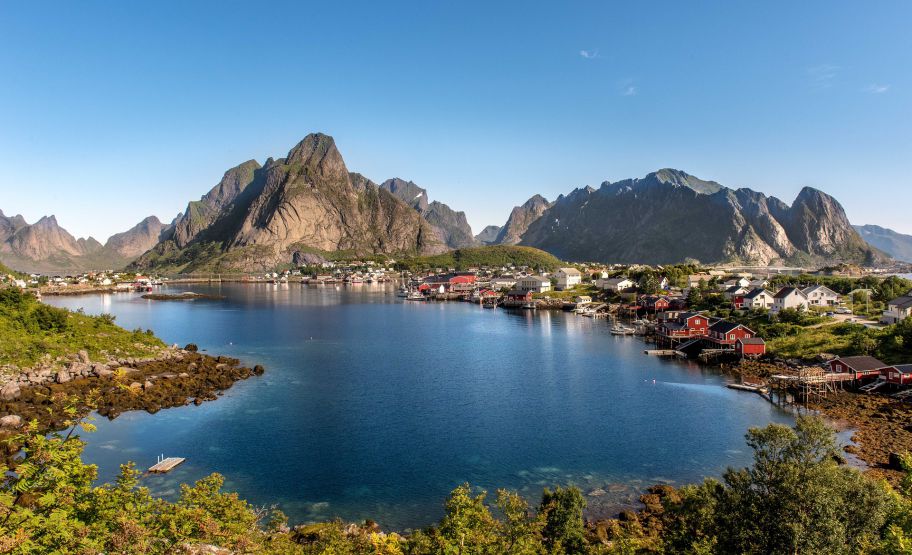
Interested in RV rental in Norway? Worldwide Campers offers RV rental in ten locations within Norway.
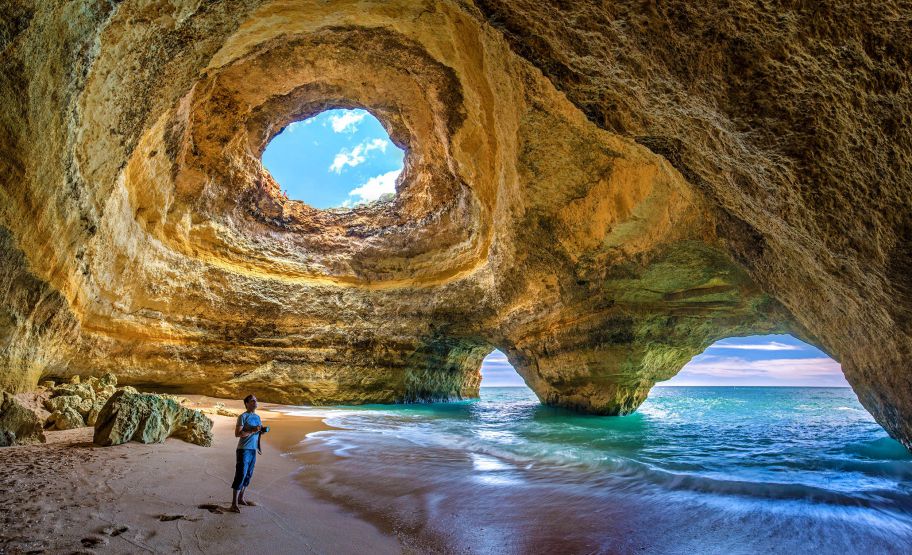
Interested in RV rental in Portugal? Worldwide Campers offers RV rental in three cities in Portugal.
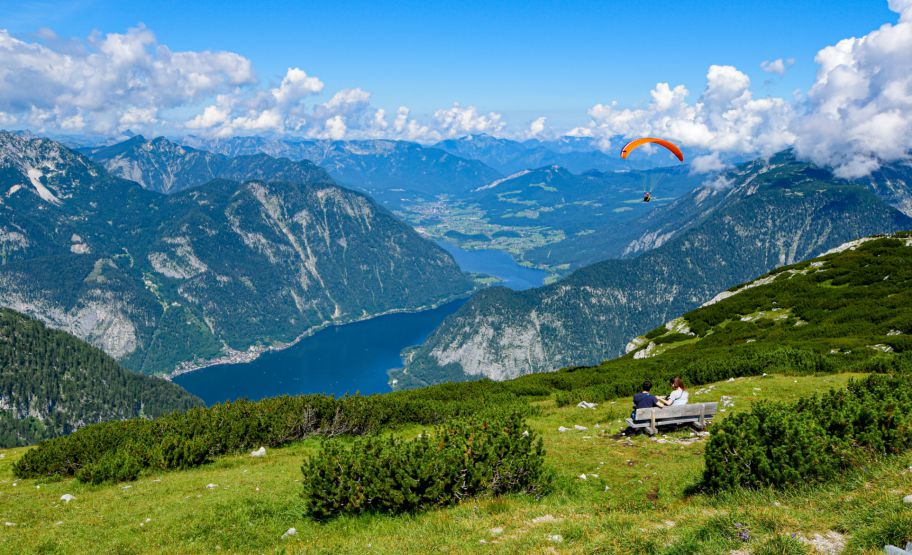
Interested in RV rental in Austria? Worldwide Campers offers RV rental in capital city Vienna.
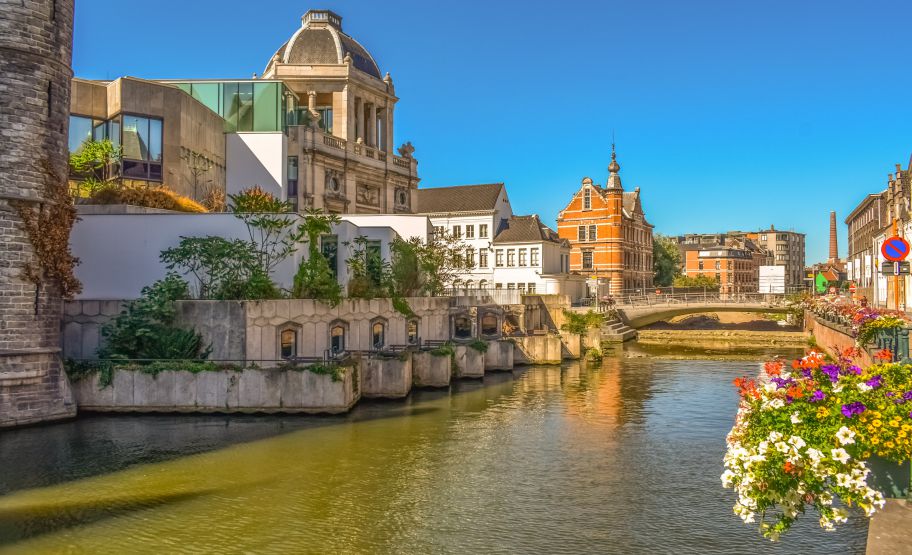
Interested in RV rental in Belgium? Worldwide Campers offers RV rental in capital city Brussels.
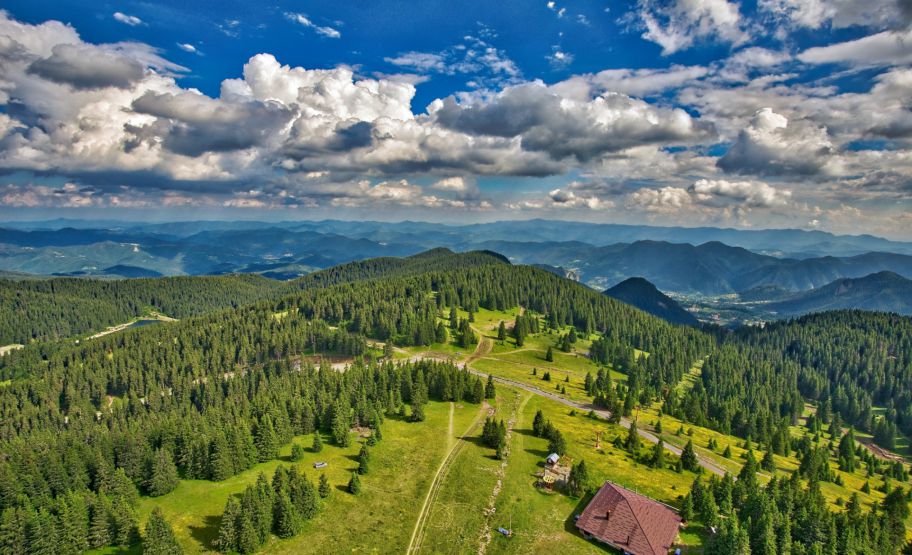
Interested in RV rental in Bulgaria? Worldwide Campers offers RV rental in capital city Sofia.
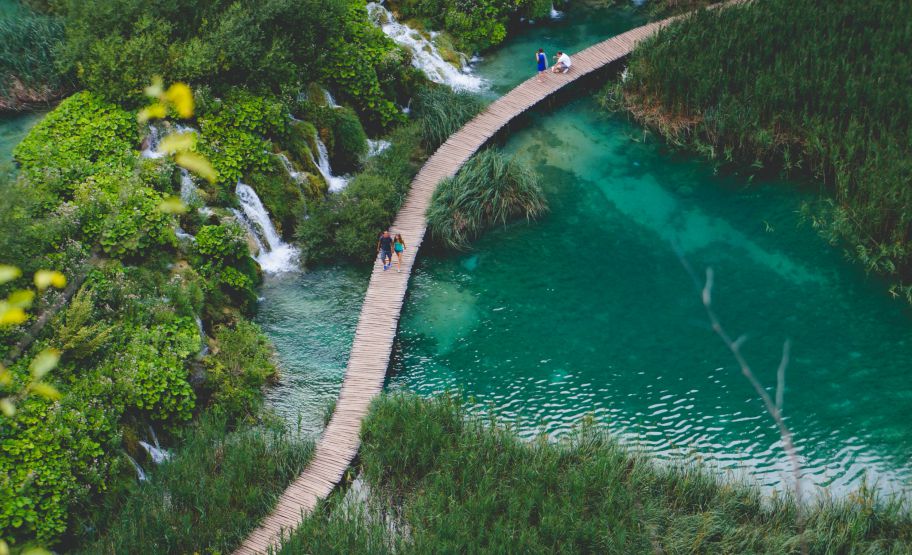
Interested in RV rental in Croatia? Worldwide Campers offers RV rental in two cities in Croatia.
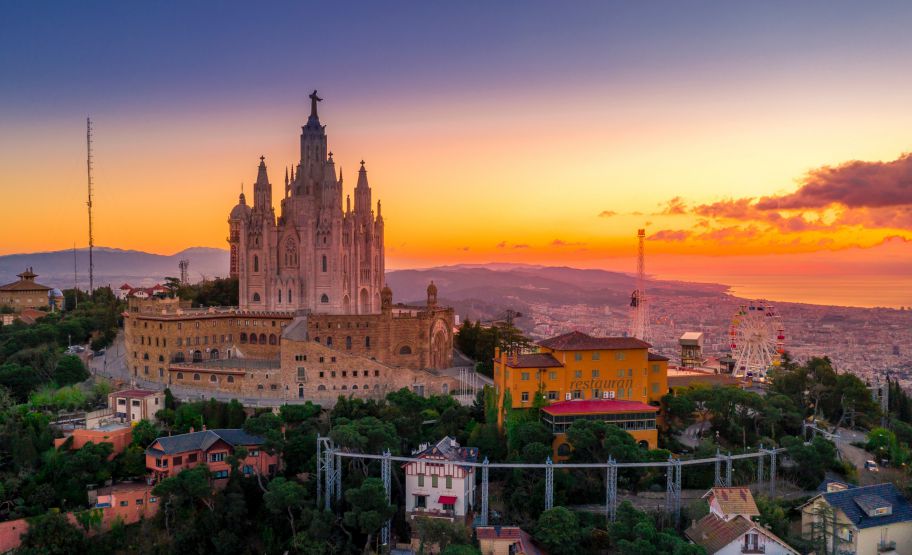
Interested in RV rental in Spain? Worldwide Campers offers RV rental in over fifteen cities in Spain.
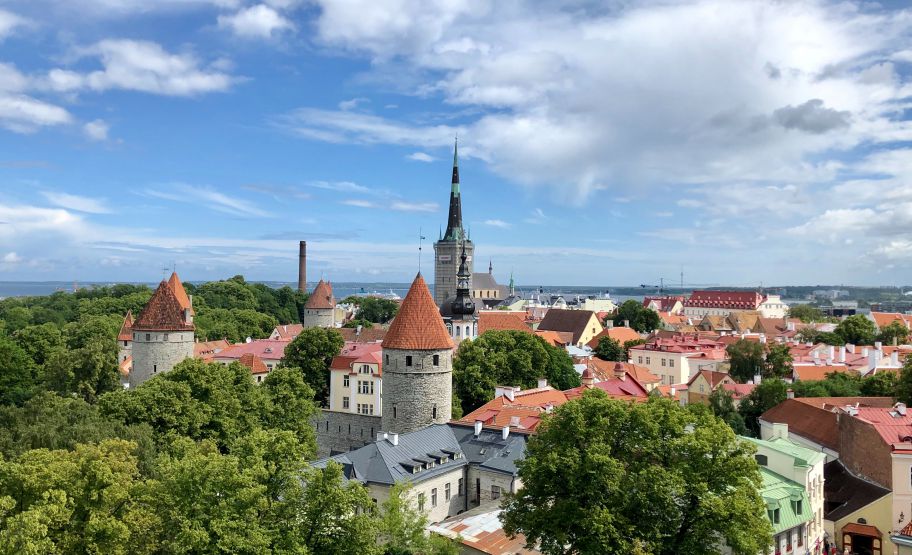
Interested in RV rental in Estonia? Worldwide Campers offers RV rental in capital city Tallinn.
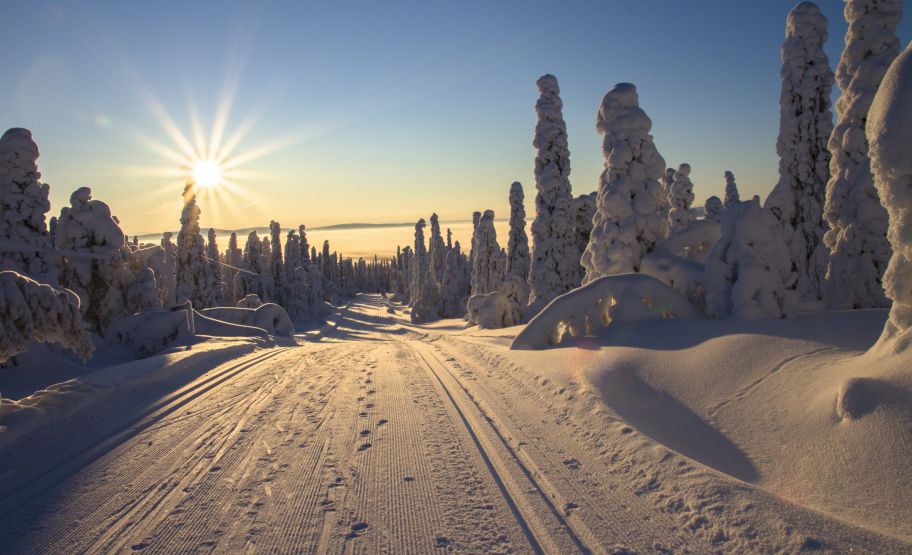
Interested in RV rental in Finland? Worldwide Campers offers RV rental at three locations in Finland.
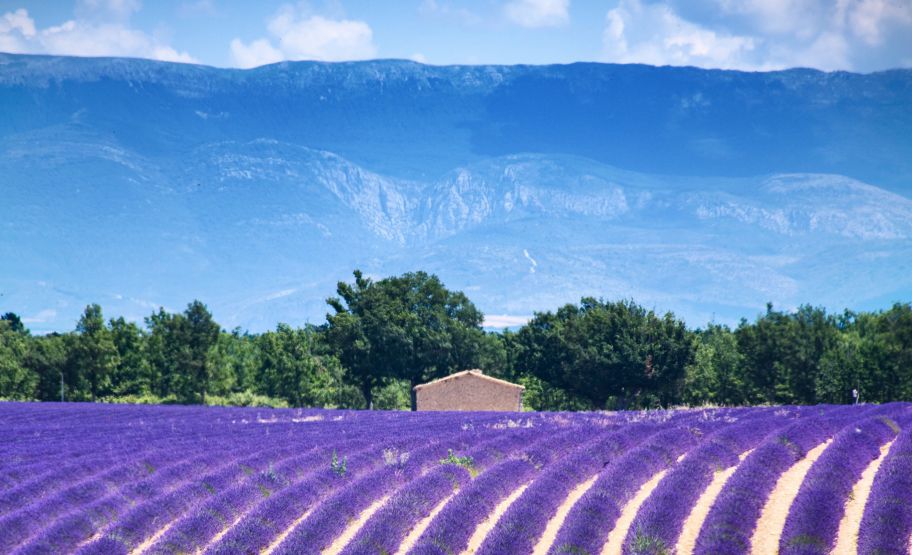
Interested in RV rental in France? Worldwide Campers offers RV rental in ten cities in France.
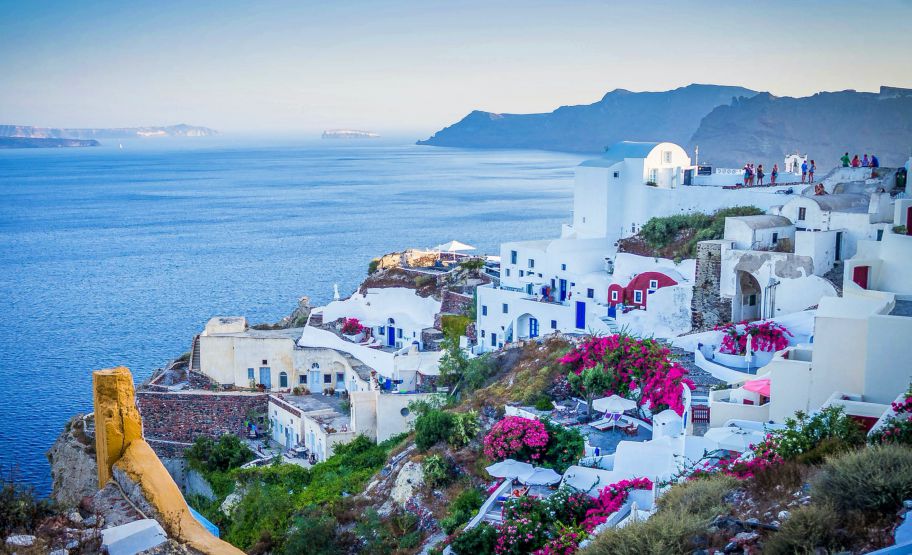
Interested in RV rental in Greece? Worldwide Campers offers RV rental in two locations within Greece.
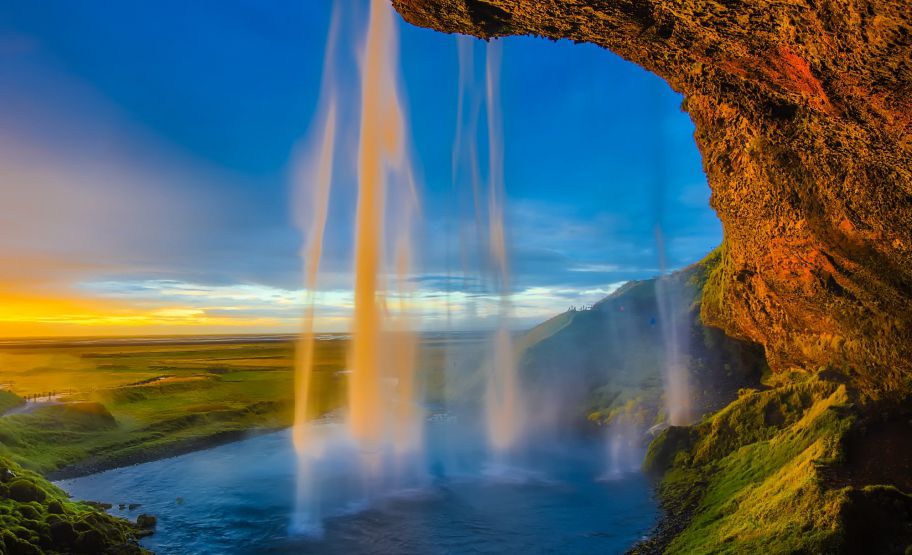
Interested in RV rental in Iceland? Worldwide Campers offers RV rental in capital city Reykjavik.
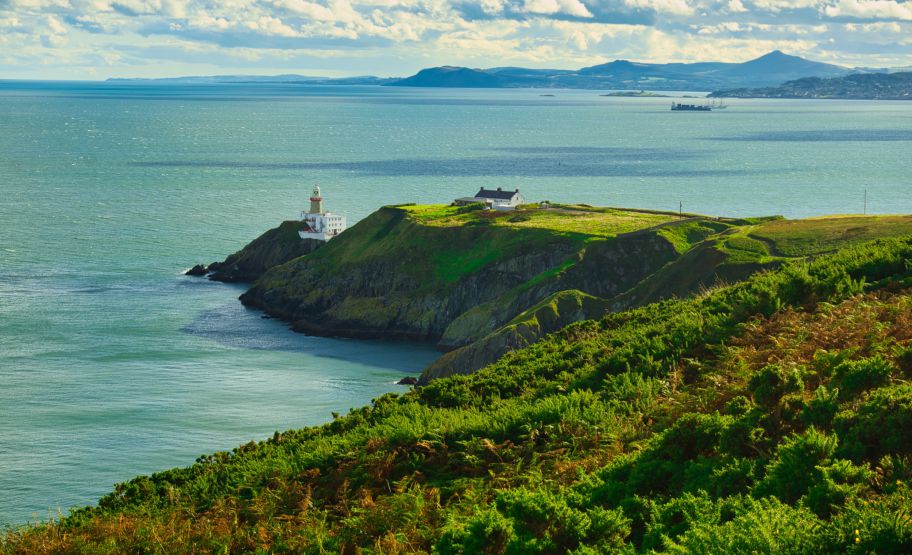
Interested in RV rental in Ireland? Worldwide Campers offers RV rental in capital city Dublin.
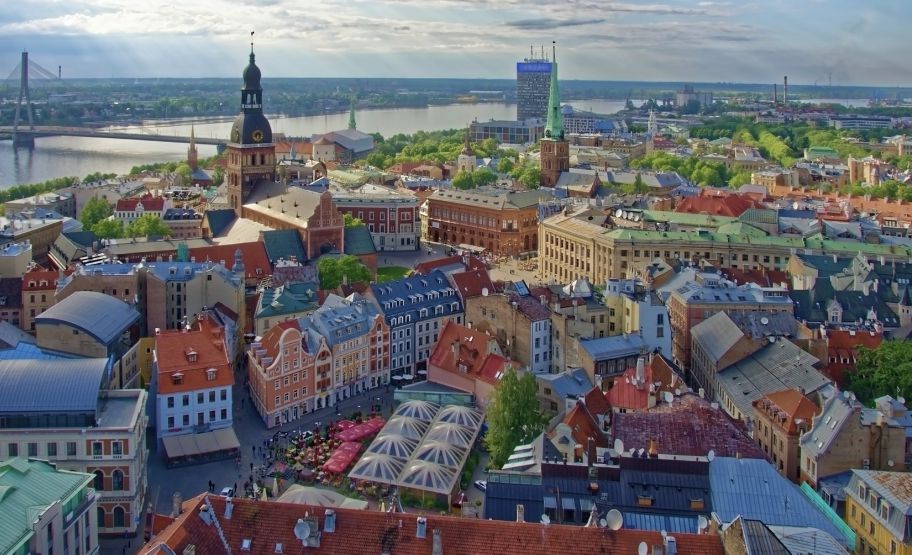
Interested in RV rental in Latvia? Worldwide Campers offers RV rental in capital city Riga.
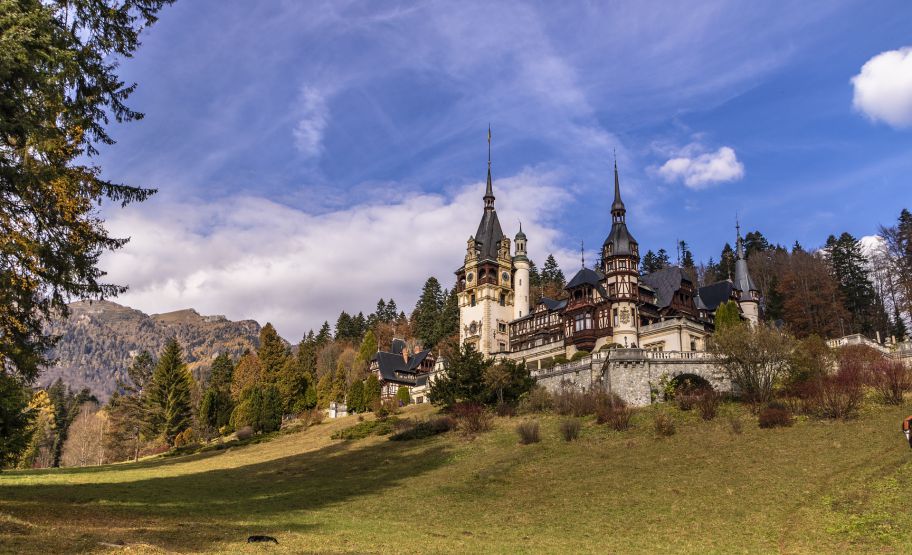
Interested in RV rental in Romania? Worldwide Campers offers RV rental in capital city Bucharest.
Interested in RV rental in Scotland? Worldwide Campers offers RV rental in capital city Edinburgh.
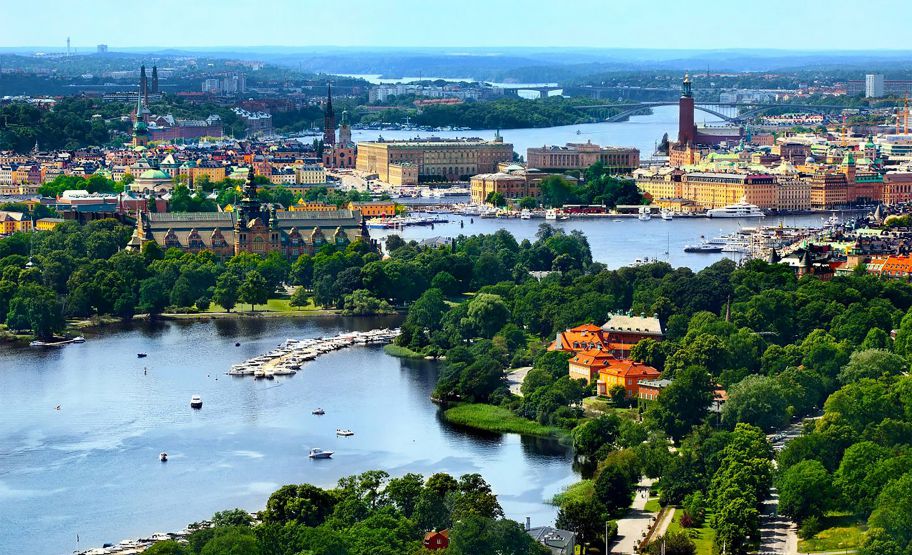
Interested in RV rental in Sweden? Worldwide Campers offers RV rental in two cities in Sweden.
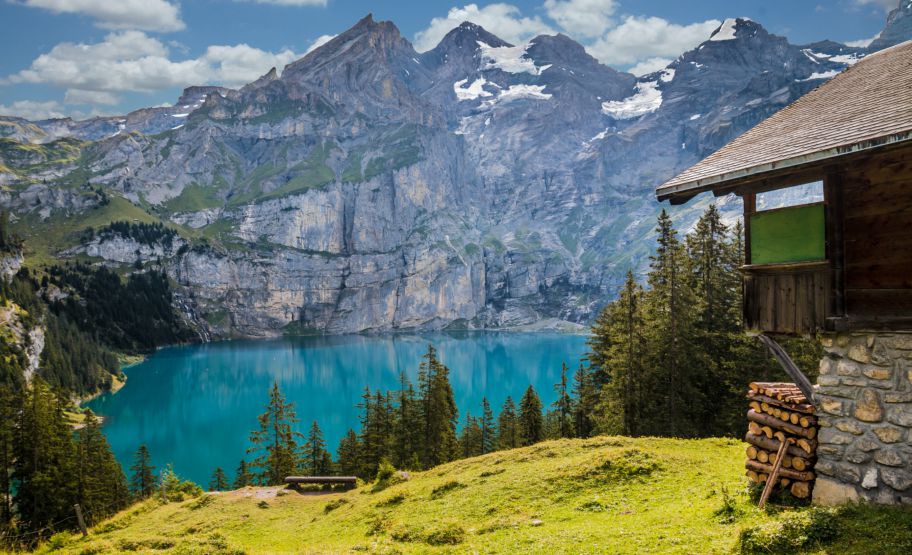
Switserland
Interested in RV rental in Switzerland? Worldwide Campers offers RV rental in two Swiss cities.
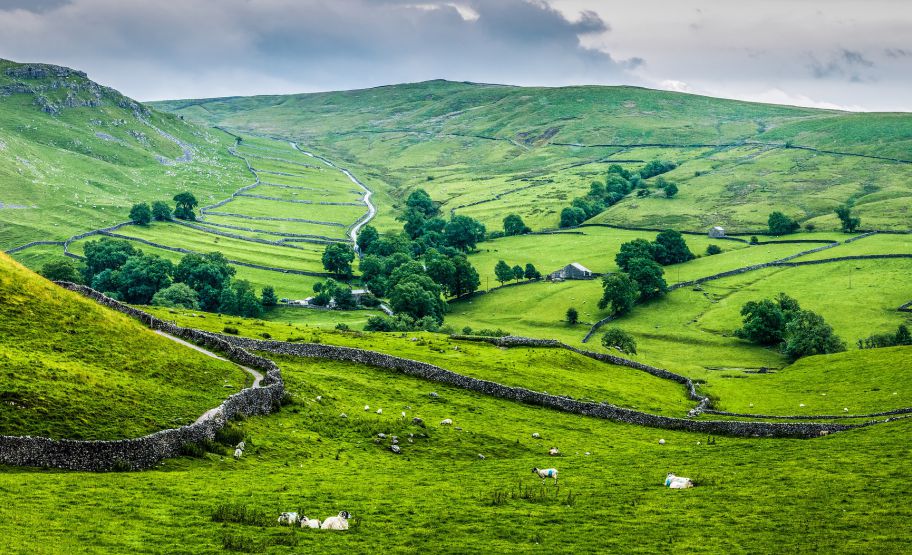
United Kingdom
Interested in RV rental in the United Kingdom? Worldwide Campers offers RV rental in more than ten UK cities.

Caravan travel in Europe

Caravan travel is an ideal way to experience Europe at your own pace, giving you the flexibility to stop wherever and whenever. If you’re planning a caravan tour through Europe, here are some must-see locations you won’t want to miss.
- The French Riviera, France: Cruise the breathtaking coast of the French Riviera by caravan, stopping in charming towns such as Nice, Cannes and Antibes for stunning beaches, museums and galleries to visit and a delicious French meal or two!
- Amalfi Coast, Italy: One of Europe’s most breathtaking drives is along Italy’s Amalfi Coast, boasting gorgeous Mediterranean Sea views from dramatic cliffs and charming towns such as Positano, Amalfi, and Ravello. Don’t forget to sample their limoncello and fresh seafood!
- Norwegian Fjords, Norway: Norway’s Norwegian Fjords boast some of Europe’s most stunning landscapes with towering mountains, cascading waterfalls and deep blue fjords. Cruise your caravan through this scenic route from Bergen to Geiranger stopping off at charming towns along the way.
- Costa del Sol, Spain: Situated along Spain’s southern coast, Costa del Sol boasts beautiful beaches, sunny weather and charming towns like Marbella, Malaga and Nerja. Drive your caravan along this coastline and experience local cuisine and nightlife while traveling by caravan along its length.
Plan ahead when embarking on your European caravan journey by booking campsites and researching driving regulations in each country. By visiting these must-see sites, your European caravan adventure will surely be unforgettable.
Caravan Campsites in Europe
There are plenty of excellent caravan campsites throughout Europe to provide a memorable camping experience, depending on what kind of experience you want to have. Here are a few suggestions:
1. Camping Bella Italia, Italy: Situated along Lake Garda in Italy, this campsite provides breathtaking views of both its waters and nearby mountains. Boasting an expansive pool complex, numerous restaurants and bars as well as an entertainment program tailored for all ages – Camping Bella Italia provides unforgettable stays!
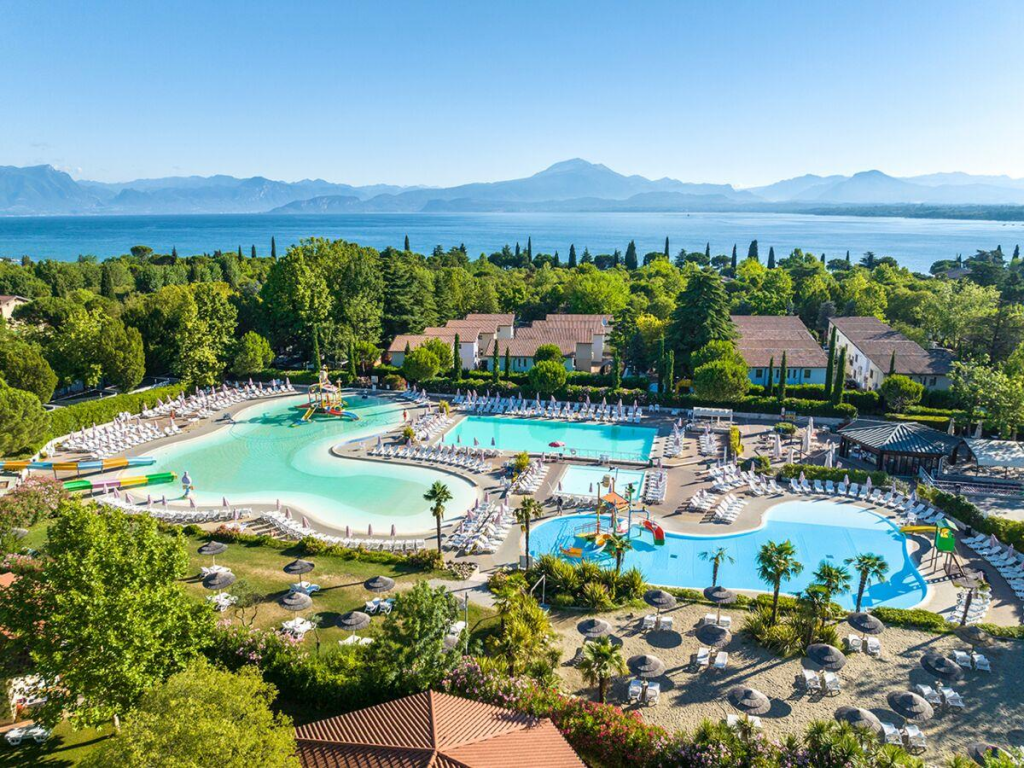
2. La Clusure, Belgium: Situated on lush countryside along the River L’Homme, La Clusure was awarded first-ever Belgium overall category winner. They have invested substantially in wheelchair-accessible caravans and their brand new pool complex featuring water slides and indoor pools – ideal for families. During summer months why not enjoy river walks, fishing trips or diving into its shallow river waters while hiking, cycling and archery activities take place within their campsite! Prices begin from £22.41 per night!

3. Camping Park Umag, Croatia: Situated on Croatia’s Istrian Peninsula and boasting access to beautiful beach and crystal-clear waters, Camping Park Umag offers pitches for caravans as well as other accommodation options and features amenities such as swimming pools, restaurants and watersports and tennis activities.

4. Camping Le Soleil, Spain: Situated on Spain’s Costa Brava, this campsite features direct access to a sandy beach and Mediterranean Sea as well as a large pool complex, restaurants and bars, plus an active program of activities and entertainment.
5. Camping Domaine de Massereau, France: Situated in the Languedoc wine region, this campsite provides spacious pitches for caravans while offering facilities such as swimming pool, restaurant and activities like horseback riding and wine tasting – starting from £23.71 per night!

Make sure to research and book caravan campsites well in advance, particularly during peak travel seasons. Also ensure to review each campsite’s individual rules regarding caravan sizes, hookups and amenities before confirming reservations.
Caravan Travel in Europe- What Do I Need to Know?
1. Driving Regulations: Before embarking on your caravan travel adventure in Europe, do some research into the driving regulations in each of the countries you will visit. Different nations may have differing speed limits, road signs and rules regarding caravan driving – make sure that you have obtained any required documentation prior to setting out!
2. Caravan Campsites and Parking: Caravan campsites can be found across Europe, but booking in advance can save time during busy travel seasons. Do your research to learn about each campsite’s facilities, prices and location before making a selection decision. Also keep in mind that some urban areas may restrict or require special permission before parking your caravan there.
3. Caravan Size and Weight Limits: Some European countries impose specific size and weight restrictions for caravans, so make sure yours complies with those in each destination country you plan to visit. Also keep in mind that certain roads, bridges, and tunnels may impose height or weight restrictions that could limit where your caravan travels.
4. Insurance: Before heading abroad with your caravan, ensure it has sufficient insurance coverage, including liability and theft/damage/accident coverage. Check with your provider to make sure their policy covers you during driving in Europe.
5. Language and Currency: Depending on where your travels take you, different languages and currencies could present challenges to communication. Therefore, it would be advisable to bring along a phrasebook or language app as aids for communication, as well as exchange currency before leaving home (if available) or use credit cards wherever possible.
6. Safety and Security: Traveling by caravan can be an enjoyable, safe way to explore Europe; however, it’s essential that you take steps to protect both yourself and your belongings. Be sure to lock the caravan when not inside it, store valuables away safely out of view, and stay aware of your surroundings at all times.
Cost of caravan travel in Europe
Cost of caravan travel in Europe depends on many variables, including your type of caravan rental or ownership agreement, length of trip, number of countries visited and personal travel style preferences. Below are rough estimates of caravan travel costs:
1. Caravan Rental: If you don’t already own one, renting one from various European companies is an affordable alternative to owning your own caravan. Costs depend on size and type of caravan rented along with duration – for instance a small caravan may cost between € 50- € 80 daily rental costs while larger and more luxurious models may reach up to € 200 daily rental costs.
2. Fuel: The cost of fuel will depend on your travel distance and caravan fuel efficiency, with costs estimated between € 1.30- € 1.50 per liter for diesel in Europe based on consumption estimates for medium-sized caravans that average 7-10 liters per 100 kilometers travelled. You can estimate your costs accordingly.
3. Campsite Fees: Campsite fees vary widely depending on your country of choice and facilities provided, though on average you should expect to spend between € 10-50 per night at a standard campsite, with more luxurious or remote sites often costing more. Some campsites may charge extra fees for electricity, water usage or amenities like these.
4. Food and Beverages: Your cost for food and drinks will depend on your travel style, preferences and cooking options. Cooking at home in the caravan may be cost-efficient but dining out at local restaurants or cafes may offer greater variety – on average you should anticipate spending between € 30- € 50 a day on this category of expenses.
5. Attractions and Activities: The cost of activities and attractions will depend on both your destination country/region as well as personal interests; museum admission or theme park tickets could prove quite pricey while hiking/cycling through nature parks may be free or low cost options.
Overall, caravan travel costs in Europe can range anywhere from several hundred euros to several thousand euros, depending on your travel style and preferences. Therefore, it is crucial that you carefully plan and budget so that your journey is enjoyable without breaking the bank.

Post a Comment cancel reply
Save my name, email, and website in this browser for the next time I comment.
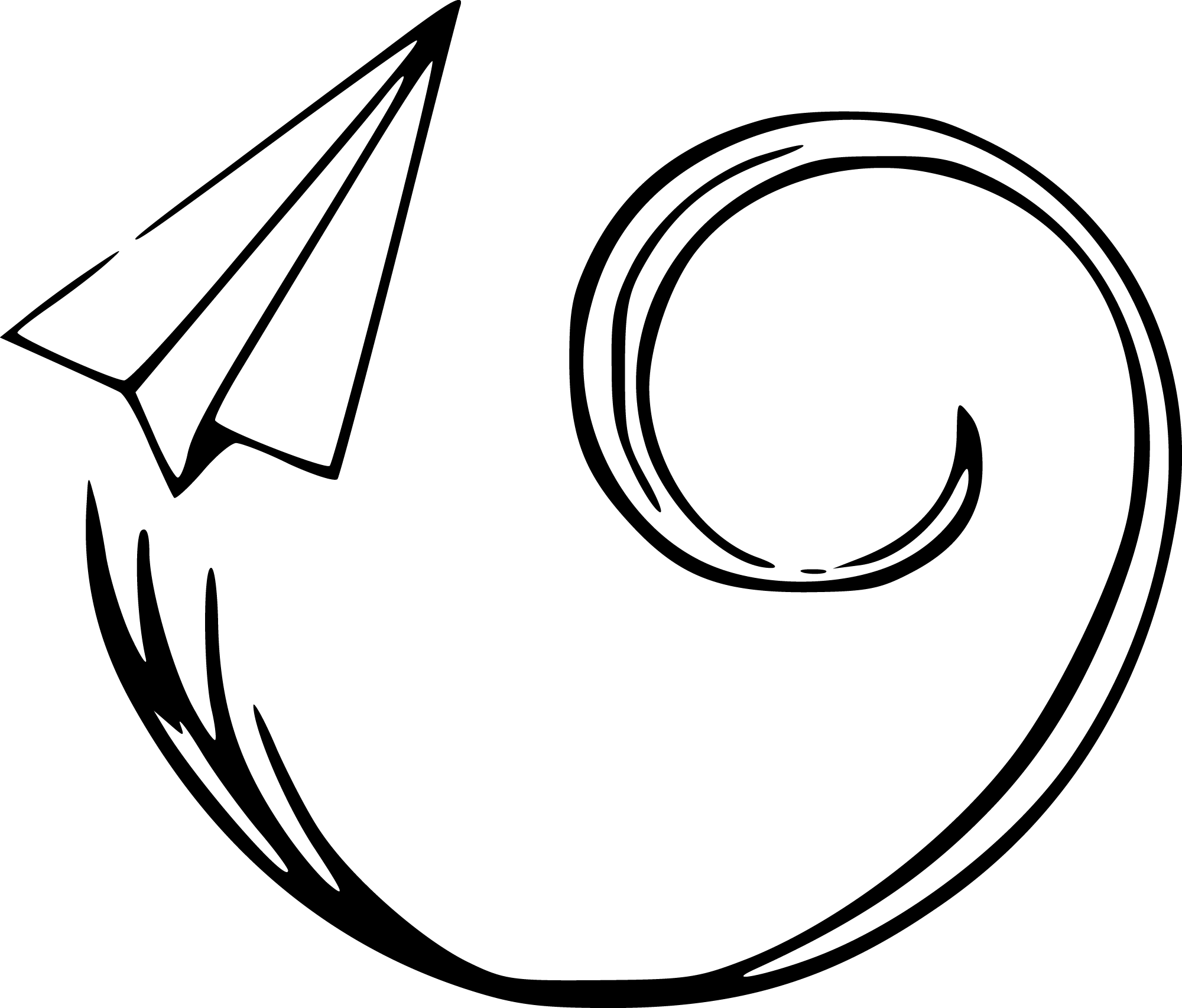
Lorem ipsum dolor sit amet, consectetur adipisicing elit sed.
Follow us on
UK to Europe: Can I Take My Caravan Around Europe?

Writer and Expert / Posted on
Share this page

In the world of travel, exploring Europe with a touring caravan is a dream for many adventurers. The allure of open roads, picturesque landscapes, and the freedom to roam from one charming destination to another is irresistible. However, before hitching up your caravan and setting off on your European adventure, it’s essential to understand the complex web of regulations governing caravan travel on the continent. From driving license requirements to weight allowances and technical considerations, navigating these rules can seem daunting at first. But fear not! In this comprehensive guide, we’ll break down everything you need to know about taking your touring caravan abroad around Europe.
Understanding European Union Laws
In Europe, touring with your caravan is a popular way to explore the continent’s diverse landscapes and cultures. However, before embarking on your adventure, it’s essential to understand the laws and regulations governing caravan travel in the European Union (EU).
The EU has harmonised many aspects of caravan regulations across its member states, but nuances still exist. One significant difference lies in the terminology used. In the UK we call these vehicles Caravans or Campers, while in the United States, these vehicles are commonly referred to as RVs, in the rest of Europe, they are known as campers also. Understanding these distinctions can help avoid confusion when navigating regulations.
European campers come in three main categories: vans, semi-integrated campers, and integrated campers. Vans, often DIY-converted or professionally converted by emerging companies, are the smallest and most popular option. They offer flexibility and convenience, requiring only a regular driver’s license to operate.
Semi-integrated campers, on the other hand, feature a cabin made by carmakers like Fiat, Citroen, or Mercedes, with a travel trailer bolted onto the rear. While larger than vans, they are still often under the 3.5-ton limit, allowing drivers to operate them with a standard license. Integrated campers, resembling American RVs, offer luxury and comfort but tend to be heavier and more expensive. However, they provide ample space and amenities for long-term travel.
It’s important to note that European campers are designed to fit European standards, reflecting the continent’s narrower roads and older city infrastructure. European campers are relatively compact, making them more suitable for navigating European roads.
While EU laws aim for consistency, there may be discrepancies between member states due to translation errors or unique national regulations. Therefore, it’s essential to familiarise yourself with the specific laws of the countries you plan to visit.
By understanding EU laws and regulations, you can ensure a smooth and enjoyable touring experience across Europe with your caravan.
Driving License Requirements
In Europe, the rules for towing a caravan vary depending on the weight of your rig, and understanding these regulations is crucial before hitting the road. Here’s a breakdown of driving license requirements you need to know:
1. License Categories: – In most European countries, the type of driving license you need to tow a caravan depends on the weight of your vehicle and trailer combination. – Generally, if the combined weight of your towing vehicle and caravan exceeds 3,500 kilograms (or around 7,700 pounds), you’ll need a specific towing license.
2. Standard License (Category B): – For towing a caravan with a combined weight under 3,500 kilograms, a standard Category B license is usually sufficient. – This license is typically obtained through standard driving lessons and tests.
3. Towing License (Category B+E): – If your caravan and towing vehicle combination exceeds 3,500 kilograms, you’ll likely need to upgrade to a Category B+E license. – This license allows you to tow heavier trailers within the limits of your vehicle’s towing capacity.
4. Stay Informed: – It’s essential to stay updated on the latest driving regulations, as they can vary between countries and may change over time. – Regularly check with local authorities or driving agencies to ensure you’re compliant with current laws.
5. Safety First: – Even if your caravan falls within the weight limits of your standard license, consider taking additional towing courses for added safety and confidence on the road. – These courses can provide valuable tips on towing techniques, vehicle maintenance, and handling different road conditions.
6. Consider Upgrading: – If you plan to tow heavier trailers or caravans frequently, investing in a Category B+E license can offer peace of mind and flexibility. – While upgrading may require additional training and testing, it can enhance your towing capabilities and open up more travel opportunities.
7. Check International Requirements: – If you’re planning to travel across multiple European countries, be aware that license requirements may vary. – Some countries may have specific regulations or restrictions for towing, so research and prepare accordingly before embarking on your journey.
8. Consult Experts: – If you’re unsure about license requirements or towing regulations in specific countries, seek advice from experienced caravan enthusiasts or professional driving instructors. – They can provide valuable insights and guidance to ensure your caravan adventures are safe and compliant with local laws.
By understanding the driving license requirements for towing a caravan in Europe, you can enjoy your travels with confidence and peace of mind.
Weight Allowances and Regulations
When it comes to touring caravans in Europe, understanding weight allowances and regulations is crucial to ensure a safe and legal journey. Let’s delve into the specifics of weight limits and regulations governing caravan travel across the continent.
European regulations categorise caravans and trailers based on their weight, each category corresponding to different driving license requirements. For instance, caravans weighing under 750 kilograms are considered lightweight and can typically be towed with a standard driving license. However, as the weight of the caravan increases, so do the licensing requirements.
Moving up the weight scale, caravans between 750 kilograms and 3.5 tons require a standard class B driving license. It’s essential to note that the combined weight of the towing vehicle and the caravan must not exceed 3.5 tons. Moreover, the gross weight of the caravan should not surpass the weight of the towing vehicle. This regulation ensures the safe operation of the towing rig and maintains stability on the road.
For caravans exceeding 3.5 tons in gross weight, drivers may need to upgrade their driving license to a B+E (BE) category. This license permits the operation of heavy trailers up to the upper limit of the towing vehicle’s capacity. While not mandatory in all European countries, obtaining a B+E license offers peace of mind and ensures compliance with evolving regulations.
Additionally, it’s essential to consider the technical aspects of towing, including the towing hitch’s weight limit. Most cars and towing hitches in Europe have a maximum towing capacity of around 2,000 kilograms. Therefore, when selecting a caravan, it’s vital to ensure that its weight falls within the towing capacity of the vehicle to maintain safety and performance.
Despite adherence to weight regulations, it’s crucial to stay informed about any changes or updates in towing a caravan laws across European countries. While EU laws provide a standardised framework, individual nations may have specific requirements or restrictions.
In summary, understanding weight allowances and regulations is paramount for touring caravan enthusiasts traversing Europe’s diverse landscapes. By adhering to weight limits, selecting suitable towing equipment, and staying informed about legal requirements, travellers can embark on memorable journeys with confidence and peace of mind.
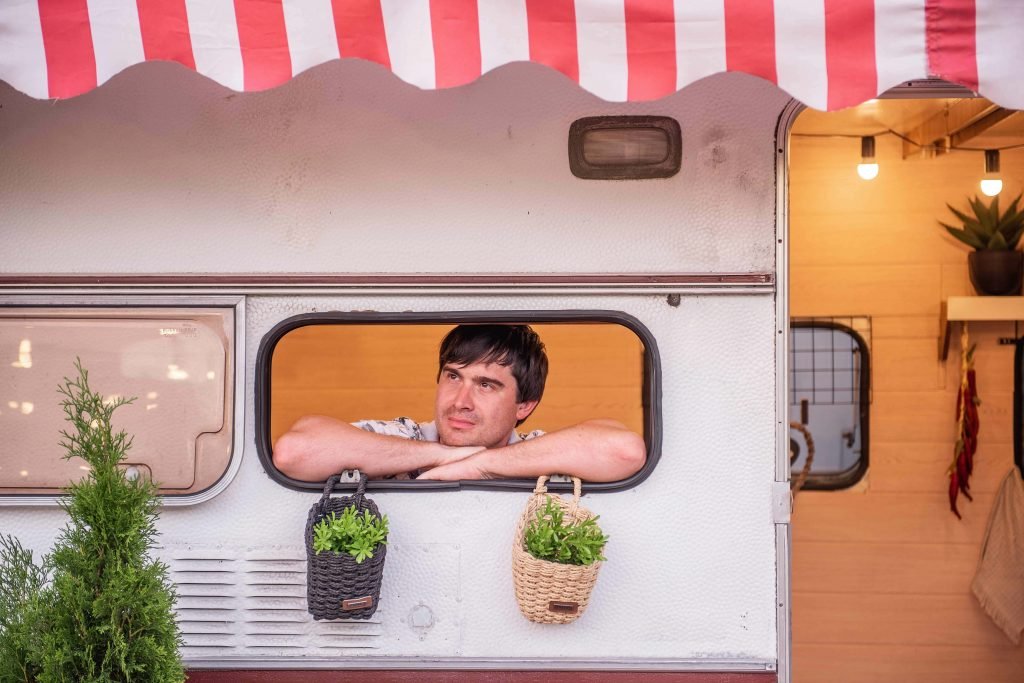
Technical Considerations
When it comes to taking your touring caravan around Europe, understanding the technical aspects is crucial for a smooth journey. Let’s delve into some key considerations:
1. Towing Hitches: Before hitting the road, ensure your towing hitch is up to the task. In Europe, most cars come equipped with towing hitches, but it’s essential to check the weight limits. Investing in a quality towing hitch that complies with European standards is advisable. Remember, safety first!
2. Electrical Plugs: European caravans typically use either a 7-pin or a 13-pin electrical plug for lighting and auxiliary power. While the 7-pin plug is common, opting for the newer 13-pin plug offers additional functionality, including powering a fridge while on the move. It’s worth considering upgrading to the 13-pin plug for added convenience during your travels.
3. Weight Limits: Understanding weight limits is paramount. European regulations stipulate weight limits for both towing vehicles and trailers. Ensure your caravan’s weight falls within the permissible limits to avoid legal complications and ensure safe towing. Exceeding weight limits can affect vehicle performance and compromise road safety.
4. Car and Towing Hitch Capacity: Check your car’s towing capacity and the weight limits specified for your towing hitch. It’s essential to match the caravan’s weight to your vehicle’s towing capabilities to prevent strain on the engine and transmission. Exceeding these limits could lead to mechanical issues and compromise your safety on the road.
5. Considerations for European vs. American Trailers: If you’re accustomed to American trailers, be aware of the differences when towing in Europe. European trailers are generally smaller and lighter, reflecting the region’s narrower roads and historical infrastructure. Opting for a European caravan ensures compatibility with local regulations and infrastructure.
6. Cost Considerations: Upgrading your car’s towing capabilities or installing a towing hitch can incur additional costs. While branded towing hitches may offer peace of mind, exploring non-branded options from reputable sources can provide a cost-effective solution without compromising quality. Consider the long-term benefits and weigh your options accordingly.
7. Maintenance and Upkeep: Regular maintenance of your towing vehicle and caravan is essential for safe and trouble-free travels. Schedule routine checks on brakes, tires, and electrical systems to address any potential issues before they escalate. Proper upkeep ensures optimal performance and prolongs the lifespan of your caravan and towing equipment.
By addressing these technical considerations before embarking on your European caravan adventure, you’ll set yourself up for a rewarding and stress-free journey.

Tips for Buying and Towing a Caravan in Europe
When it comes to buying and towing a caravan in Europe, there are several key tips to keep in mind to ensure a smooth and enjoyable experience.
1. Choose the Right Caravan: Opt for a caravan that suits European roads and regulations. Consider factors such as size, weight, and amenities. Look for caravans that meet European safety standards and are equipped with features suitable for European camping sites.
2. Research Reputable Dealers: Take the time to research and find reputable caravan dealers in Europe. Look for dealers with a track record of providing quality products and excellent customer service. Reading reviews and seeking recommendations from other caravan enthusiasts can help you find the right dealer.
3. Consider Used Caravans: Don’t overlook the option of purchasing a used caravan. Many older caravans are well-maintained and offer most of the features of newer models at a fraction of the cost. However, ensure that the used caravan meets safety standards and has been properly maintained.
4. Inspect the Caravan Thoroughly: Before making a purchase, thoroughly inspect the caravan for any signs of damage or wear and tear. Check for leaks, structural issues, and functional problems with appliances and systems. It’s also essential to ensure that the caravan’s documentation, including registration and service records, is in order.
5. Understand Towing Regulations: Familiarise yourself with the towing regulations in the countries you plan to visit. Ensure that your towing vehicle is capable of safely towing the caravan and that you have the necessary driving license endorsements. Pay attention to weight limits, towing hitch requirements, and speed restrictions.
6. Invest in Proper Equipment: Invest in high-quality towing equipment, including towing hitches, stabilisers, and towing mirrors. Ensure that your towing vehicle is equipped with the necessary towing package and that all equipment is properly installed and maintained.
7. Practice Towing Skills: If you’re new to towing a caravan, take the time to practice towing in a safe and controlled environment before hitting the road. Practice manoeuvring, reversing, and parking with the caravan attached to gain confidence and proficiency behind the wheel.
8. Plan Your Routes Carefully: Plan your caravan routes carefully, taking into account factors such as road conditions, terrain, and camping site availability. Consider using GPS navigation systems designed for caravanners, which can help you avoid narrow roads, low bridges, and other hazards.
By following these tips, you can ensure that buying and towing a caravan in Europe is a rewarding and stress-free experience, allowing you to enjoy the freedom and adventure of exploring the continent on your terms.
Legal Considerations in Specific European Countries
When taking your touring caravan around Europe, it’s essential to familiarise yourself with the specific regulations of each country you plan to visit. While there are overarching EU laws, individual countries may have their own unique requirements and restrictions.
In some European countries, such as the Czech Republic and Slovakia, there are specific rules regarding towing caravans. For instance, on highways in the Czech Republic, you’ll need a stamp for your towing car, while in Slovakia, separate stickers are required for your car and caravan. It’s crucial to research and adhere to these regulations to avoid any potential fines or penalties.
Moreover, if your caravan exceeds a gross weight of 3.5 tons in certain countries, you may need to install an electronic onboard unit to automatically pay for tolls, similar to trucks and trailers. Additionally, driving with a car and trailer in tow may result in higher toll fees and lower speed limits, varying from country to country.
Understanding these legal considerations will not only ensure compliance with local laws but also contribute to a smoother and more enjoyable touring experience. Before embarking on your journey, take the time to research and familiarise yourself with the specific regulations of each country you’ll be visiting. This proactive approach will help you avoid any potential issues and allow you to fully enjoy the adventure of touring Europe with your caravan abroad .
If you’re uncertain about the regulations in a particular country, consider consulting local authorities or reaching out to fellow caravan enthusiasts who have experience travelling in that region. By staying informed and prepared, you can navigate the legal landscape with confidence and make the most of your touring experience in Europe.
Practical Advice for Touring Europe with a Caravan
Touring Europe with your caravan can be an exhilarating adventure, but it’s essential to be well-prepared. Here are some practical tips to make your journey smoother:
1. Plan Your Route Carefully: Before setting off, research your route thoroughly. Consider factors such as road conditions, tolls, and camping facilities along the way. Invest in a reliable GPS or navigation app designed for caravans to avoid narrow roads or low bridges.
2. Choose Campsites Wisely: Look for campsites that cater specifically to caravans and motorhomes. Ensure they offer amenities such as electricity hookups, water, and waste disposal facilities. Booking in advance, especially during peak seasons, can save you the hassle of finding a spot upon arrival.
3. Pack Efficiently: Space in a caravan is limited, so pack only the essentials. Opt for lightweight, multi-purpose items to maximise storage capacity. Consider investing in collapsible furniture and storage solutions to keep your living space organised.
4. Stay Safe on the Road: Prioritise safety by adhering to speed limits and traffic regulations. Perform regular maintenance checks on your caravan, including tyres, brakes, and lights. Practice manoeuvring and reversing with your caravan before embarking on long journeys.
5. Be Mindful of Local Customs: Familiarise yourself with local customs and etiquette in each country you visit. Respect quiet hours at campsites, dispose of waste responsibly, and adhere to parking regulations. Engaging with local communities can enhance your cultural experience and foster positive relationships.
6. Embrace Flexibility: While planning is essential, be prepared to adapt to unforeseen circumstances. Weather conditions, road closures, or spontaneous detours may necessitate changes to your itinerary. Embrace flexibility and maintain a positive attitude to make the most of your travels.
7. Connect with Other Travellers: Take advantage of online forums, social media groups, and caravan clubs to connect with fellow travellers. Sharing experiences, tips, and recommendations can enrich your journey and provide valuable insights into destinations.
By following these practical tips, you can navigate Europe with confidence and enjoy unforgettable experiences on the road.
In wrapping up, touring Europe with your caravan is not only feasible but can also be incredibly rewarding. While navigating the various regulations and requirements may seem daunting at first, taking the time to understand them ensures a smoother and more enjoyable journey.
Remember, staying informed about EU laws, driving license requirements, weight allowances, and technical considerations is key to a successful trip. By following these guidelines and seeking advice from reputable sources, you can confidently explore the diverse landscapes and cultures that Europe has to offer.
So, whether you’re planning a leisurely tour through the picturesque countryside or embarking on an adventurous road trip across multiple countries, your touring caravan can be your ticket to unforgettable experiences. With careful planning, practical advice, and a sense of adventure, the open road awaits. Happy travels!
Sonia, a passionate member of the preloved family, thrives on connecting people with sustainable lifestyle solutions. With a keen eye for second-hand treasures, she embraces eco-conscious living and fosters community engagement through her work.
Related Articles
How to clean your preloved furniture.
• By Zoe Allison
Yoti: The Benefits
• By Lucy Roberts
Embrace Plastic Free July With Preloved
• By Danielle Massey
Second Hand Plants and Outdoor Furniture
• By Adele Gardner
Top Five Tips for Buying Your First Car
How does preloved work – memberships explained, how to decorate your spare room on a budget, how to make your own snow man sock.
• By Georgia